Japan on a budget: 17 ways to get more for your yen

Mar 28, 2024 • 7 min read

These top tips to low-cost living can help you stretch your budget on a trip to Japan © Monzenmachi/Getty Images
Japan has a reputation as an expensive place to travel, but it’s an image that doesn’t hold up on the ground.
With a little strategy, a visit can be very reasonable – budget-friendly, even. Many of the country’s major sights, for example, cost nothing, and free festivals take place year-round.
With these top tips on finding the best-value places to stay, the right transportation tickets and places to eat that suit all tastes and wallets, you can make your yen go further on a visit to Japan .

A guide to daily costs in Japan
- Capsule hotel room: ¥4,000 (US$30)
- Basic room for two: ¥8,000 (US$60)
- Self-catering apartment: (including Airbnb) ¥6,000 (US$45)
- Coffee: ¥400 (US$3.50)
- Sandwich: ¥300 (US$2.20)
- Beer/pint at the bar: ¥600 (US$4.50)
- Dinner for two: ¥5,000 (US$38)
- Hour of karaoke for two: ¥2,000 (US$15)
1. Consider staying in a business hotel
These economical (and, to be honest, rather utilitarian) hotels offer the best prices for private rooms with en suite facilities.
It’s possible to find double rooms for as low as ¥8,000 (and single rooms for as low as ¥6,000), though these will be a little more expensive in cities like Tokyo , Kyoto and Osaka .
Look for places that include a free breakfast buffet – they can be substantial enough to keep you going for hours.
2. Book direct at a guesthouse or hostel
Japan has fantastic guesthouses and hostels all over; not only are they generally clean and well-maintained, but friendly English-speaking staff are usually on hand to offer near concierge-level service.
A double or single room is comparable to a business hotel (but usually has shared facilities); dorm beds cost around ¥3,000.
Some places do charge extra for towel rentals, so you can save a few yen by bringing your own. Note that rates are often slightly cheaper if you book directly rather than through a booking site.

3. Sleep in a capsule hotel in the cities
Capsule hotels, which offer small rooms with enough space for just a bed, provide a budget-friendly place to spend the night.
A capsule berth costs slightly more than a dorm bed in a hostel (¥4,000 per night), but you get more privacy.
You probably wouldn’t want to stay every night in a capsule, but they’re good for saving money in cities where hotels are pricier.
4. Go camping in the summer months
If you really want to do Japan on the cheap, you can rely on its network of well-maintained campsites in rural or resort areas; prices range from ¥500 to ¥1,000 per person or tent. Note that many sites are only open in the summer.
5. Swap a night in a hotel for an overnight bus ride
Long-distance buses, like those operated by Willer Express , are the cheapest way to get around, and longer routes have night buses, which saves a night on accommodation. There are also bus passes, which can make this an even cheaper option.

6. The Japan Rail Pass is a great travel bargain
Like the famous Eurail Pass, the JR Pass is one of the world’s great travel bargains and is the best way to see a lot of Japan on a budget.
It allows unlimited travel on Japan’s brilliant nationwide rail system, including the lightning-fast shinkansen (bullet train).
There are also more regionally specific train passes that are cheaper, so examine your itinerary carefully before deciding. Purchase a pass online or from a travel agent like JTB in your home country.
7. Ride local trains for less with the Seishun 18 Ticket
The Seishun 18 is another great deal, but with very specific conditions: for ¥12,050, you get five one-day tickets good for travel on any regular Japan Railways train (meaning not the shinkansen or any high-speed limited express trains) during a limited period of a few weeks.
The Seishun 18 Ticket is only available at certain times during the year – during school holidays (the ticket is designed for students, but there’s no age cap) – and can only be purchased from JR ticket windows in Japan.
If the timing works, and you’re a fan of slow travel, this is a unique, ultra-cheap way to get around in Japan .
8. Consider renting a car to go beyond the cities
Highway tolls and petrol in Japan are expensive; however, renting a car can be economical if you’re traveling as a group or family, or are plotting an itinerary that takes you away from major rail hubs.
9. Take domestic flights with low-cost airlines
Japan has several budget carriers, like Peach , Jetstar and Air Do , that offer bus-like pricing on some routes – just be sure to factor in the time – and cost – of going to/from the airport.

10. Japan’s shrines and temples are free to visit
The vast majority of Shintō shrines in Japan cost nothing to enter. Likewise, the grounds of many temples can be toured for free (often, you only have to pay to enter the halls or a walled garden).
11. Eat cheap food and meet locals at a traditional festival
Throughout the year , festivals take place at shrines and temples and through city streets. They’re free, an excellent way to see traditional culture come alive, and are well attended by cheap food vendors.
12. Opt for hikes and walking tours
Going on a hike or a trek is free and can be the most rewarding part of your trip: explore an up-and-coming city neighborhood , walk old pilgrimage trails or rural lanes, or get up into the mountains in one of Japan’s national parks .
Japan’s cities, especially Tokyo, have some fantastic buildings designed by many of the big names in Japanese architecture. With a little bit of planning, you could chart your own architecture tour. Ask at a tourist information center or your accommodation for suggestions.
13. Spend time relaxing in the city parks
Urban parks are generally free to enter (and some gardens are, too) and are popular with locals on weekends; pack a picnic and settle in for an afternoon of people-watching. If you time your visit right, you could be bathing in the beauty of Japan's cherry blossoms .
14. Shop for cheaper goods at a local market
Many seaside towns have fish markets, some rural spots have morning markets, and some cities still have their old-fashioned open-air markets. Visits here are a great way to connect with local culture and are often a source of cheap, fresh food.
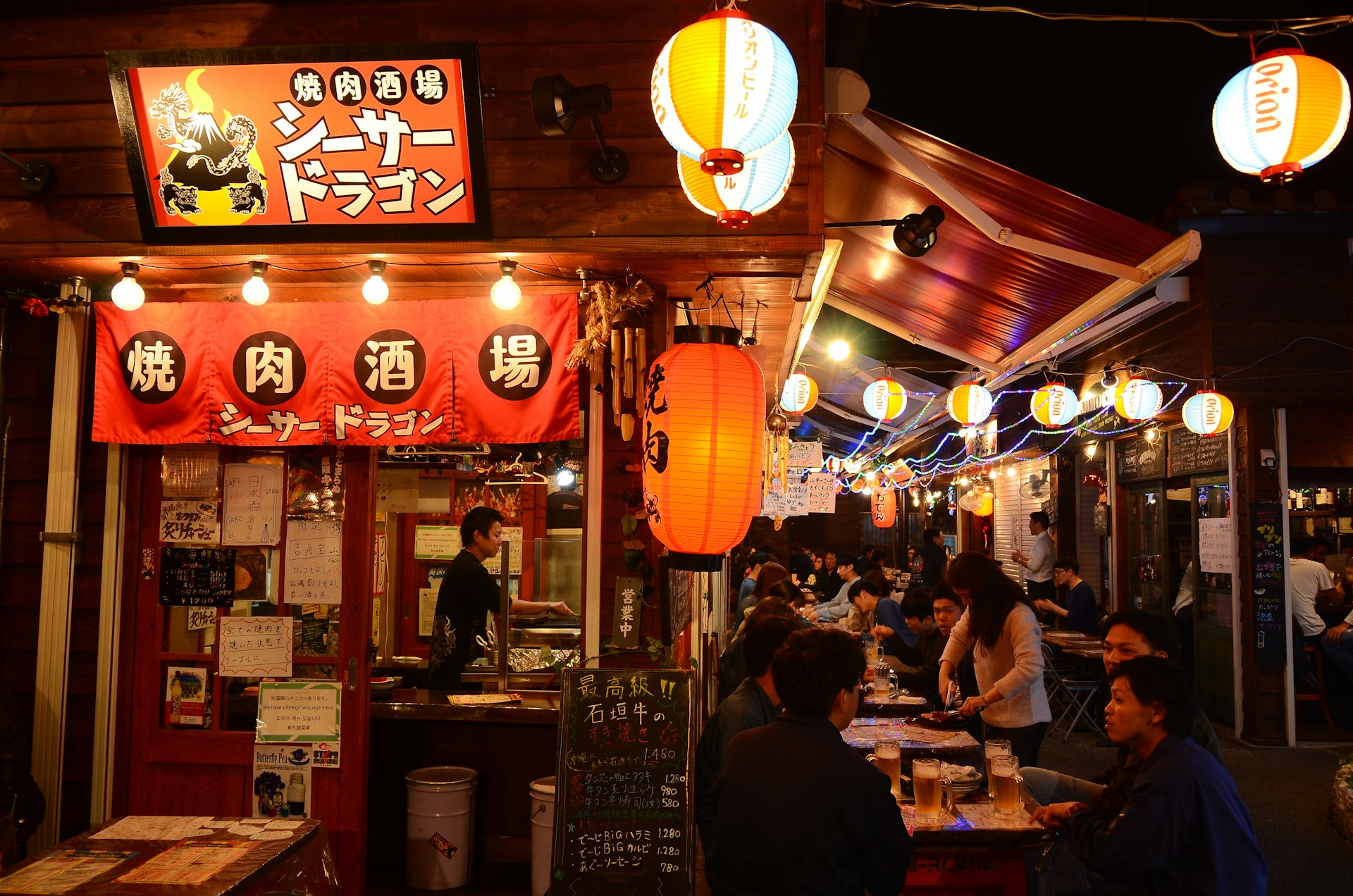
15. Choose the right dish in the right place to save money
You can get a good, filling meal in shokudō , Japan's answer to the greasy spoon, for under ¥1,000. A steaming bowl of tasty ramen can be picked up in many places for as little as ¥600.
Tachigui (stand-and-eat counter joints) sell soba (buckwheat noodles) and udon (thick white wheat noodles) for even less – starting as low as ¥350 per bowl.
Many upscale restaurants in Japan offer a smaller course at lunchtime for significantly less than they charge at dinner, so for a bargain deal have your larger meal then. In all restaurants in Japan, tea and water are complimentary, and tipping is not required.
16. Bentō are a budget alternative to a meal out
These "boxed meals," which include a variety of dishes, can be picked up for under ¥1,000 at supermarkets. Department store food halls sell gourmet ones for a little bit more; visit just before closing to buy them on markdown.
17. Get everything you need and more at the convenience store
Convenience stores are the best friend to all budget travelers. They stock sandwiches, rice balls, hot dishes and beer, all of which you can assemble into a very affordable (if not exactly healthy) meal. Accommodations always have kettles, so cup noodles are always an option.
Keep planning your trip to Japan:
Save this guide to the top things to do in Japan . Find out what to expect during every season from cherry blossoms to winter skiing . Before you book your trip, read these t op things to know before you go . Do you need a visa? Discover more here. Want to see Japan by train? Railway enthusiast John Walton shares his advice.
This article was first published May 15, 2012 and updated Mar 28, 2024.
Explore related stories
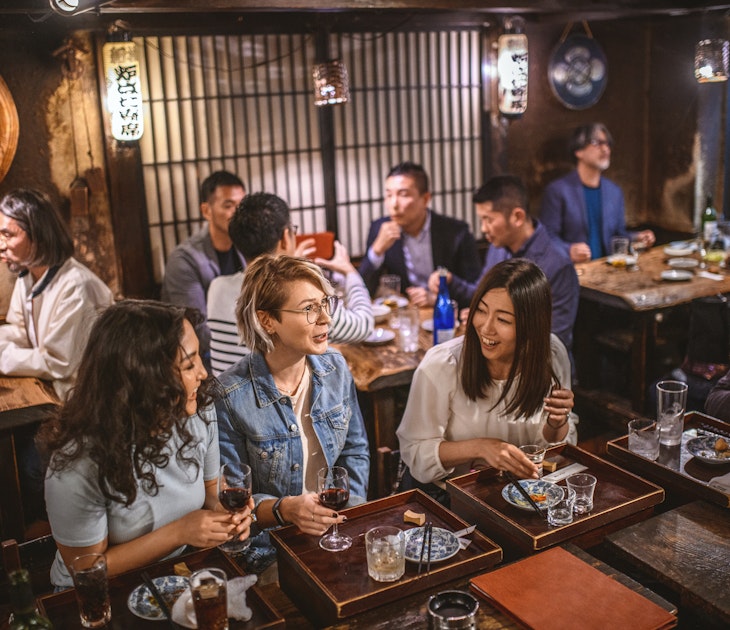
Budget Travel
Mar 23, 2024 • 7 min read
Tokyo is expensive but you don't need to max out your credit card to enjoy. Our insider tips and tricks will stretch your yen and save your bank account.
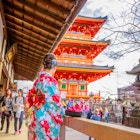
Dec 10, 2023 • 6 min read
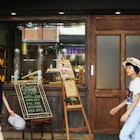
Oct 20, 2023 • 13 min read

Jan 29, 2020 • 9 min read

Jan 12, 2020 • 5 min read

Oct 28, 2019 • 19 min read

May 23, 2024 • 12 min read

May 3, 2024 • 14 min read

May 1, 2024 • 9 min read

Apr 14, 2024 • 6 min read
- Media & Industry
- Meetings & Events
- Select Language 简体中文 繁體中文(香港) 繁體中文(臺灣) India (English) Bahasa Indonesia 한국어 ภาษาไทย Tiếng Việt Singapore (English) Philippines (English) Malaysia (English) Australia/New Zealand (English) Français Deutsch Italiano Español United Kingdom (English) Nordic countries(English) Canada (English) Canada (Français) United States (English) Mexico (español) Português العربية Japan(日本語) Global (English)
- India (English)
- Bahasa Indonesia
- Singapore (English)
- Philippines (English)
- Malaysia (English)
- Australia/New Zealand (English)
- United Kingdom (English)
- Nordic countries(English)
- Canada (English)
- Canada (Français)
- United States (English)
- Mexico (español)
- Global (English)
- Fujiyoshida
- Shimonoseki
- Ishigaki Island
- Miyako Island
- Kerama Island
- Tokyo Island
- Koka & Shigaraki
- Hida Takayama
- Ginza, Nihonbashi
- Beppu & Yufuin (Onsen)
- Ginzan Onsen
- Nagasaki Islands

- Kumano Kodo
- Shikoku Karst
- Amami Oshima
- Hachimantai
- Omihachiman
- Aizuwakamatsu

- Diving in Japan
- Skiing in Japan
- Seasonal Flowers in Japan
- Sustainable Outdoors
- Off the Beaten Track in Japan
- Scenic Spots
- World Heritage
- Home Stays & Farm Stays

- Japanese Gardens
- Japanese Crafts
- Temple Stays
- Heritage Stays
- Festivals and Events
- Theater in Japan
- Japanese Tea Ceremony
- Cultural Experiences in Japan
- Culture in Japan

- Local Cuisine Eastern Japan
- Local Cuisine Western Japan
- Local Street Food
- Japan's Local Ekiben
- Japanese Whisky
- Vegetarian and Vegan Guide
- Sushi in Japan Guide
- Japanese Sake Breweries

- Art Museums
- Architecture
- Performing Arts
- Art Festivals
- Japanese Anime and Comics
- Japanese Ceramics
- Local Crafts

- Scenic Night Views
- Natural Wonders
- Theme Parks
- Samurai & Ninja
- Iconic Architecture

- Wellness Travel in Japan
- Japanese Ryokan Guide
- A Guide to Stargazing in Japan
- Relaxation in Japan
- Forest Bathing (Shinrin-yoku)

- Experiences in Japan
- Enjoy my Japan
- National Parks
- Japan's Local Treasures
- Japan Heritage
- Snow Like No Other
- Wonder Around Japan

- Visa Information
- Getting to Japan
- Airport Access
- COVID-19: Practical Information for Traveling to Japan
- Anime Tourism
- Countryside Stays
- Accessible Tourism
- Hokkaido Great Outdoors
- Scenic World Heritage in Tohoku
- Shikoku’s Nature and Traditions
- Southern Kyushu by Rail

- Traveling by Rail
- How to Travel by Train and Bus
- JR Rail Passes
- Scenic Railways
- Renting a Car
- Sustainable Travel in Japan
- Travel Brochures
- Useful Apps
- Online Reservation Sites
- Eco-friendly Accommodation
- Luxury Accommodations
- Traveling With a Disability
- Hands-free Travel
- How to Book a Certified Tour Guide
- Volunteer Guides
- Tourist Information Center

- Japanese Manners
- Spring in Japan
- Summer in Japan
- Autumn in Japan
- Winter in Japan
- Cherry Blossom Forecast
- Autumn Leaves Forecast

- Japan Visitor Hotline
- Travel Insurance in Japan
- Japan Safe Travel Information
- Accessibility in Japan
- Vegetarian Guide
- Muslim Travelers
- Safety Tips

- JAPAN Monthly Web Magazine
- Arts & Cultures
- Nature & Outdoor
- Festivals & Events
- Insider Blog
- Things to do
- Local Guides
- Food & drink
- Traditional
- Hokuriku Shinetsu

My Favorites
${v.desc | trunc(25)}
Planning a Trip to Japan?
Share your travel photos with us by hashtagging your images with #visitjapanjp
GUIDE Guide to Traveling Japan on a Budget A guide to budgeting your trip to Japan
- Stories & Guides
- Guide to Traveling Japan on a Budget
Plan in advance to make your trip to Japan affordable
You may have heard that Japan is an expensive place to visit, but don't be discouraged. With some advance planning, Japan is an affordable destination for even the most budget-conscious traveler. Take some time to decide which options best suit your budget.
There are a wide variety of budget accommodation options, transportation passes and sightseeing discounts available. Browse our list for more details.
Transportation
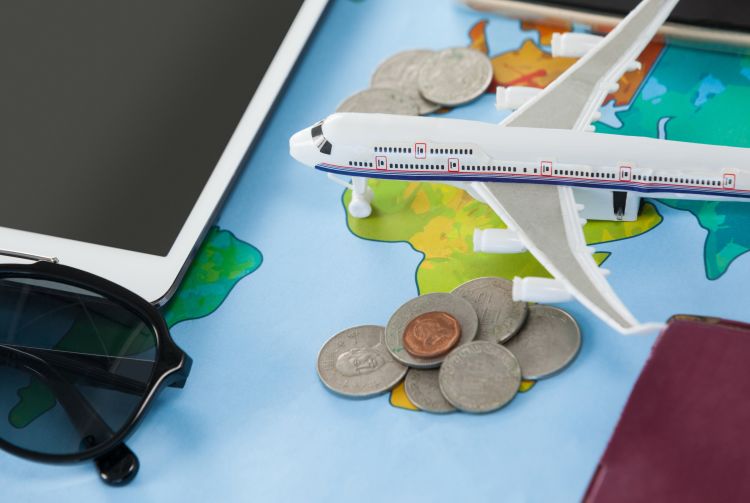
Long distance buses
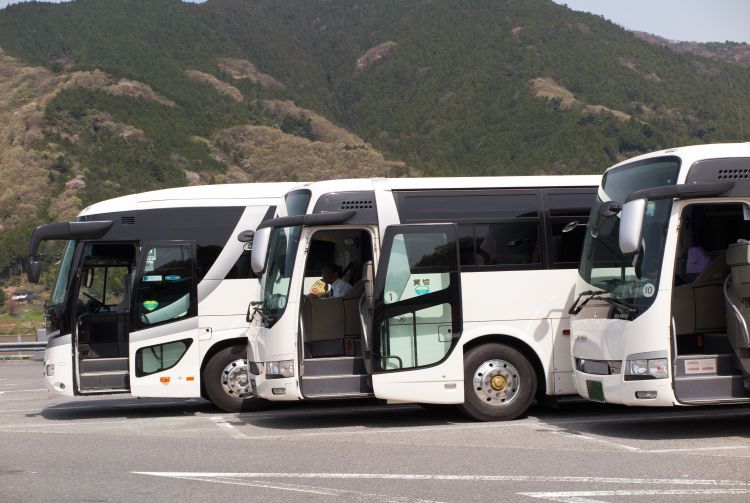
Ferries and passenger boats
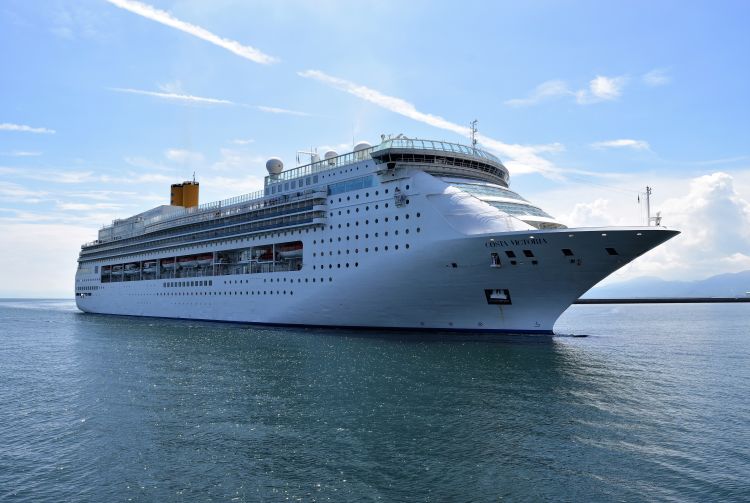
Accommodations
Dining out in Japan doesn't have to be expensive, and is often better value for money than most other world capitals. Wherever you travel, restaurants in popular tourist areas will always cost more. Follow the locals and you will generally find both lower prices and more authentic Japanese cuisine. Avoid restaurants that don't list their prices outside the door. Budget dining can usually be enjoyed at more casual establishments such as izakaya (Japanese pubs), shokudo (small casual restaurants, often with set meals), kaitenzushi (conveyor belt sushi) and okonomiyaki restaurants.
Comparing Prices
Improvements in the foreign exchange rate mean more favorable prices for overseas visitors to Japan. The price chart on this page is designed to give an idea of what you can expect to pay for a variety of everyday and travel-related items in Japan.
The latest information may differ, so please check the official website.
* The information on this page may be subject to change due to COVID-19.
- Story & Guide
- Travel Tips
Did this information help you?
out of found this information helpful.
Thank you for your feedback.
Recommended for you.

Please Choose Your Language
Browse the JNTO site in one of multiple languages
solo female full time budget travel around the world
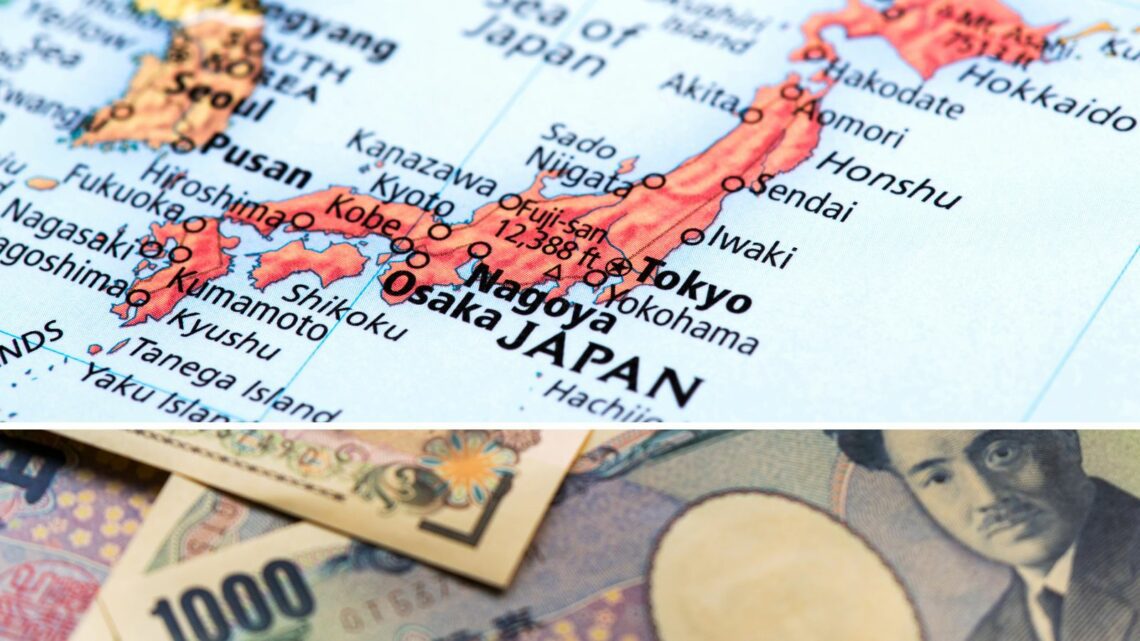
Japan Budget Travel Guide (2024)
Japan has a reputation for being an expensive destination, but actually it can be very affordable!
I’ve visited Japan twice for a total of nearly six months and spent only about $48 USD/day using these very tips in this Japan budget travel guide. The key to traveling Japan on a budget is to travel SLOW, to take advantage of cheap transit and to find discounted meals and souvenirs.
Keep reading to learn how to save money on Accommodation, Transit, Food and Tourism while traveling in Japan.
Table of Contents
Japan Budget Accommodation Guide
There are three main ways to save money on accommodation:
- Stay for a month or more and book a short-term apartment or room.
- Do a work exchange where you volunteer in exchange for food/room.
- Stay in capsule hotels and hostels.
Using one or all of these (depending on how long you’re staying in Japan) will save you BIG MONEY over time.
1. Stay for a month or more.
This is what I did to save money during my multi-month trip in Japan. It DOES mean you have to pick a good, central location where you can do day trips, but the upside is that you get to settle into a “local life” for a bit.
The two main ways to find short-term accommodation is by something like AirBNB or VRBO, or by booking a room in a sharehouse.
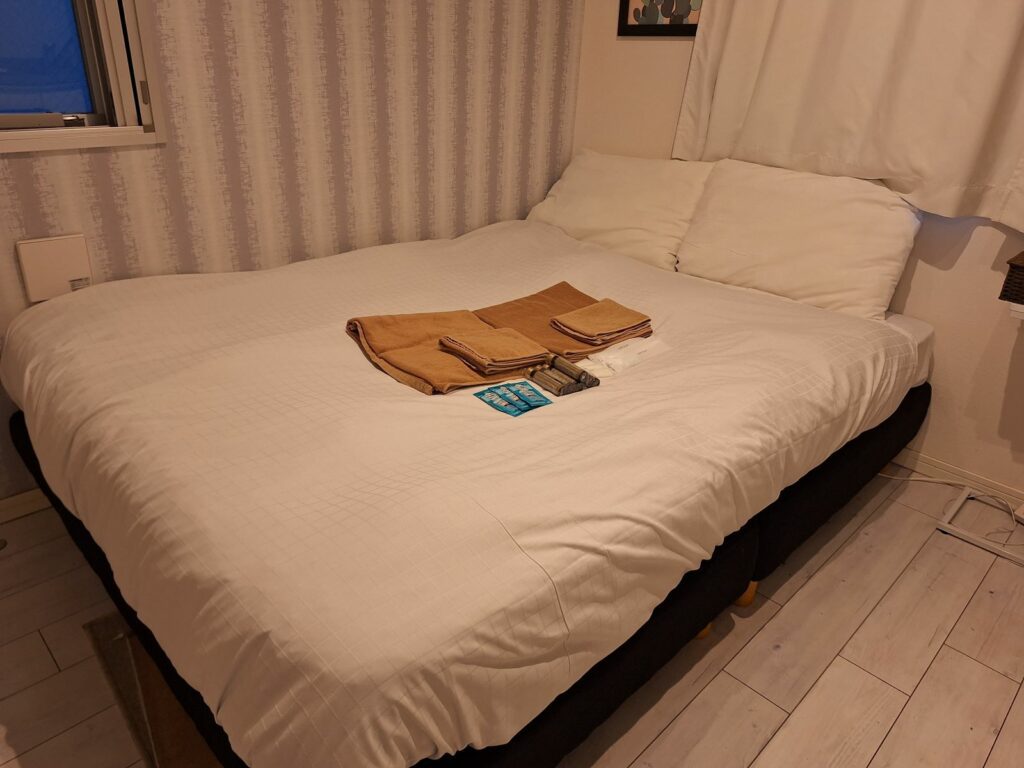
AirBNBs in Japan are like everywhere else: you can search for specific amenities and locations you want to stay in, and then book something. Usually, if you book for 28 days or longer you’ll get a discount of 10% or more! The downside is that the cheaper AirBNBs tend to be smaller, much smaller than you may be used to. The upside is that you’re paying everything at once, with no extra fees.
I stayed in an AirBNB in Tokyo for a month and paid only $877 USD ! If you stay outside the major cities in a suburb or small neighboring city, it can be even cheaper. For instance, I’ve stayed 20 minutes outside of Osaka in an AirBNB for under $500 USD/month.
Sharehouses are like dorms where people rent rooms in an apartment and get access to a shared kitchen and bathroom. They can be BIG building, with 40+ rooms, or you can find a smaller one with 4 or 5 rooms.
The upsides to a sharehouse is: they’re foreigner-friendly, you don’t have to pay key money or a deposit like with a normal apartment, and you get to be part of a community. They’re also cheaper than renting your own apartment, overall.
The downsides to a sharehouse is: you’re sharing space with strangers, which can be dicey if you have bad roommates, you can only book a room a few weeks ahead of time (bad for people who like to plan) and the buildings themselves can be rundown or nasty.
Some sharehouse companies that have good reviews from travelers include: Sakura House and Oak House . Oak House also does events for guests to meetup!
2. Work exchange (pet sitting, Workaway)
I don’t have experience with this myself yet, but I do have some friends who did work exchanges in hostels or farms in Japan. They worked for about 20 hours a week and got a free room and at least one meal a day in exchange!
If you’re interested in this option, check out Workaway for volunteering gigs. I like this platform because it’s easy to search for specific destinations and types of volunteering opportunities, and you can put down that you’re going to specific places and hosts can contact you if they think you’d be a good match.
Sign up for Workaway using my link and get 30 days free !
You could also try pet sitting or house sitting, where you watch over someone’s pets/house in exchange for a place to stay. I have LOTS of friends who use this option to travel the world and stay places for free! If you love pets, it’s a particularly good opportunity to live like a local and also hang out with dogs, cats, birds, or even farm animals.
Trusted Housesitters is one of the biggest housesitting directories with listings all around the world. If you sign up using my link you’ll get 25% off !
3. Stay in capsule hotels and hostels.
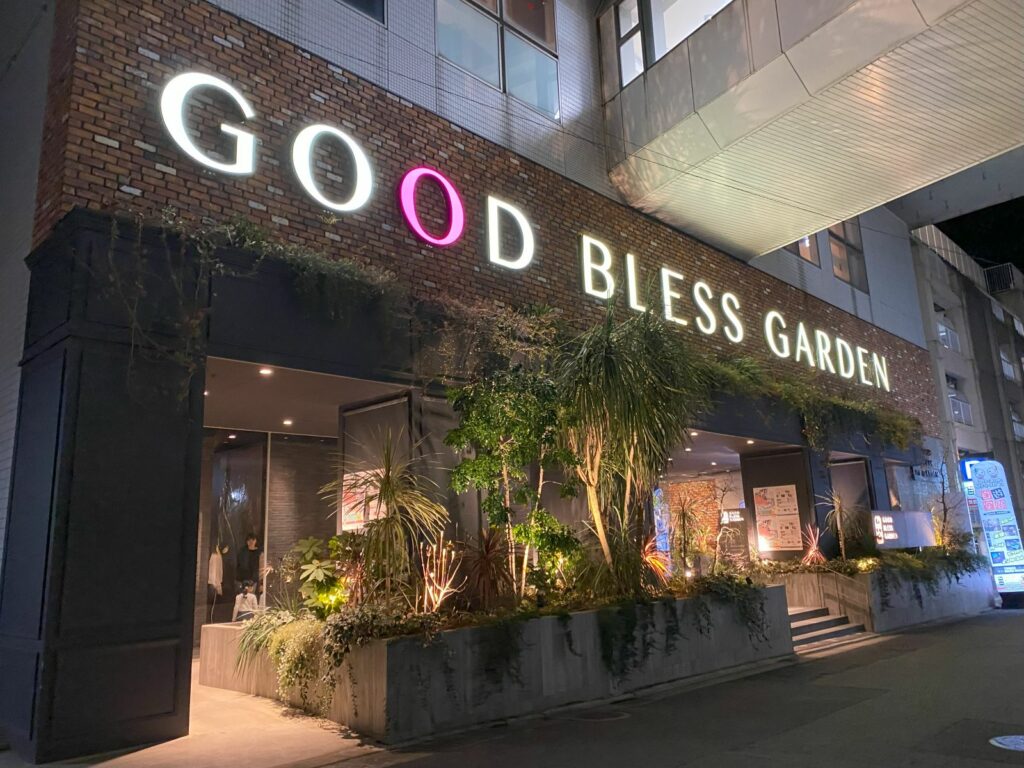
Hotels can be expensive, so if you want to travel fast to different cities but still save money, you should aim for staying in hostels and capsule hotels.
Hostels are shared accommodation: you book a bed in a dorm and have shared bathrooms, kitchens, and communal areas. They’re great ways to meet other travelers, and often hostels will have free tours or events for guests as well! If you’ve never stayed in a hostel before and don’t know where to look, I have some recommendations here for Tokyo, Nagoya and Osaka .
Capsule hotels are similar to hostels in that you stay in a shared dorm space and use shared bathrooms, but they’re aimed more at business travelers than backpackers. They have a lot more amenities, including free pajamas! And they usually don’t do events or tours. If you’re looking for a slightly more upscale place compared to a hostel, then a capsule hotel might be a good option for you.
I’ve stayed in great capsule hotels in Hiroshima and Yonago for an average $30 USD/night; much more affordable than a regular hotel!
Japan Budget Transit Guide
The next biggest expense tends to be Transit. Train tickets, especially Shinkansen (bullet train) tickets, can be very expensive! A ticket from Tokyo to Osaka costs about $100 USD one way for a 2.5 hour trip.
On the other hand, an intercity bus from Tokyo to Osaka can cost only about $30 USD and takes about 7 hours. If you have the extra time, you can save a LOT of money by taking buses over trains!

There’s several big bus companies that go between cities, but my favorite is the JR buses (run by the train company!). You can check for routes and book tickets using 12Go , or go to the bus station and book in-person.
Another option for traveling long distances is using discount airlines. There’s a few operating within Japan and if you book far enough ahead of time, you can snag cheap tickets! For instance, a flight from Tokyo to Osaka can be as low as $35 USD for a 1.5 hour flight!
And finally, if you really want to take the train, try buying discount train passes. However, DON’T buy the JR Pass unless you’re planning on using the train every day to go long distances. It’s actually much cheaper to buy a pass for a smaller area or a specific train line.
For instance, when I was staying in Fukuoka I got a 3 day train pass for the north Kyushu region on Klook for about $75 USD. Compared to the normal train ticket prices, I saved about $15 by getting the pass!
Japan Budget Food Guide
Food doesn’t have to be super expensive in Japan! If you make reservations at 3 star restaurants every day and eat Kobe beef steak every chance you get, then yes, it will be pricey. And honestly, if you’re a foodie then you’re probably resigned to spending money on food anyway.
But if you’re not picky about food and just want to try some local meals at good prices, then you can definitely do that!
First, go to local restaurants . These may not have English menus and you may not see a bunch of tourists. To find them, either ask around for recommendations or search Tabelog for specific places.
Tip: A good budget chain restaurant with an English menu is Sukiya , which has beef bowls and Japanese breakfasts for under $5 USD!
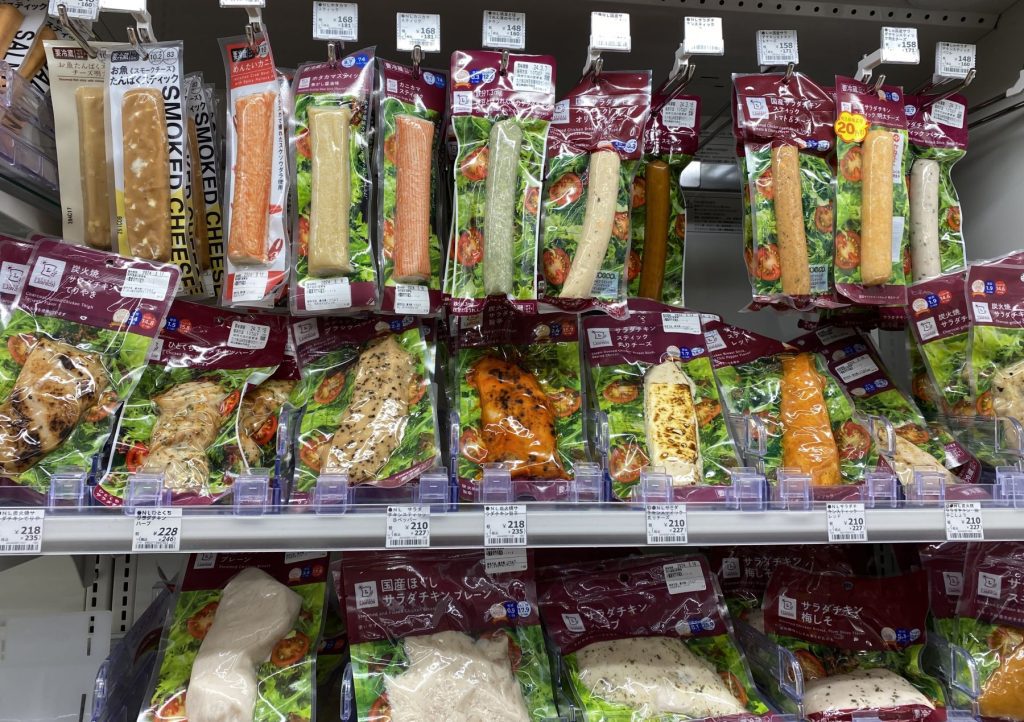
Second, go to convenience stores . Japanese convenience stores (Family Mart, 7-11, Lawson, Minimart and more) have a wide range of food for good prices, from sandwiches to soups to pasta to rice balls! Here’s some prices for Tokyo convenience stores to give you an idea of what’s available.
Third, if you have an apartment or a hostel with a kitchen, go shopping for groceries ! Shopping in grocery stores is a great way to see what local people are eating and try some new things that you may not have at home, at good prices! Grocery stores also have much of the same things as the convenience stores, but slightly cheaper!
You can also snag clearance deals at grocery stores in the evenings! Ready-made food as well as discounted veg and fruits will start showing up around 5:00 pm and later.
Japan Budget Tourism Guide

Luckily, most major tourist things in Japan are pretty cheap! Even Tokyo DisneySea is relatively cheap compared to the US Disney Resort ticket prices, at under $100 USD for a one day ticket.
To get the best deals, check websites like Klook for discounted entrance fees, tours, transit, and more! This also works to get around websites that don’t accept foreign credit cards (like Tokyo Disney Resorts).
Be sure to also visit tourist information centers for info on local events, festivals or tours. Websites like Tokyo Cheapo are good for specific cities as well. I like that they also list things like flea markets and concerts.
Cheap souvenirs
This is another area where things can get expensive– if you want a Japanese knife or sword, then you’re going to be spending lots of money. However! If you just want some cute stickers, postcards, magnets, tote bags, etc.: go shopping at 100 yen stores (like Daiso), thrift stores, and flea markets! Not only will you find some amazing things, but it’ll be way more unique than a random whatever from a tourist souvenir store.

Also! If you want to buy a vintage kimono, you can get them at GREAT prices at flea markets! The one I visited in Nagoya had piles and PILES of vintage kimonos for a mere ¥500!
For things like skin care, KitKats and kooky souvenir shirts, check Don Quijote stores. They’re huge and have a lot of stuff!
Another fun souvenir that’s FREE is collecting souvenir stamps from train stations and tourist places! Check out where to find eki stamps and how to collect them .
SIM cards and internet
I guess it’s still a popular tip to get a pocket wifi thing, but honestly I think that’s just leftover from when people didn’t have eSIMs and wifi wasn’t as abundant. If you’re traveling by yourself or with one other person, it’s cheaper to get an eSIM from Airalo and just use that. Almost everywhere has free wifi, and the eSIM works great for maps and Whatsapp messages.
Thanks for reading! I hope this Japan budget travel guide helps give you some ideas on how to save money during your trip.
Save to Pinterest
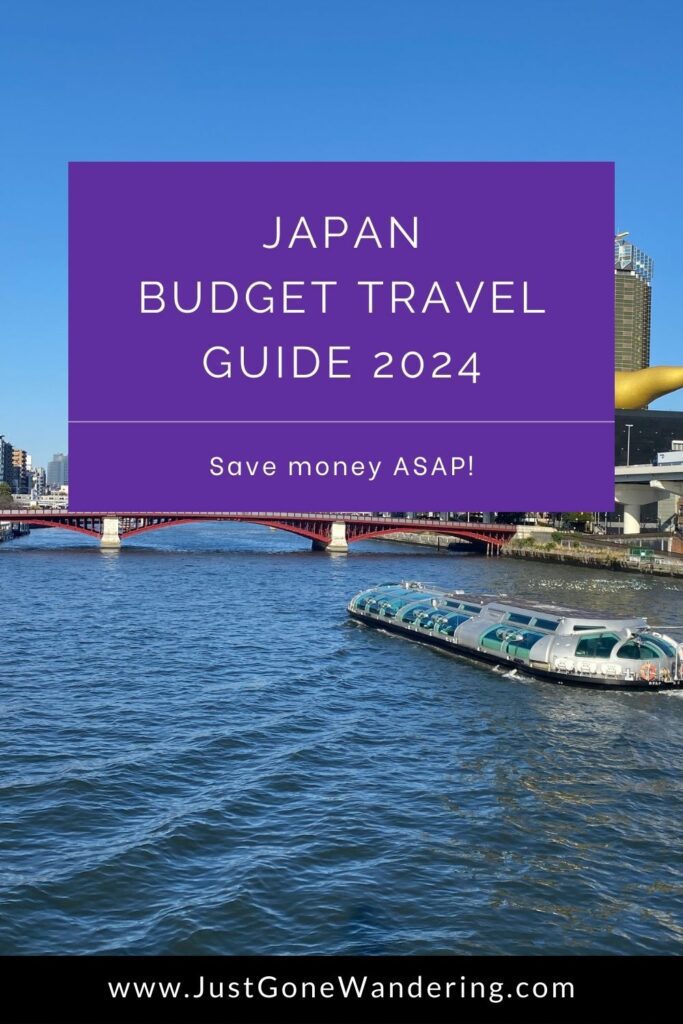
Japan Tours & Activities
Anastasia Finch
Anastasia is a former librarian turned digital nomad. She's been traveling the world full time for two years and has visited 18 countries so far! Just Gone Wandering is a travel resource for solo female travelers on a backpacker's budget-- or slightly more-- and highlights amazing places to visit as well as providing tips and tricks for traveling smart and frugal. Read more...

You May Also Like

Vending machine drinks in Japan
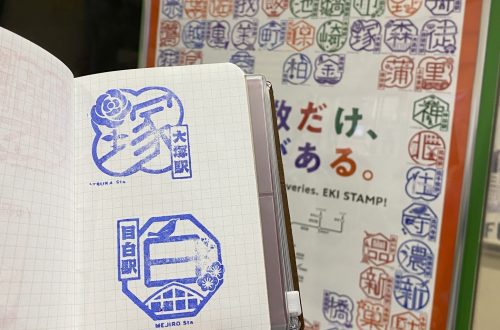
How to find eki stamps in Japan

Where to find the Narita Airport eki stamp
Leave a reply cancel reply.

Budget Travel in Japan – Ultimate Backpacking Guide [2024]
- Last Updated: February 5, 2024
From seeing up close the famous Mt Fuji, exploring the architecture of Japanese castles to slurping down the best bowl of ramen you ever had, all these epic memories to-be-made are possible even with our guide to budget travel in Japan .
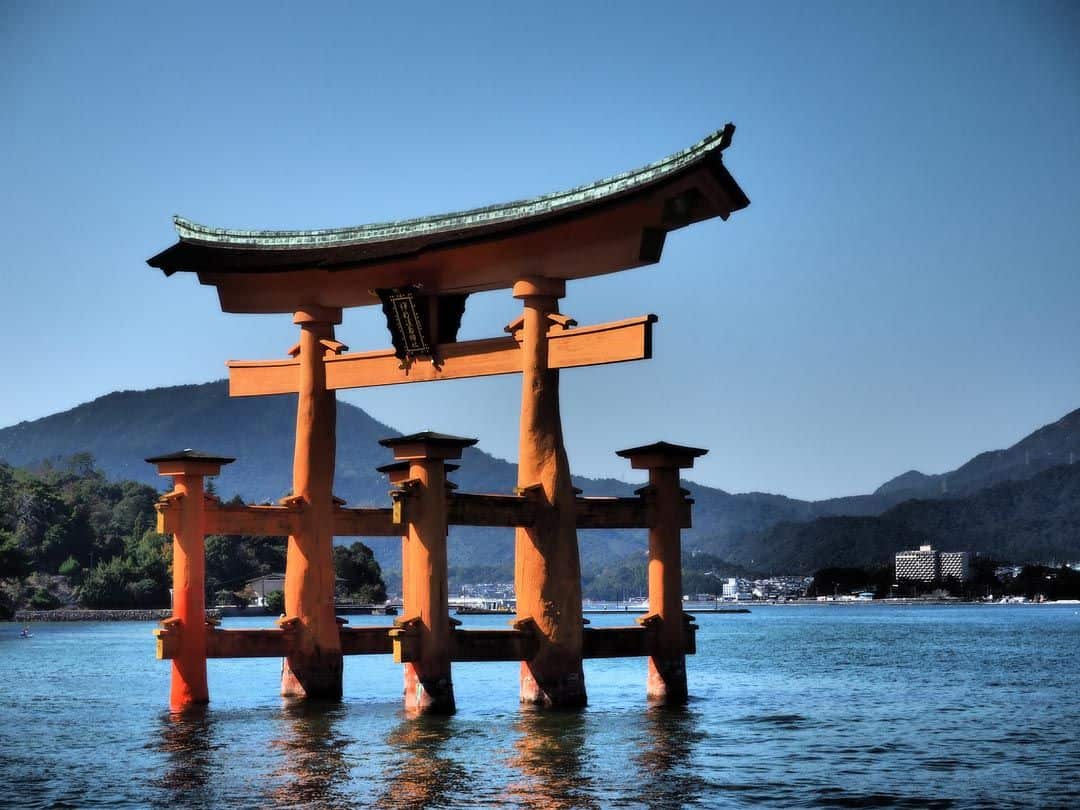
Today’s Japan is a fascinating example of blending the ancient traditions and modern day culture.
Throughout the country you’ll witness dynamic mountainscapes in stark contrast to futuristic cities that are inspiring new trends in architecture worldwide.
It’s also thought of to be notoriously expensive but we managed to travel to Japan on a budget, and so can you.
Table of Contents
Get A JR Rail Pass
Take some flights, deals in hiroshima, deals in osaka, deals in kyoto, deals in tokyo, cheap eating and drinking in japan, save this pin for later, budget travel in japan.
Japan has had a reputation as being expensive for a very long time, people paying hundreds of dollars for a piece of Kobe beef or a sliver of the finest blue fin tuna.
Prices of hotels can be among some of the most expensive in the world. Public travel, whilst incredibly reliable, can sometimes be quite expensive.
Well, some of this is true and some of it is a little more than a rumour that we have all perpetuated. Many people are put off traveling around for a long period of time because of the belief that the costs will be astronomical.
This isn’t always the case.
We have just finished 1 month of travel in Japan and it is comfortably cheaper than Australia, New Zealand, Western Europe and in some cases is even cheaper than China!
It sounds crazy, but here are a few really simple tips for budget travel in Japan that will save you some dollars on your next trip.
Note – At time of travel $1 USD was equal to about 110 Japanese Yen.
READ MORE: Don’t miss our brand new complete guide to help you travel to Japan!
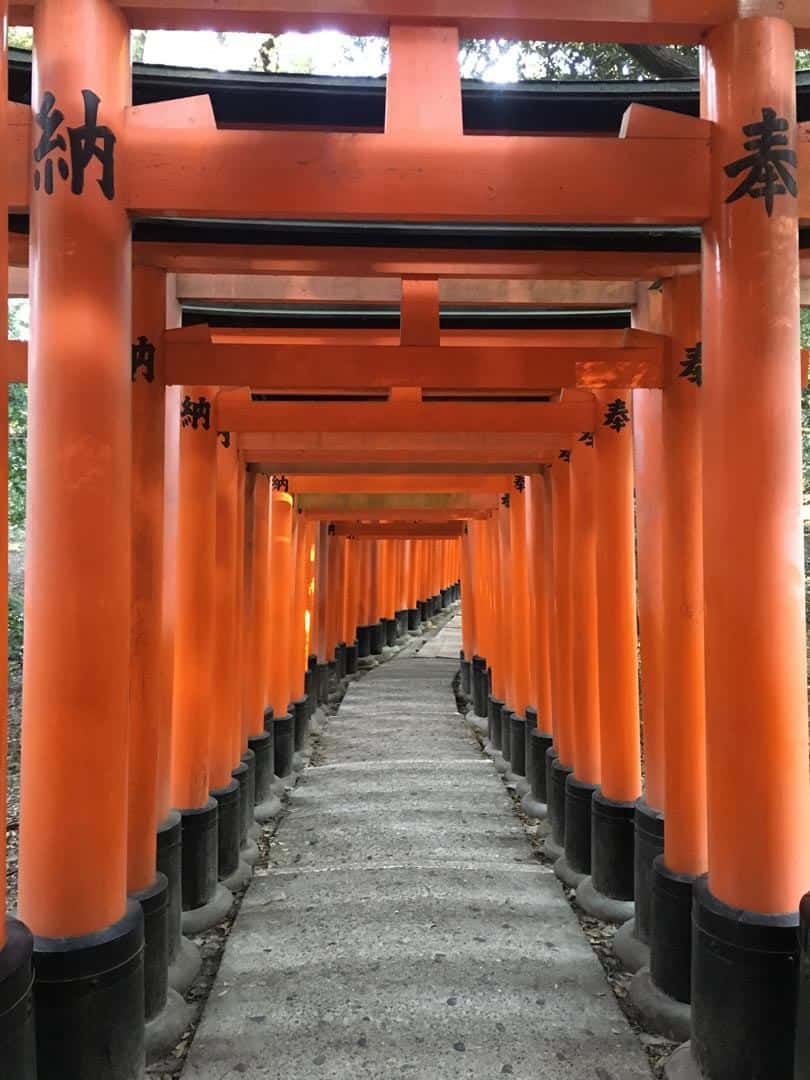
This is a no-brainer. Anyone travelling between cities in Japan should consider investing in one of these.
However be very careful about which JR pass you choose as you could end up spending more than you need to.
I’ll use our situation as an example.
We spent our first 12 days figuring out an excellent Hokkaido itinerary , which is absolutely incredible and definitely our favourite part of Japan. From Sapporo we flew down to Hiroshima .
From here we planned to go on to Miyajima, Osaka, Himeji, Nara, Kyoto and Tokyo.
A few of these were day trips and a few were for a bit longer, but as you can see we had a lot of travel ahead of us.
A regular JR pass that allows travel across the whole country costs 29,100 yen. This is incredibly reasonable. If you take a train from Tokyo to Kyoto, throw in a day trip to Nara and you’ve started saving money.
Our plan was as follows:
- 3 days – Hiroshima and Miyajima
- 2 days – Osaka
- 1 day – Himeji
- 1 day – Nara
- 4 days – Kyoto
- 5 days – Tokyo
We decided to purchase a Kansai-Hiroshima pass through JR West for 13,500 yen per person.
We activated this when we travelled from Hiroshima to Osaka. We used it for our day trips to Himeji, Nara and our trip to Kyoto. We then travelled from Kyoto to Tokyo by night bus for 6500 yen per person.
A total of 20,000 yen, 9000 yen less than a 7 day rail pass.
We would not have had time to do everything we wanted to do around Kansai and get to Tokyo in 7 days. Hence why we elected to go this route.
The JR pass website states that a JR pass cannot be used on the Nozomi or Mizuho trains. However if you purchase ANY JR west railway pass, which ours was, you can use these trains. This is great for longer routes, notably Hiroshima to Osaka/Kyoto.
Plan where you want to go and what you want to see and then search on the Klook website to find the pass that best fits your plan.
You could end up saving yourself a lot of money.
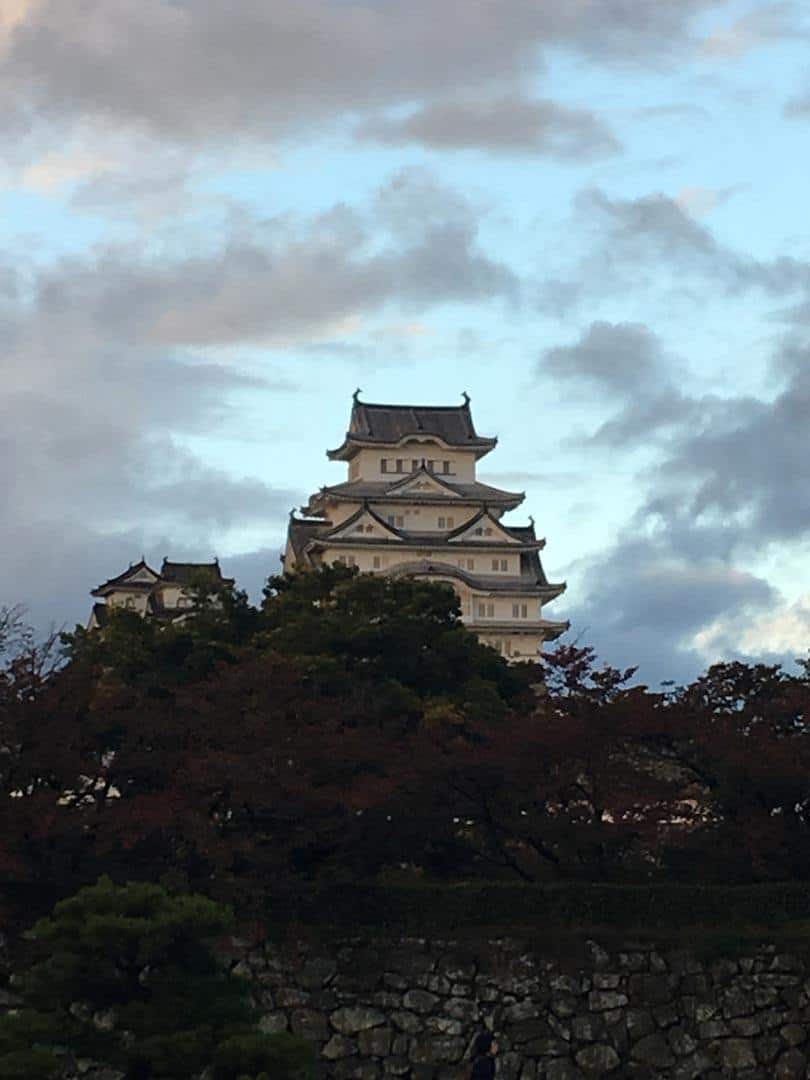
I read about this little deal on the amazing website Japanguide , a must for anyone planning a trip to the land of the rising sun.
In essence, this deal covers cheap flights all over Japan for any visitors to the country. It’s advertised as a 10,000 yen deal however there are some flights that are cheaper and some that are slightly more expensive.
We paid 10,000 yen each to fly from Sapporo to Hiroshima. If we were to booked these flights without this deal it would cost us closer to 50,000 yen per ticket.
There are two airlines that participate in this amazing deal: JAL and ANA. We ended up flying with ANA and it was great.
One thing to remember is that for this to work you usually have to book from outside Japan. As always in Japan there are a variety of deals.
The deals that we researched are linked below, but the link above has information on all of the deals available.
- JAL – Japan Explorer Pass
- ANA – Experience Japan
Both of these links take you straight to the booking page where you can research and compare prices. This deal is a must for anyone looking to get away from the Tokyo-Kyoto-Osaka route. This saved us a huge amount of money.
Day Passes for Attractions
Many of Japan’s cities have a variety of day passes allowing giving unlimited rides and even discounts to various attractions. This is a lifesaver for budget travel in Japan.
In Hiroshima you can purchase a 1 day street car and ferry pass for 840 yen. This is a great option if you are doing Miyajima as a day trip.
- Street Car to Miyajimaguch i = 280 1 way – total of 560
- Ferry to Miyajima = 180 yen 1 way – total of 360
- 560+360 = 920
This also means that you can use the streetcars to get around in the evening as your legs will be knackered after a day in Miyajima.
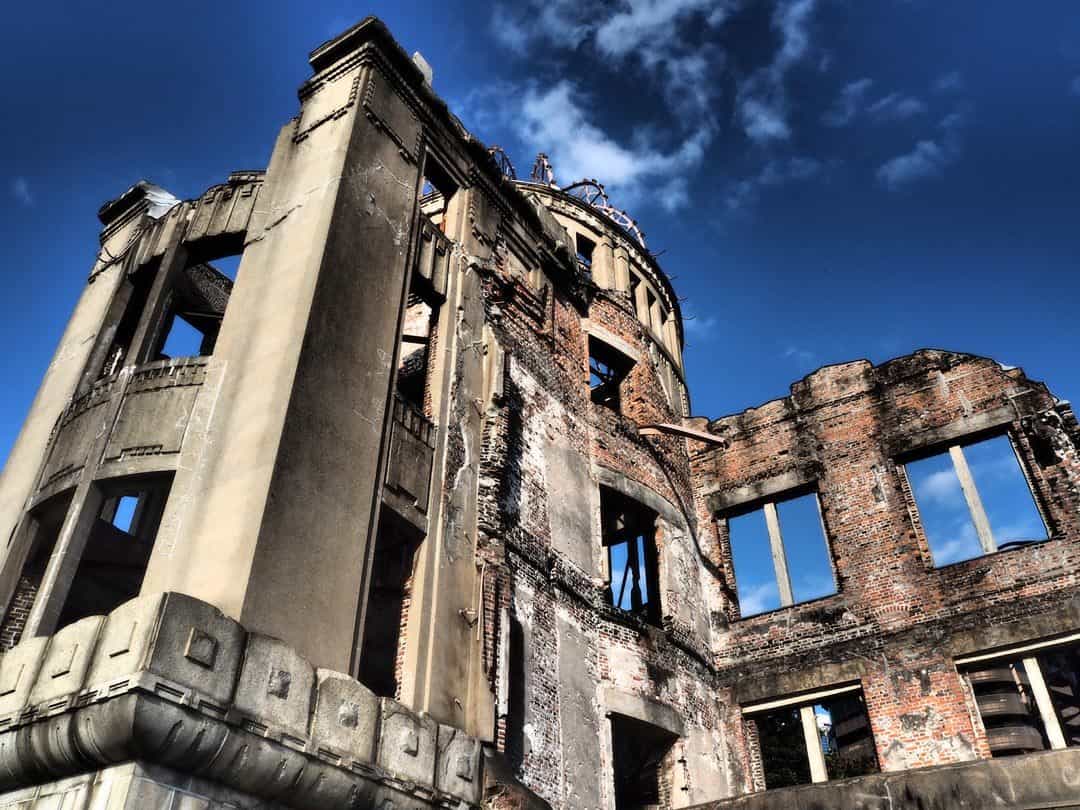
In Osaka you can pick up the “Osaka Amazing Pass” that covers subway and entry in a huge number of attractions for one day.
When we used it we headed to Osaka Castle, did the HEP5 ferris wheel, went to the top of the Umeda tower and took in an evening cruise (which was not that great to be honest).
It costs 2500 and it ended up saving us 2500 yen in transport and entrance fee’s definitely worth it.
Possibly the most popular tourist destination in Japan (it certainly felt that way when we were there).
Kyoto’s subway system is quite useful for accessing Northern Higashiyama and the city centre, but other than that it’s the bus and JR that are king.
However the JR routes to Arashiyama and Inari are very cheap so it’s not worth activating a rail pass just for this. Save it for intercity travel.
Kyoto’s bus network is both extensive and convenient. For 500 yen you can pick up an all day bus. You end up saving money if you take 3 or more buses. With Kyoto’s sites spread all over the city, this will not be a problem.
Here’s our list of the best things to do in Kyoto .
Japans greatest urban metropolis has one of the most impressive and confusing transportations systems on planet earth. The truth is there are huge number of tickets. Outlines of all of them are listed here .
Suica: This is just a simple subway card, like the oyster card in London or the octopus card in Hong Kong. You need to pay a 500 yen deposit for the card, but this is returned to you when you return the card at the end of your trip. Also the fares a few yen cheaper than if you buy tickets at the machine. They can be used on every line in Tokyo.
All Day Pass: There are 2 all-day pass options. The all-day metro card for 600yen which can only be used on the Tokyo metro, or you can include the Toei lines for 1500yen.
We found the all-day metro card fantastic value. If you take 4 trips you will be saving money. Just remember, neither of these passes include the JR lines, so sometimes the journeys are a little longer.
While you’re at it, check out these great things to do in Tokyo.
Eating out in Japan can be extremely cheap, in some case it was far cheaper than eating similar food in Beijing. Obviously eating out can be as cheap or as expensive as you wish, but here is a very rough price guide based on 2 people eating.
- 500-1000 Yen – Bento boxes – can be brought from any convenience store
- 1000-1500 Yen – Ramen and Udon
- 1500-2000 Yen – Katsu Curry
- 2000-3000 Yen – Tempura Sets
- 3000-5000 Yen – Yakiniku (Japanese BBQ), Izakaya/Yakitori (Japanese style pub serving sticks of meat, sashimi and other wonderful delights), Sushi and Sukiyaki (type of Japanese hot pot)
This is not a definitive list, but it’s generally a good guide as to what type of food is generally cheaper or more expensive.
The big thing that raises the cost of meal is alcohol. A couple of draft beers would generally add at least 1000 yen to the bill. So an easy way to save is to limit your alcohol intake.
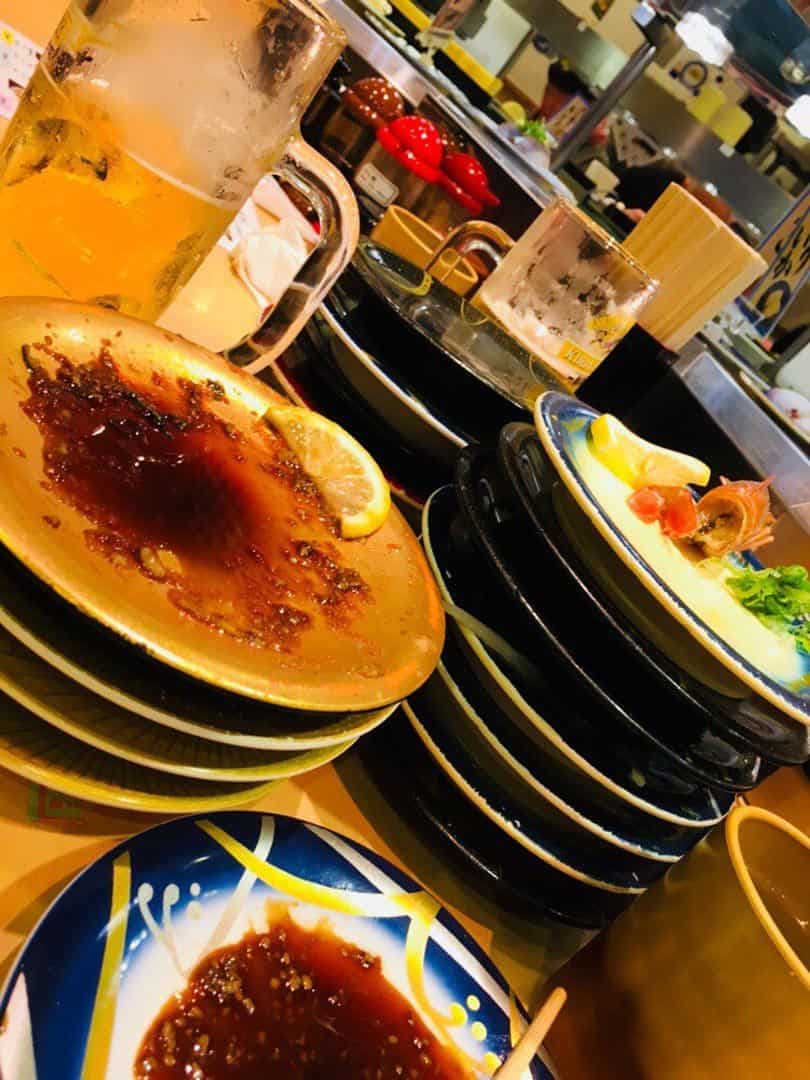
Budget Accommodation in Japan
Accommodation is usually the most expensive part of any trip.
Hokkaido – Booking.com and agoda.com offered us the best rates for anything outside Sapporo. In this region of Japan AirBnB is can be pretty pricey. In the national parks it can be around 9000yen per night, with breakfast included. However this is offset by the cost of food being much cheaper than other parts of Japan.
Hiroshima to Tokyo – Here AirBnB was generally cheaper and that was what we used the majority of the time. We managed to rent entire apartments for half the price of a hotel room in Hokkaido.
Another thing to be aware of is that paying for 2 beds in a dorm is usually more expensive that getting a room in a hotel or guesthouse, so plan accordingly.
Sign up using our AirBnB link to get $50 credit to go towards your first booking and make help make your trip even cheaper.
In truth Japan is much more affordable than people would believe. Hope you found this useful. Head over to www.abearandapig.com to see more of what we do.
That’s it for our guide to budget travel in Japan. Please leave a comment below if you found this article useful, or if you have anything else to add.
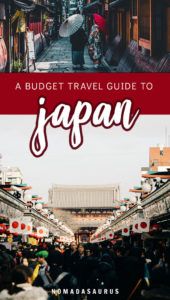
Richard Barnes
Hi, We’re Alesha and Jarryd!

We’ve been traveling the world together since 2008, searching for the planet’s best destinations and adventures.
Love Travel?
Sign up for our free weekly newsletter for the best travel tips, ideas and deals!
We respect your privacy. Unsubscribe at any time.
READ MORE...
19 BEST Things to Do in Osaka, Japan [2024 Edition]
The Perfect 3 Days in Tokyo Itinerary
The best day trips from every city in japan [2024], related posts, 7 best day trips from osaka, japan (2024 travel guide), the perfect yokohama itinerary for 1, 2 or 3 days (2024), 6 thoughts on “budget travel in japan – ultimate backpacking guide [2024]”.
People may think that Japan is very expensive, but there are many ways to travel in there very cheaply if you know some “secrets” like right organizations where you can get some very unbelievable travel deals 😉
What kind of organizations would those be?
Thanks for sharing this kind of information Thanks for the tips I’ve always enjoyed traveling, the idea of seeing the world fascinated me, but I was never able to take a very long trip
Thank you for your comment Luana. Travelling is definitely amazing in so many ways. Hope you can travel where you want to soon and stay for a long trip and immerse yourself in the country and the people. Happy travel planning 🙂
I love to visit this places in japan this year..Thanks for sharing such kind of information..I think Travelling is the most important way to enjoy life and know something different from your routines..
We agree. Travel is amazing. Have a great trip.
Leave a comment Cancel reply
Save my name, email, and website in this browser for the next time I comment.

Japan on a Budget: The Complete Guide to Cheap Travel in Japan

How to Travel Japan on a Budget: The Only Guide You’ll Ever Need
Is is possible to travel to Japan on a budget? Definitely! Japan is one of the most fun and amazing travel destinations in the world. However, many travelers are reluctant to plan a trip to the Land of the Rising Sun because of the cost.
Known for being an expensive place to visit, many Japan lovers give up when they hear how much it costs to travel to Japan. In doing so, they miss out on the trip of a lifetime. It’s true that Japan has tons of luxury hotels, world-class restaurants, and first class transportation options that cost more money than most people’s mortgages.
However, Japan also has lots of cheap lodging, amazing food, and transportation options that are very easy on the wallet. In fact, Japan can be one of the CHEAPEST destinations to travel on a budget. If you want to visit Japan on a budget, this article will provide you with all of the tips, tricks, and advice to save you as much money as possible.
How to Get Cheap Flights to Japan
While it is possible to visit Japan by boat (namely from Australia, China, Taiwan, and Korea) the vast majority of visitors choose to go by air.
If you live in one of these nearby countries and have LOTS of time, check out your local boat companies for deals. Sometimes they sell last minute tickets at a fraction of the cost.
However, it’s almost always more efficient to travel by air.
So here are 5 tips to getting the cheapest airline tickets to Japan.
5 Tips to Find Cheap Flights to Japan
1. book as early as possible.
When searching for a flight to Japan, booking as far in advance as you can is best. Waiting until the last minute to grab reduced price tickets can certainly pay off, but it’s a big gamble if the tickets sell out (which happens more often than not).
You’re better off by being prepared, planning in advance and choosing to visit Japan at a cheaper time of year.
I usually buy my tickets at least a month before my travel date. I found that this is the latest I can wait before tickets sell out or really get expensive.
2. Avoid Peak Periods of Travel: Peak Times

Not only does the cost of airfare increase during peak times of travel in Japan, but hotels, attractions, and even restaurants raise their prices as well (usually buffets or nice restaurants that offer things like “special” holiday menus). If possible, try to avoid these peak travel times in Japan if you are on a tight budget:
- Golden Week: End of April – start of May
- Cherry blossom viewing: Late March – early May
- Summer: Mid-August is the busiest due to the Obon Festival
- Autumn: Changing colors of leaves (busiest time is late September due to Silver Week, a period of national holidays grouped close together)
- Spring: The end of March – the beginning of April. School children are on spring break, and lots of families travel during this time
- New Years: A popular time to travel during this time (domestic and international)
3. Cheapest Time to Fly to Japan
Here are the dates that generally have the cheapest flights to Japan
- Early to late December (before New Years)
- Just after the New Year holiday ends (people are usually back to work by January 5th) up until the end of March. However, Hokkaido has lots of visitors during this time due to all of the incredible ski slopes and winter foods. The world-famous Snow Festival also takes place in early February, which makes finding a cheap ticket to Hokkaido difficult.
- Mid May – June is also a cheaper time to visit.
While the winter season might not be the best time to visit Japan in terms of weather, you’ll usually save money on plane tickets. Winter foods in Japan are absolutely delicious as well. Delicious hot pot dishes, fresh crab, and other seafood are especially delicious in winter.
If you want all of the details and insiders tips on when to visit Japan, check out our best time to visit Japan guide.
4. Check for Internet Deals
Or course you could get cheap airlines tickets by choosing non-direct flights with long, inconvenient waits in between. But who wants to do that? Sure, you can save some money, but you’ll be giving up a lot of time and comfort by doing this.
Before going this route, spend an hour or two searching the Internet for the best deals. You can decide if a reduction in price with a 12-hour wait in some random airport is worth the inconvenience.
How to do Internet Research for Cheap Flights to Japan
Here are the steps I use to find the best deals to Japan:
1. Determine Both Your Budget and Which Airlines Companies You Want to Use
Of course, if you are willing to fly with any airlines, you’ll have the best chances of finding a cheap flight. However, I highly recommend you only use reputable carriers. There are lots of airlines with cheap flights to Japan, but they usually have very long layovers or delays, poor service, and safety issues.
Sometimes, it’s just not worth the risk. So to minimize your chances of having a bad flight, go with a reputable airline company. Airlines that fly to Japan differ depending on where you live, but I like Hawaiian Airlines, Japan Airlines (JAL), All Nippon Airways (ANA), and Korean Airlines.
2. Always Check Your Favorite Airline Carrier’s Website First
I always check the Hawaiian, JAL, and ANA Airlines website first. Most of the time, I find the best deals directly on their website.
Booking directly with the airline carrier is usually safer and more secure than booking with a third-party company. Be sure to check the prices often, as they can change frequently.
If the prices are high, proceed to step 3.
3. Do a Quick Search for Ticket Prices on a Multi-Search Website like Kayak.com
Other websites such as Skyscanner, Expedia, Jetstar, Kayak, Lastminute, and Farecompare are also good places to analyze ticket costs. Remember that flight costs will depend on where you’re flying from. Heading out from a major “hub” airport rather than a local one will certainly cut costs.
These websites search hundreds of travel sites and find the cheapest tickets out of all of them. Filter the searches by the airline carrier and how many layovers you are willing to have on your trip. Be sure to check the prices for different dates. Sometimes traveling just 1 day later can drop the prices significantly.
NOTE: I just do this to see what the average prices are for that dates of travel. I DO NOT purchase my tickets through Kayak unless there is an amazingly good deal though a REPUTABLE company. While there are usually cheap tickets that show up in the results, most of these are either a) flights with LONG layovers or b) flights listed by bad, untrustworthy third party companies.
In my experience, many of the companies that are listed on their website aren’t very trustworthy. Many of them have very bad reviews, with some even having complaints filed against them. Stick with the bigger companies like Expedia. Just use it to check the prices of the airlines you want to fly on.
4. Consider Buying a Ticket from Another Country or with a Different Currency
Choose the best 3 or 4 itineraries you found on Kayak/Expedia/Priceline/etc. I usually have the best results with Expedia.
At the bottom of the Expedia website, there’s a section called “Global Sites” with pictures of flags of different cultures. Choose a different country and search for the same flight. The ticket prices might be lower if you book it through another country with Expedia.

5. Fly into a Different Airport in Japan

If all of the flights to your desired airport in Japan are crazy expensive, consider flying to a different airport and then using the JR Rail Pass to take the train the rest of the way. If you don’t mind having a longer trip, the JR Rail Pass is a good way to cut costs.
You can fly into another major airport in Japan and then cash in your rail pass at the nearest participating station. Then you can take the bullet train to your desired location. While this does take more time, it can save you money and is much more fun that riding an airplane.
The seats on the bullet train are much more spacious than a plane and are much easier to travel. The only downside is that the bullet train doesn’t have space for big pieces of luggage.
Transportation in Japan: Saving Money on Domestic Travel
Finding a cheap way into the country is only half the problem. Domestic travel within Japan is also expensive. Of course, you could explore only one or two cities, which can cut costs dramatically by only paying local fares, especially if there are city passes available.
What makes Japanese so awesome is traveling to different areas to eat local foods and to experience the culture throughout Japan. If you want to explore many places in Japan, purchasing a travel pass will be your best bet. These passes can save you both time and money if you plan to travel a lot in Japan.
The JR Rail Pass: The Best Deal in Japan

The Japan Rail Pass is essential if you want to experience all that Japan has to offer. This pass allows you unlimited rides on most JR trains, including the bullet trains, as well as some JR buses and the JR ferry to Miyajima.
This pass opens up the whole Japan to you. You’re free to travel wherever, and whenever you want. I highly, highly recommend getting this pass.

This pass also makes traveling much easier. You don’t need to research ticket prices or deal with buying or keeping track of your tickets for each trip. Just walk on through the gates on the side and show your pass to the attendant.
Also, if you don’t mind sitting in the unreserved area, you can walk straight onto the train too – although reserving specific seats ahead of time is certainly recommended for busy times/seasons/routes.
How the JR Rail Pass Works
IMPORTANT: You can’t buy a Japan Rail Pass while in Japan. You must purchase your pass before you arrive in Japan. The pass is only for those on a tourist visa.
Also, keep in mind that the JR pass cannot be used on every type of transport. For example, you cannot ride the NOZOMI or MIZUHO type bullet trains using a Japan Rail Pass. This isn’t usually a problem, though.
The NOZOMI trains travel the exact same route as other types of bullet trains but only stops at major stations. A full list of what you can and can’t use the pass for can be found on the rail pass website .
JR Rail Pass Prices
There are two types of pass you can buy. A “green pass” allows you to sit in the first-class section of the train. However, not every train has a green car (first class section). The “ordinary” JR Rail Pass is the more economical option. Both of these passes can be used to make seat reservations for the bullet train.
Passes are available for periods of 7 days, 14 days, or 21 days. The countdown will start on the day you activate your pass. You do not have to activate it as soon as you arrive in the country. You can redeem it anytime during your trip.
Just take your rail pass voucher to a JR Station that can redeem it. A list of places should be included on a sheet with your voucher. However, most big, urban JR stations can activate your rail pass.
JR Rail Pass Prices (2017)
Prices for adult “original” passes:
- 7-day pass: 29,110 yen
- 14-day pass: 46,390 yen
- 21 day pass: 59,350 yen
Prices for child passes (age 6 to 11):
- 7-day pass: 14,550 yen
- 14-day pass: 23,190 yen
- 21-day pass: 29,670 yen
The passes may seem expensive but can save you an incredible amount of money if you travel a lot during your trip. A round-trip ticket from Tokyo to Kyoto would already cost 28900 yen, nearly the full price of a one week pass.
A typical 7-day trip for tourists would look like this:
- Days 1&2: Tokyo
- Day 3: Osaka
- Days 4&5: Kyoto
- Day 6: Hiroshima
This itinerary would cost you 41,640 yen, not including all of the local trains you’ll ride within these cities. If you were to return to Tokyo from Hiroshima, the total cost would be 60,200 yen, which is more expensive than a 21-day pass.
If you plan to visit more than one city by bullet train on your trip to Japan, a rail pass is an absolute must.
Where to Buy the JR Rail Pass
There are a few different agents you can use to order your Japan Rail Pass. Be sure to check the details. Some airlines sell rail passes, but you must book your airlines ticket with them as well.
Here are some of the main agents through whom you can purchase the pass: Tobu Top Tours, JTB Corp., KINTETSU INTERNATIONAL, Japan Airlines, Nippon Travel Agency, ANA Sales Americas (Los Angeles), and JALPAK. Check the website for details on how to purchase a rail pass.
Special Passes to Save You Money on Travel in Japan
As well as the Japan Rail Pass, there are other special tickets and passes you can buy to cut costs on your trip to Japan. Some tickets are regional, but others can be used all over the country.
Seishun 18 Pass

This is another offer from the JR (Japan Rail) company. This ticket is similar to the Japan Rail Pass, but it is more limited. However, the reduced cost makes this pass a great option if you’re trying to travel on a budget (and have lots of time).
The Seishun 18 ticket is a seasonal offer only. You can use the ticket for a 5 day period during the spring (early March to early April), summer (mid-July to early September), or in the winter (early December to early January). The exact dates are released when the tickets become available.
You can use this pass for unlimited travel on all local and rapid JR trains. You cannot use it on Shinkansen rides (bullet train) or on limited express travel.
The Seishun 18 is a 5-day ticket, costing 2,370 yen per day – a total of 11,850 yen.
A fraction of the price of the Japan Rail Pass, this is a great option if you want to do lots of little trips or one or two big journeys during the 5 day period. Interestingly, the ticket can also be shared between up to 5 people. You could have use of it for one day each and your friends could use it the other days.
Where to Buy the Seishun 18 Pass
You can buy the Seishun 18 ticket in the JR East station travel centers, or at JR Ticket Offices. Advance booking is available. Dates for when the passes go on sale are listed on the website along with the details, which usually becomes available from 1 to 3 weeks before the pass becomes available.
Hakone Free Pass
Hakone is an amazing place to visit. It is filled with stunning natural beauty, especially when the autumn leaves change and the cherry blossoms bloom in the spring. Whatever the season, Hakone is a wonderful place to visit. Amazing hot springs, outdoor walks, mountain hikes, surrounded by peace and quiet. It’s pure bliss.
The Hakone Free Pass is a must for people heading out that way. It gives you free travel on eight different types of transport in the Hakone area for a 2 or 3 day period, as well as discounted entry to dozens of attractions, including hot springs, museums, galleries, historical sites, parks, restaurants, shops and more. A full list is available on their website .
The Hakone Free Pass has different prices depending on where you depart from.
While you can get passes that are valid from Machida and Odawara, most travelers start their journey at Shinjuku. However, if you are heading off from one of the other two locations, be sure to check out the details as those tickets are a little cheaper.
From Shinjuku:
2-day adult pass: 5,140 yen
3-day adult pass: 5,640 yen
For children:
2-day pass: 1,500 yen
3-day ticket: 1,750 yen
Where to Buy the Hakone Free Pass
Hakone Free Passes can be purchased at any Odakyu line station, including Odakyu line ticket machines.
JR Tokyo Wide Pass

If your trip to Japan will be focused in and around Tokyo (there is so much to do there that you could easily spend your whole holiday there) then you should consider buying the Tokyo Wide Pass.
This 3-day ticket offers unlimited travel in Tokyo and the surrounding Kanto area. Including both the Narita and Haneda airports, you can pick up your pass on arrival, and it will cover the cost down into central Tokyo, and everything else for the rest of the period of validity.
Like the Japan Rail Pass, this ticket is only available to people with a tourist visa. As it is only valid for 3 days, you could easily get yourself one of these passes to use for a few days in Tokyo, then after that head off around the rest of the country using a Japan Rail Pass.
The 3-day pass is 10,000 yen for adults and 5,000 yen for children aged 6 to 11.
Where to Buy the JR Tokyo Wide Pass
You can buy a Tokyo Wide Pass at the JR Ticket Offices and JR Travel Agents located in the Haneda International Airport and in the Narita Airport Terminals 1 and 2, and 3.
The passes are also available at JR travel centers and general travel service centers at various locations, including Shinjuku, Tokyo, Ueno, Shinagawa, Shibuya, Ikebukuro, Yokohama, and Mito. Check the website for details.
Domestic Air Travel
Train passes are good for people who want to travel a lot, but what if you only want to explore one or two areas? While the rail passes are, on the whole, cheaper than buying individual tickets, they are still quite costly if you aren’t going to be getting a lot of use out of them. So if this applies to you, take a look at budget local airlines for domestic travel.
Low-Cost Carrier (LLC) Flights

Several airlines in Japan offer flights to various locations, and often at a fraction of the price of the same journey by train. Of course, you need to factor in all costs to make sure you’re getting the best deal. Keep in mind that getting to the airport might involve time-consuming/costly trips on the subway or train.
However, this depends on the city. For example, in Fukuoka, the airport is only a 5-minute subway ride away from the central train station.
Two of the most well-known budget airlines in Japan are Peach and Jetstar.
Both of these airlines fly to a variety of locations, including Tokyo, Osaka, Sapporo, Kagoshima, Fukuoka, and Nagasaki.
Other popular domestic airlines include JAL (Japan Airlines) , ANA (All Nippon Airways) , Skymark Airlines , Vanilla Air , Spring Airlines and Solaseed Air .
Taking a plane instead of a train, even for a short journey, can make a huge difference in price.
For example, reserving a seat on the train from Kumamoto to Tokyo will cost a total of around 27,000 yen (and take about six hours!) whereas the same journey by plane (using Jetstar airlines) will cost less than 7,000 yen.
Taking the train from Kagoshima to Osaka will set you back around 22,000 yen, vs. a flight on Peach Airlines can cost you less than 6,000 yen. That’s a huge discount!
Special Airlines Discounts
If you prefer to take Japan Airlines or ANA Airlines, here are a couple of special discounts you can use.
JAL: Special Japan Explorer Pass – 10,800 yen flights to over 30 different cities in Japan.
Restrictions: Only for short-term visitors. Must have a ticket leaving Japan to be eligible for this special pass. You also need to purchase these flights directly through the JAL website.
ANA: Experience Japan Special Fares : 5,500 yen flights to cities within Hokkaido, or 7,700 – 11,000 yen flights for any other destinations.
Restrictions: You need to reside outside of Japan, have a passport from a country other than Japan, and have an international ticket leaving Japan.
Traveling by Bus

Probably the cheapest way to travel long distances in Japan is by bus. Taking a highway bus is not the most popular option, but can be a great way to save money on both short and long trips.
A popular bus provider is Willer Express. You’ll be surprised to know that you can make online reservations in English when booking through Willer Express. Most other bus companies don’t have online or English reservations.
Other companies to look into are Japan Bus Online, Hankyu Bus, and JR Bus branches (split into eight regional companies).
Insider’s Tip
Most bus companies offer different types of seating for overnight buses. These range from the cheapest 2-seater style seats (think of an American school bus) to super comfortable individual seats.
The price difference is significant, but if you’re taking a long bus (over 8+ hours) I highly recommend that you purchase a better seat. The buses with 3 seats per row are very comfortable. The seats are not connected, which makes it feel like you have your own personal space.
I took an overnight bus from Kobe to Tokyo on Willer Express with the cheapest seats (which was only 2,500 yen or so). While the bus looked new and the ride was smooth, it was the one of most cramped, cold (it was during winter), and uncomfortable experiences of my life. The better seats were 2 to 3 times more expensive, but I would definitely purchase those seats next time. These upgraded seats would still be much cheaper than taking a bullet train.
Taking the bus can also save you on money on hotels. You can sleep on overnight buses that run late into the night.
Japan Bus Pass
If you plan on traveling all around Japan, consider the Japan Bus Pass.
This pass can be used on all daytime and overnight buses provided by Willer Express. There are 3-day, 5-day, and *7-day passes, with 2 different prices depending on if you’ll be using it from Monday to Thursday or over a weekend period. A 3-day Monday to Thursday pass costs just 10,200 yen.
*NOTE: The 7-day pass is only valid during Monday – Thursday, but you don’t need to use the 7 days consecutively.
There are a few rules. The pass can be used for up to 3 rides per day, but you can’t use it on premium buses. However, on the plus side, this is one of the “only for foreign visitors” passes which can also be used by foreign residents. That means that JET teachers and other ex-pats who usually miss out on the great travel deals can use the Japan Bus Pass.
For more information: Willer Bus Pass Page
Cheap Places to Stay Overnight in Japan
Finding a place to stay is one of the major concerns for people wanting to travel Japan on a budget. There are tons of luxury hotels that cost a fortune, but there are also lots of budget hotels as well. A discerning eye can track down cheap accommodation all over Japan. The key is knowing what kind of lodging to look for, and where to find it.
Finding Cheap Deals Online

With price comparison websites and dedicated travel companies providing endless lists, this is the best place to start your search. However, bear in mind that these websites have more listings in big cities. Small towns in the countryside will probably yield very few search results. If you’re hoping to visit somewhere off the beaten track, you may need to find other ways to find lodging there.
One of the best websites to use is Booking.com . This website is easy to use and often has great deals. It is also a reputable company that most people trust. I recommend Booking.com because it offers a whole range of different sorts of accommodations. From fancy hotels to local ryokans, you can find something in your budget.
However, there are some popular hotels that are not listed on Booking.com. Agoda.com comes to the rescue in most cases.
Most of the lodging options that aren’t listed with Booking.com can be found on Agoda. I always check both of these websites anyway, to compare prices for the same hotels.
Other good websites are Rakuten, Hostelworld, Japanican and Jalan.
Accommodation Booking Websites
Booking.com : Best choice to reserve most types of accommodations (hotels, Japanese inns, hostels, capsule hotels, etc.)
Agoda.com : Not as easy to use as Booking.com, but has some hotels that are not listed on Booking.com
If you’re having trouble finding something, or the hotel you want is fully booked, check out the Japanese version of the site.
Particularly on Jalan and Rakuten, it might appear that something is fully booked, but when you check the local website, there is still availability! Also, the Japanese website sometimes lists a cheaper price.
The only downside to this is you need to be able to read Japanese.
However, if you are just booking a room (no meals or other services) you can probably book a reservation in Japanese by using “rikaichan” which is an add-on to the Mozilla Firefox browser (for Google Chrome, the extension is called “rikaikun.” When you turn it on and hover your mouse over Japanese characters, it will show you the reading and the definition of the word.
Google Chrome: Rikaikun Mozilla Firefox: Rikaichan
Business Hotels

One of the most affordable types of accommodation in Japan, business hotels are certainly “no frills, ” and you get what you pay for.
They are hugely popular, as the name suggests, with Japanese business people (mainly men) who travel a lot for work.
Business hotels are a good choice if you plan to explore Japan all day and just want a bed to sleep in at night. You find them all over Japan, with many big chains all over the country, with their rooms looking the same whether you’re staying in a big city or out in the countryside.
Major companies to look out for include Toyoko Inn, Daiwa Roynet Hotel, Dormy Inn, Chisun Hotels and Route Inn.
How Comfortable are Business Hotels?
Rooms are functional with minimal decorations. Some rooms can be very small (the bed and drawers take up most of the space). Beds are very standard but usually pretty comfortable. There’s usually a TV, small refrigerator, a hot water pot, and internet access (either by ethernet cable or wi-fi).
The bathrooms are usually very tiny but they do the job unless you are very tall or big. Most business hotel bathrooms are stocked with basic amenities (toothbrush, soap, shaving razor, etc.).
Average Prices
A single room in a business hotel will cost you between 4,000 Yen to 10,000 yen a night, whereas a twin or double room will be the cheaper option if split between 2 people. For a twin, prices are around 7,000 yen to 12,000 yen per night.
Capsule Hotels

One of the most famous types of Japanese lodging, staying in a capsule hotel is definitely an experience. The first ever capsule hotel opened in Osaka, Japan, and now you can stay in similar lodgings all around the world.
They may look like fun, but capsule hotels aren’t always all that they’re hyped up to be. It is small, but not as small as most people think. Most capsules are big enough for you to sit up inside without hitting your head.
However, it’s somewhere to sleep and nothing else. Also, many capsule hotels are for men only. They’re geared at businessmen and often don’t have capsules for women. Some capsule hotels have a “female only” floor, though. You’ll find them in big cities, but smaller towns throughout Japan are unlikely to have mixed gender capsule hotels if they have one at all.
Are Capsule Hotels Comfortable?
For the first day or so, capsule hotels are decently comfortable. However, it doesn’t take an expert traveler to know that these are not good for long term stays. There is only so many nights in a row that sleeping in what is basically a well-lit coffin can be counted as a fun novelty rather than an annoyance.
Depending on your fellow travelers, capsule hotels can easily be noisy, crowded places, and while many hotels offer lockers or other places to store your belongings, theft, while not rampant, is more common in these lodgings than in other types of accommodation.
Capsule hotels are far from the most luxurious hotel, but they do come cheap! Spending a night in a capsule hotel can cost as little as 2,000 yen. However, is it worth it? Some travelers thrive on this sort of “simple” accommodation, but if it doesn’t sound like your cup of tea, move on to another type of hotel.
At best, make your stays in capsule hotels a one-night-at-a-time affair when you are just stopping over or arriving somewhere too late to make use of a regular hotel room. In these instances, the low cost is worth the inconveniences.
Japanese Hotels
This is probably the type of lodging with the widest variation between properties. Some hotels in Japan are little better than business hotels. The rooms have basic furnishings, no decorations or excessive comfort, and is just somewhere to spend the night.

At the other end of the scale, you have fancy hotels which are amazingly luxurious. Fully furnished rooms, spacious bathrooms, communal areas with massage chairs, gym facilities and even swimming pools.
There is great variety between different hotels in Japan. The number of choices can be overwhelming. The good thing is that many hotels are conveniently located near to train stations or bus stops.
Are Hotels in Japan Comfortable?
This really depends on what kind of deal you’re looking for. A cheap hotel will, naturally, not be very comfortable, but it will cost a mere fraction of the cost when you compare it to mega hotel chains like MyStays, APA or Nikko. In general, bigger hotels in Japan are comfortable and are good for both sleeping and relaxing in.
Cheaper hotels are usually around 8,000 yen per night, with luxury hotels priced 30,000 yen to 60,000 yen or more per night. While many hotels might look out of your budget, it’s worth keeping an eye out for special deals. For example, the MyStays chain is a delightful place to stay, but with the rooms usually priced at 20,000 yen per night, it’s not exactly a budget choice.
However, on websites like Booking.com you can regularly see special deals when booking in advance, which see those rooms listed at half price, or less!
Why pay 8,000 yen to stay in a terrible business hotel when you can splash out a little and stay in a palace for 10,000 yen?
Even budget travelers need to relax once in a while, so if you need a night of luxury, this is a great option to check out.
Minshuku / Ryokan

These are types of traditional Japanese accommodation, which are just as popular with foreign visitors as they are with locals. Cheap hotels are all well and good, but if you want to experience local hospitality and step back in time, you can’t beat spending the night in a ryokan or minshuku.
They are pretty similar, it’s just that minshuku tend to be smaller, located in older buildings and usually run as a family business. Ryokans are often run like this too, but sometimes they are located in newer, bigger buildings and have more staff with more services.
Are Ryokan and Minshuku Comfortable?
Staying in traditional Japanese accommodation isn’t for everyone.

For starters, you’ll be sleeping on the floor on a traditional futon, and the flooring will probably have tatami mats rather than carpet.
Sometimes ryokans and minshukus have showers, but often they only have traditional communal bathing facilities – and these will likely be down-to-earth and not luxurious unless you’re staying in an “onsen ryokan” which is specifically designed for spa relaxation.
However, if you like experiencing different cultures in local style, these can be very comfortable places indeed. They vary a lot – some have fun, bubbly atmospheres like youth hostels, with a variety of characters lounging in the common areas, and are quieter than an emply library. Check reviews to see what other travelers think before you make a booking.
These can vary quite a lot, particularly between little minshuku out in the countryside, and fancy onsen ryokan in a swanky location. However, lodging like this is seen less and less in big cities – it’s more frequent to see ryokan and minshuku out in the countryside and on the outskirts of small towns.
The cheapest minshuku can be seen at around 4,000 yen per night, up to about 9,000 yen per night. Ryokan can be as cheap as 5,000 yen or less per night, up to 60,000 yen per person for luxury inns. Be sure to check whether prices are per person or per room.
Internet Cafe / Karaoke Rooms

If you told a Japanese person that you were planning on spending the night in an internet cafe or private karaoke room instead of booking into a hotel, they’d probably think you were a bit weird. That isn’t because you can’t stay overnight in these places – it’s certainly a popular option.
It’s just that few people plan to use this kind of accommodation. The usual overnight clients at these types of establishments are salarymen who stayed out too late drinking and don’t want to go home and face the wrath of their wives, or young party animals who missed the last bus home and need somewhere to stay.
You can choose a public or private space, and choose between a normal chair, reclining chair, floor space or whatever other options they provide.
Are Internet Cafes in Japan Comfortable to Sleep In?
Generally not comfortable in at all. These rooms are not designed for sleeping in, they’re designed for surfing the internet or playing online games. You probably will not get a good nights sleep in a place like this.
They can be noisy, uncomfortable and full of people who are doing anything but sleeping. However, they are super cheap, and often there are shower facilities which you can use for a small charge, and machines which provide free soft drinks, ice-cream, etc.
If you want to try and get a good night’s rest in an internet cafe, be sure to choose the “floor” type of room. This is the only type of room that has enough space to lie down. The other types, come with reclining chairs, or small couches, which makes sleeping difficult.
This depends on how long you stay. Some places charge by the hour, and others have deals where you can stay up to a certain number of hours for a fixed price. You may have to pay in advance. Generally, one night in an internet cafe or similar place will cost 2,000 yen or less.
You can’t book in advance – just turn up, and be wary of busy times. There is usually a crowd around the time just after the last trains/buses have left, so be sure to arrive before then.
Food on a Budget

Eating out in Japan can cost a lot of money if you don’t know where to go. When you arrive in Tokyo, everything looks so delicious it can be difficult to hold back, even when you know you’re on a budget. But there are several ways to make savings in Japan without sacrificing all the delicious culinary experiences that are waiting for you.
Knowing a few tricks can save you a bundle – which you can use to treat yourself to a really extravagant meal. Use these tips to eat well while saving you some cash.
Cheap Restaurants in Japan
Just because you’re cutting down on costs doesn’t mean you need to miss out on eating at restaurants during your trip. There are plenty of budget restaurants in Japan where you can get a tasty meal for a reasonable price. Following these few hints will ensure you get the best value for money without sacrificing your dining experience.
Lunch Deals
If you want to find deals for food in Japan, lunchtime is king. Many restaurants have special menus at lunchtime where you can get the same food available in the evening, but at a lower price. The portions are usually a little smaller, but still worth it.
There are some hearty lunch sets that will leave you stuffed until dinnertime though. Even fancy restaurants offer lunchtime sets for 1,000 yen to 2,000 yen.
Cheaper restaurants sometimes offer a “one coin” lunch which will set you back just 500 yen (1 coin). This is especially a good deal for expensive foods like Kobe beef. Eating Kobe beef for lunch can save you a lot of money.
Gyudon (beef bowl) is one of the more popular cheap eats in Japan, and it soon becomes a favorite of foreigners traveling Japan on the cheap. “Don” means a bowl (with rice), and “Gyu” refers to the beef topping. Plenty of different “don” are available throughout Japan.

Thin strips of beef and slices of onion are simmered in a sweet sauce consisting of soy sauce, mirin (sweet rice wine) and dashi (Japanese broth). Gyudon sets are often accompanied by a raw egg (for dipping the beef in), miso soup, salad, pickles, and tofu. You can get extra toppings like kimchi, cheese, green onion and grated yam.
Popular chain restaurants where you can purchase these dishes, and other cheap options, are Sukiya, Matsuya, and Yoshinoya. You can find these restaurants all over Japan, serving gyudon in portions of different sizes depending on how hungry you are.
A simple bowl of gyudon will cost you about 350 Yen (bargain!). For a set, you’re looking at between about 500 yen and 750 yen. An awesome deal for a quick and delicious meal for the hungry traveler.
Famiresu – Family Restaurants

As eating out is a popular weekend treat for families in Japan, there is a special type of restaurant which cater to this demographic – famiresu ファミレス , which stands for “family restaurant.”
With a mix of Japanese and Western style food at low prices, these places are also a great choice for budget travelers as it allows you have a filling meal in a comfortable environment for a relatively cheap cost. They also tend to have cheap alcohol so are good of you need a treat!
There are many different chains of famiresu in Japan, some of which have specialty dishes or styles, but they are all pretty much the same.
Here are some of the big names which you’ll see around: Gusto, Royal Host, Jolly Pasta, Denny’s, Joyful, and my personal favorite, Saizeriya. Meals cost as little as 500 yen, but taste great.
Teishoku Restaurants – Set Menus
Teishoku restaurants serve meals that follow this basic principle: one main dish, soup, and one side dish. You order whichever main meal you’d like, and it comes with a little plate of pickles, perhaps some tofu or a salad, and a bowl of miso soup.

These vary from place to place, but the combinations are the same. Main meals vary, serving seasonal products throughout the year but also traditional Japanese favorites: udon, katsu don, gyudon, karaage fried chicken, etc.
Some restaurants have a vending machine at the front where you purchase a ticket for your meal. You then hand the ticket to the server once you’ve taken your seat. Food is cheap, ranging from about 500 yen to 1,000 yen for a meal. Teishoku meals give you a taste of popular Japanese foods that can be found all over Japan.
Japanese Supermarkets

You may not think of visiting a supermarket for food during your trip to Japan, but it’s actually a great place with lots of choices. Supermarkets in Japan, whether they are small or large, have a great selection of ‘prepared food,” and they usually have a microwave where you can heat it up too.
Larger supermarkets will often have a seating area with tables where you can sit and eat. Bento boxes are a popular choice, with rice, meat, vegetables all packaged up neatly together. You can get all sorts of food in the supermarket – tempura, sushi, tendon, udon, salads, sandwiches, onigiri (rice balls), fried rice, Chinese steamed buns…the list goes on and on.
Price wise, a small bento at the supermarket could be 300 yen or less, while bigger bento with lots of different dishes cost around 400 yen to 600 yen.
Daily Discounts
The best thing about supermarket dining is the price discounts at the end of the day. From the early evening up until closing time, supermarkets reduce the price of their prepared food, making it even cheaper. At about 6:00 pm you can see savings of 10% or 20%, and then by 9:00 pm the reductions are as low as 50% off, or more.
However, by this time it’s slim pickings and the other customers around at that time as just as eager to grab a bargain, so you have to be decisive and time your visit wisely. If you go too early the savings are small, but go too late, and all of the food is gone.
This is a great option if you’re staying somewhere with a fridge. You can buy your meal late at night and then keep it for lunch the next day. If you really want to save money, you could easily get by on spending around 1,000 yen per day on food.
Cheap Attractions in Japan
If you aren’t fussy about how you spend your leisure time in Japan, it doesn’t need to drain your bank account to see and do amazing things. There are plenty of attractions which you can see cheaply, or even for free.

Parks and temples are often free to visit, and while some specialist museums can be costly, many others have very cheap admission fees.
Hiking and city walks don’t cost a thing, and attending local festivals are some of the best attractions you can see for free in Japan.
For attractions you need to pay for, you can often get combination tickets or discounts. Some small towns offer a combination ticket to encourage visitors to see more of their attractions. Big cities offer pricier combination tickets where you can get entry to dozens of attractions with just one ticket.
The best place to find out information about free and cheap attractions is at a local tourist center. Many centers have brochures with coupons for discount tickets, and the staff there can advise you on how to make the most of your trip for the cheapest cost.
Free local guides are a popular way to see Japan on the cheap. Often run by volunteers who want to practice their English, taking a free tour can be done in a group or even on a one-to-one basis. Research free guides for the area you’re visiting to see what’s available.
Shopping on a Budget in Japan

The cost of shopping in Japan varies greatly depending on where you are and what you want to buy, but the best tip I can offer you is to visit a 100 yen store.
These shops sell everything under the sun, including stuff that tourists want to buy (like Japanese fans, hand towels, chopsticks, fake lacquer bowls).
Almost everything in the store costs 100 yen (+ 8% tax) and if things cost more then they are clearly marked.
Popular 100 yen store shops are Daiso, CanDo and Seria.
TheTrueJapan
Leave a comment cancel reply.
This site uses Akismet to reduce spam. Learn how your comment data is processed .
This site contains affiliate links to products and services we recommend or review. If you click through the links we provide and make a purchase, we may earn a commission.
As an Amazon Associate, I earn from qualifying purchases.
Copyright © 2023 The True Japan

The Cost of Travel in Japan: My 2024 Budget Breakdown
It took me six years to get to Japan.
I didn’t think I could afford it.
Every time I seriously looked into visiting, I would wince at the high cost of the train passes, read about how the hotels were super-expensive, and then fly to Vietnam instead. Or Taiwan. Or even Australia. Japan was simply too expensive for a budget traveller, so I decided to save it for when I was rich.
With that not happening any time soon, I decided to blow my money anyway, because I wanted to go and the gushing blog posts from travel writer friends had convinced me it would be worth the splurge.
Imagine my surprise, then, when I discovered that it really wasn’t that expensive.
I arrived in Japan fully expecting it to be the priciest country I’ve ever been to, but I discovered it’s more on a par with Western Europe or North America, and cheaper than Australia. It was way more affordable than Namibia , where my daily expenses came to $132, and way, way, way more affordable than the Democratic Republic of the Congo , where I averaged, um, $550 a day.
Anyway! This is about the cost of travel in Japan rather than my poor financial decisions, so let’s get started!
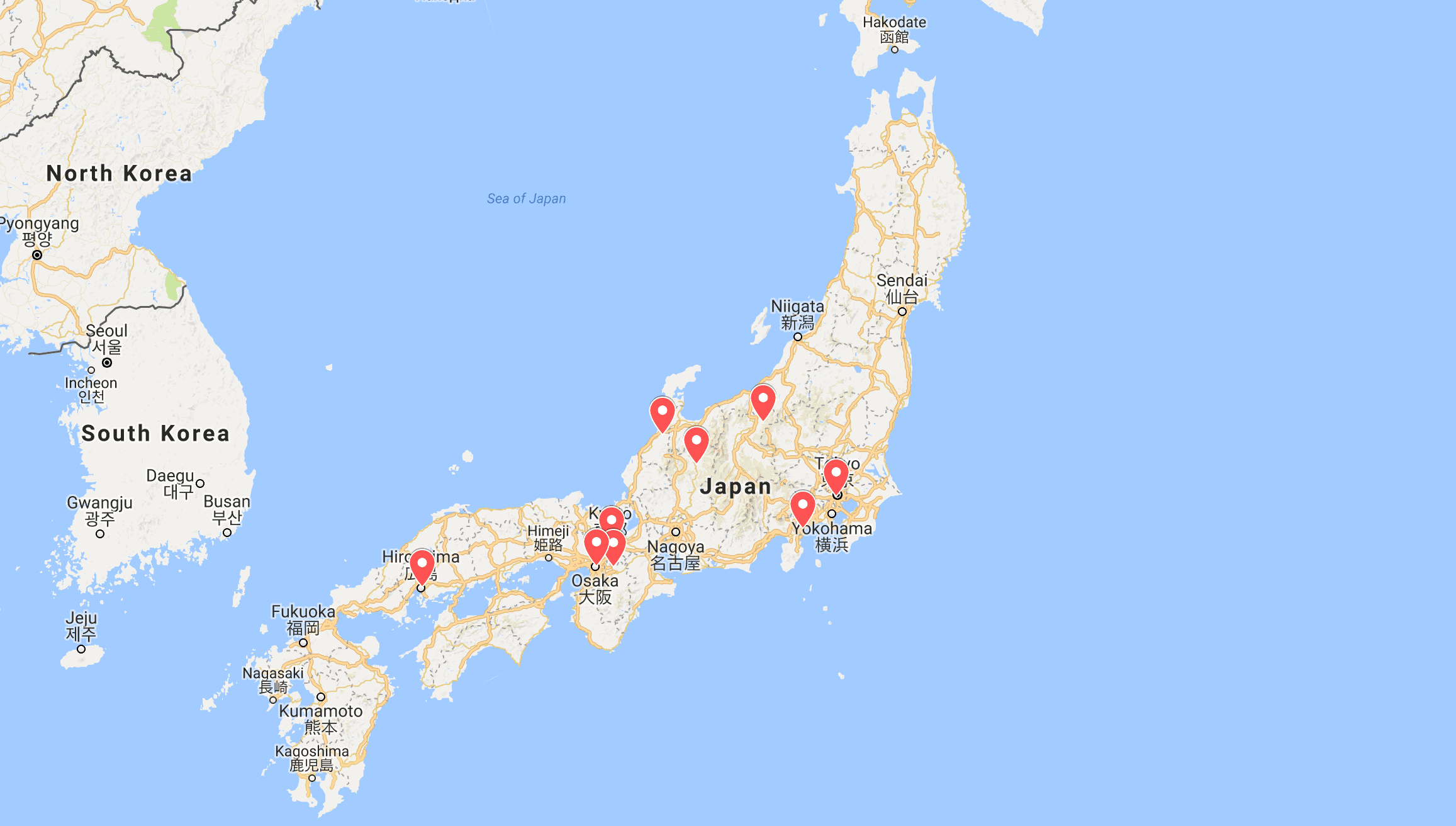
My 16-Day Japan Itinerary
Here’s a brief rundown of where I visited over my 16 days in the country — I think I managed to put together the perfect itinerary for first-time travellers to Japan .
Tokyo: 4 nights Hakone: 1 night Yudanaka: 1 night Kanazawa: 2 nights Takayama: 1 night Kyoto: 3 nights Hiroshima: 1 night Osaka: 3 nights
What’s Included in this Post
This budget breakdown covers how much I spent on accommodation, transportation, activities, food, and whichever miscellaneous items popped up while I was in country.
I’ve not included my flights into and out of Japan because this is going to vary significantly based on where you’ll be arriving from. In case you’re interested, though, I paid $320 for a return flight from Rome to Tokyo, which I scored through browsing my favourite site for flight bargains, Secret Flying .
The amounts in this guide are listed in Japanese Yen and U.S. dollars, simply because the vast majority of my readers are from the U.S. And finally, these are the three rules I always abide by on this site:
- I do not accept sponsored trips, so everything listed in this post is something I personally paid for with my own money
- I travel anonymously to ensure my experiences accurately reflect what yours will be. I don’t want special treatment!
- Every single word of this article was written by me, based on all of my own experiences. I strictly do not use AI to compose my guides.
Okay — let’s get started with my expenses.
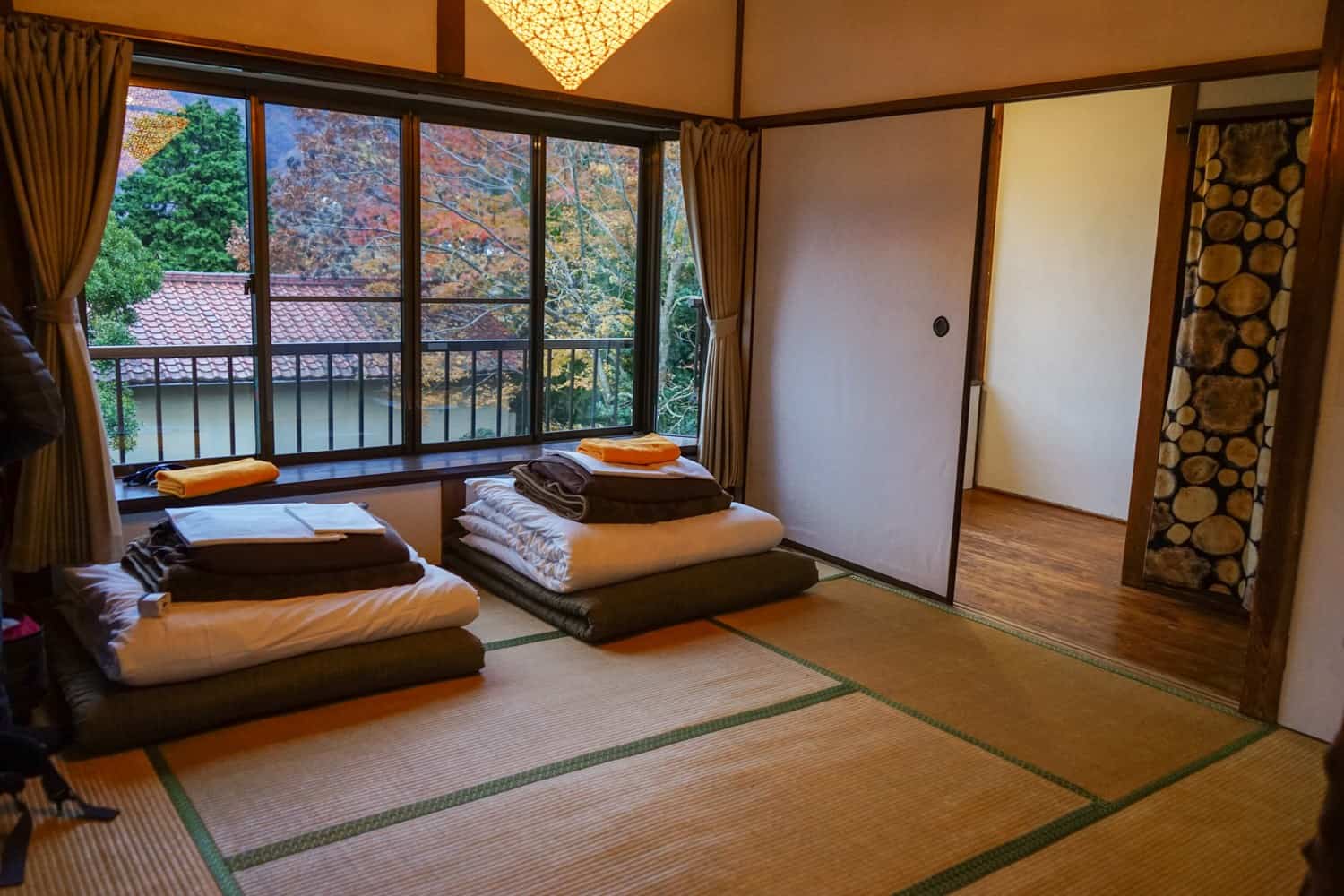
The Cheapest Accommodation Options in Japan
Like practically every country in the world, prices in Japan have increased post-pandemic.
In 2024, you’ll be paying a little more for everything than you would have done a few years ago — in fact, prices almost doubled between my first trip in 2017 and today! — however costs are still on a par with most Western countries. Travel in Japan shouldn’t be too devastating to your travel budget.
I’ll start on the lower end of the spectrum. If you’re willing to put in the time and effort, it’s possible to avoid paying for accommodation entirely.
Couchsurfing exists in Japan and allows you to stay with a local for free , usually sleeping on their sofa and enjoying a local’s insight into life in their country. Yeah, it’s not the most comfortable of living situations, but if your budget’s tight, it’s worth sending out a few requests to hosts to see if anything comes of it. You can browse through the 300,000+ Japanese hosts on the Couchsurfing site — just be sure to read the references of anybody you choose to stay with.
Housesitting is a more upmarket option, aimed at mid-range and luxury travellers. Housesitting involves taking care of somebody’s house for free while they’re away, often (but not always) looking after their pets, too. It’s best for long-term travellers or retirees, as you can’t pick and choose dates and destinations, so you’ll need to have a lot of flexibility as to where you go and at what time of year. If you do have that freedom, though, it’s a wonderful way to cut down your travel expenses, soak up some home comforts, and live like a local for a while. Trusted Housesitters is the main site for getting started with housesitting, as they have the highest number of listings.
Finally, when it comes to free accommodation, you could take a look at WorldPackers in Japan , where you’ll be able to volunteer for locals in exchange for food and board. There are some seriously cool options available on the site right now, from helping harvest honey for a bee farm in the countryside to lending a hand in the garden of a Buddhist temple. Readers of this site get a $10 discount for WorldPackers with the promo code neverendingfootsteps .
If you’re not looking to travel for free and just want a clean and comfortable room to sleep in, there are plenty of great budget options, too.
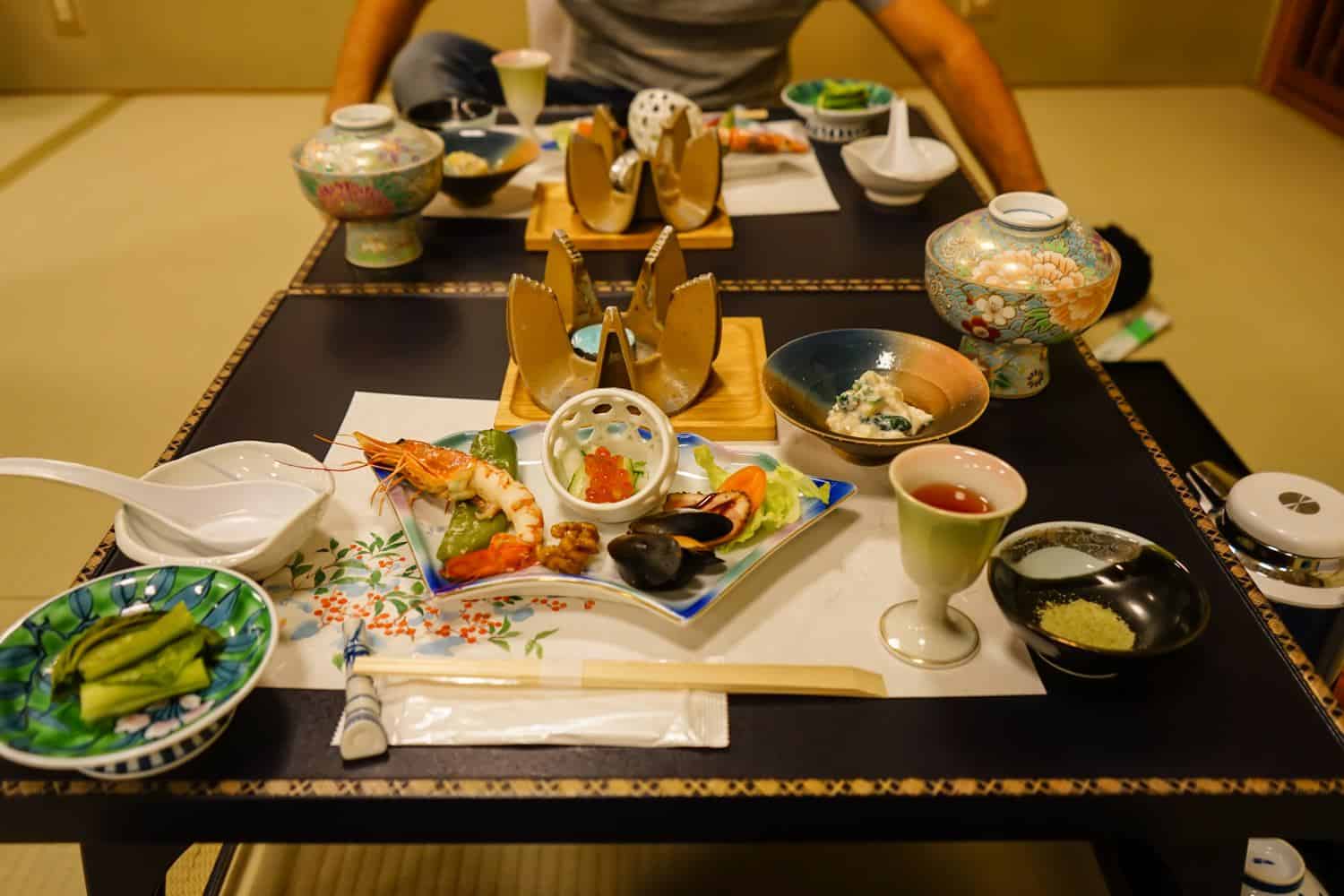
And then we have hostels . In Japan, you’ll come across hostels all over the country, finding them on tiny islands, large cities, and even within the national parks. They’re one of your best options for saving money.
Hostels in Japan are on a par with the rest of major cities in East Asia, and you can expect to spend $25 a night for a dorm bed for a well-reviewed hostel, with the price increasing slightly to around $45 a night for the absolute best of the best.
When it comes to private rooms in hostels, you’ll be looking at $50 a night for a clean, basic room in a good location, so if you’re travelling with friends or with your partner, you may find it cheaper to grab some privacy over settling for two beds in a dorm room. $90 a night will get you an exceptionally well-reviewed private room in a hostel.
I use HostelWorld to find the cheapest hostels, as they tend to have the greatest number of listings at the lowest prices.
And then there are hotels, which I’m going to jump into next.
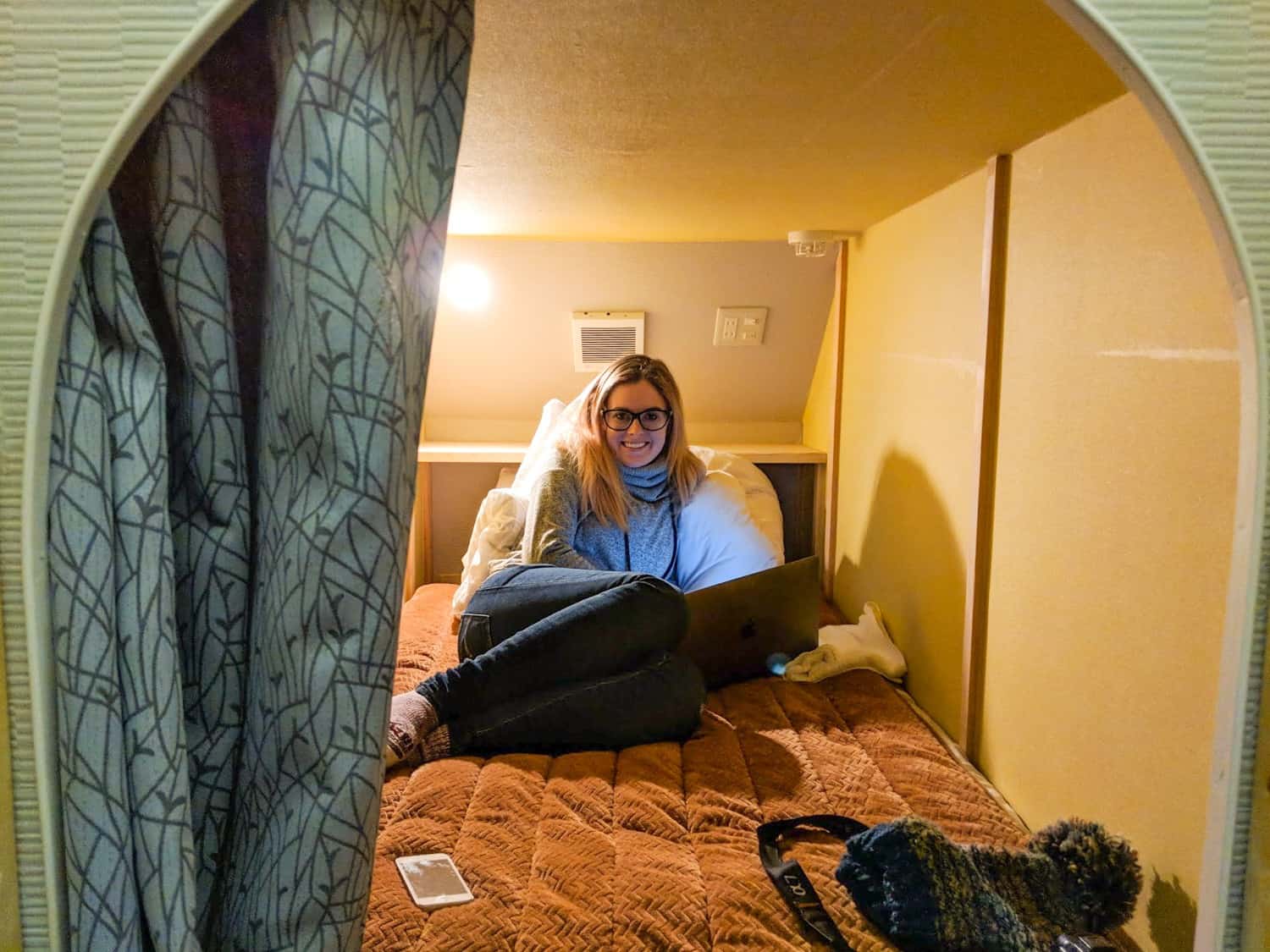
The Cost of Accommodation in Japan
There are so many different types of accommodation in Japan! I attempted to experience as many as possible while I was in the country.
I stayed in a capsule hotel, prioritised hunting down a ryokan, slept on a tatami mat floor, stayed in family-run guesthouses, and checked out some pretty cool hostels. While I did attempt to save money by staying in some cheaper places, I was also happy to splurge on extremely well-rated rooms, too.
As always with these budget breakdowns, I like to share the prices of where I personally stayed, along with a description of the property and whether I’d recommend choosing it, too — hopefully this helps make your trip planning easier!
I visited Japan with my partner, Dave, and we travelled on a mid-range budget; searching out good value accommodation that was highly-rated and in a central location. We prioritised locally-run properties that weren’t too flashy or fancy; for us, a cosy vibe, unique furnishings, and welcoming staff are far more important than the generic decor of a hotel chain.
(Oh and just a quick note: hotels do charge different prices across a range of dates, depending on how busy a certain travel period is going to be. Because of this, it’s hard to be super accurate in the costs that I list. To get to the quoted prices below, though, I looked at the rates across the next six months and took the average: it could be slightly cheaper or more expensive, depending on when you’re visiting.)
Tokyo: $135 a night Odds are, you’re probably going to kick off your Japan adventures in Tokyo, and if so, it only makes sense to really throw yourself into the local experience. That’s why we decided to stay at this lovely onsen-ryokan in Shinjuku. (Whenever readers ask me which neighbourhood to choose in Tokyo, I always recommend Shinjuku or Shibuya.) The reason why I loved this specific property, though, is because it’s a ryokan (traditional Japanese Inn) that also has an onsen (hot pool). It’s a great way to jump immediately into all things Japanese.
And it was wonderful; my favourite hotel in the country. The rooms were small and cosy and felt super-traditional and calming. The views over Tokyo at night from the window were incredible. And the rooftop onsen? With free popsicles afterwards? So good. It’s located in a quieter neighbourhood, but still only a 10-minute walk to the subway. I really recommend this one!
Hakone: $80 a night In Hakone, we opted for a private room in a lovely guesthouse , with a tatami mat floor to sleep on and a private onsen on-site. The photo of the tatami mat room above is of our room here. It ended up being another one of our favourite stays in Japan! The staff were lovely and there was a restaurant/bar that served up fantastic pizzas. It had a cosy and chilled-out atmosphere, with great food and wine, and lots of blankets to snuggle up with as we ate. It was also worth staying here just to experience the private onsen — we got to go in as a couple!
Yudanaka: $105 per night In Yudanaka, we opted for a stay in a wonderful little ryokan ; this one was even more traditional than the one in Tokyo! Often, ryokans can be super-expensive in Japan — as much as $500 a night for the experience — so I was thrilled to have stumbled across a more budget option in Yudanaka. It was run by an adorable Japanese couple and their house came with a private onsen, return transport to see the snow monkeys , and one of the most extravagant meals of my life. A kaiseki is a multi-course (like, 20 courses) meal that will see you eating roughly a week’s worth of food in a single night, sampling fresh, local-to-the-region Japanese cuisine. It was phenomenal, and I loved having no idea what anything was. It even included homemade plum wine, which was so good! I highly recommend the experience (although strongly advise you not to add breakfast to your booking — we were still so full that we couldn’t eat any of it!)
Kanazawa: $65 per night Kanazawa is home to some seriously cool accommodation! We had a hard time choosing where to stay because every property looked so cosy and inviting. In the end, we settled on this minimalist, modern set-up — it was great value for money relative to most other places we stayed in Japan, especially when you consider it’s only been open a year. It’s in a great location, right outside Omicho Market, where you’ll sample the best sushi of your life. Also within walking distance is Kanazawa Castle and Kenroku-en Garden, so you’re really staying in the heart of it all. I recommend signing up for the traditional Japanese breakfast, as you’ll likely not have had anything else like it before! There’s also an onsen and laundry facilities (always appreciated mid-trip!), and the staff were so sweet and kind.
Takayama: $76 per night In Takayama, we stayed in a small, locally-run guesthouse in the centre of town. It felt like particularly good value for Japan, as it was one of the few places we stayed that you could describe as spacious! It even had a kitchen and washing machine. The beds were comfortable and the hotel was within walking distance of everywhere, including the train station. It was quiet, the staff were lovely, and overall, it made for a comfortable stay!
Kyoto: $84 a night In Kyoto, we stayed in a cosy hotel in the heart of town — we loved this place so much in 2017 that when we returned to Japan this year, we knew we’d have to stay there again! The property was in a fantastic location for exploring Kyoto and the bathrooms were nicer than anywhere else we stayed. It’s one of the top-rated guesthouses in the city — while also being one of the cheapest — so when you take that into consideration, I’m convinced you won’t find anywhere better to stay in Kyoto.
Hiroshima: $40 per bed In Hiroshima, we opted for a capsule-style hostel because I didn’t want to leave the country without trying one — you can see a photo of the “capsule” at the top of this section. Fortunately, we found ourselves in a room with only two other people staying there, so our capsule room with 20-odd beds was light on snorers. The owner of this place was ridiculously lovely and it was within walking distance of all of the monuments and activities. Really great bathrooms, a fun common area, and a cheap price: surprisingly, I would have stayed another night!
Osaka: $108 a night I rounded off my time in Japan with a little bit of a treat, opting for this four-star hotel that offered a ton of freebies. It’s all about the onsen here — it’s open all day and is simply beautiful. After you’ve finished your daily bathe, there’s free ice cream to eat, free comics to read, massage chairs to relax in, and even free ramen to slurp on. Yes, really! It was in a great location for Osaka — just a couple of blocks from the nearest metro station. The decor was calming and traditional; the perfect way to say goodbye to Japan.
In total, I spent an average of $97 per day on accommodation over my 16 days in Japan.
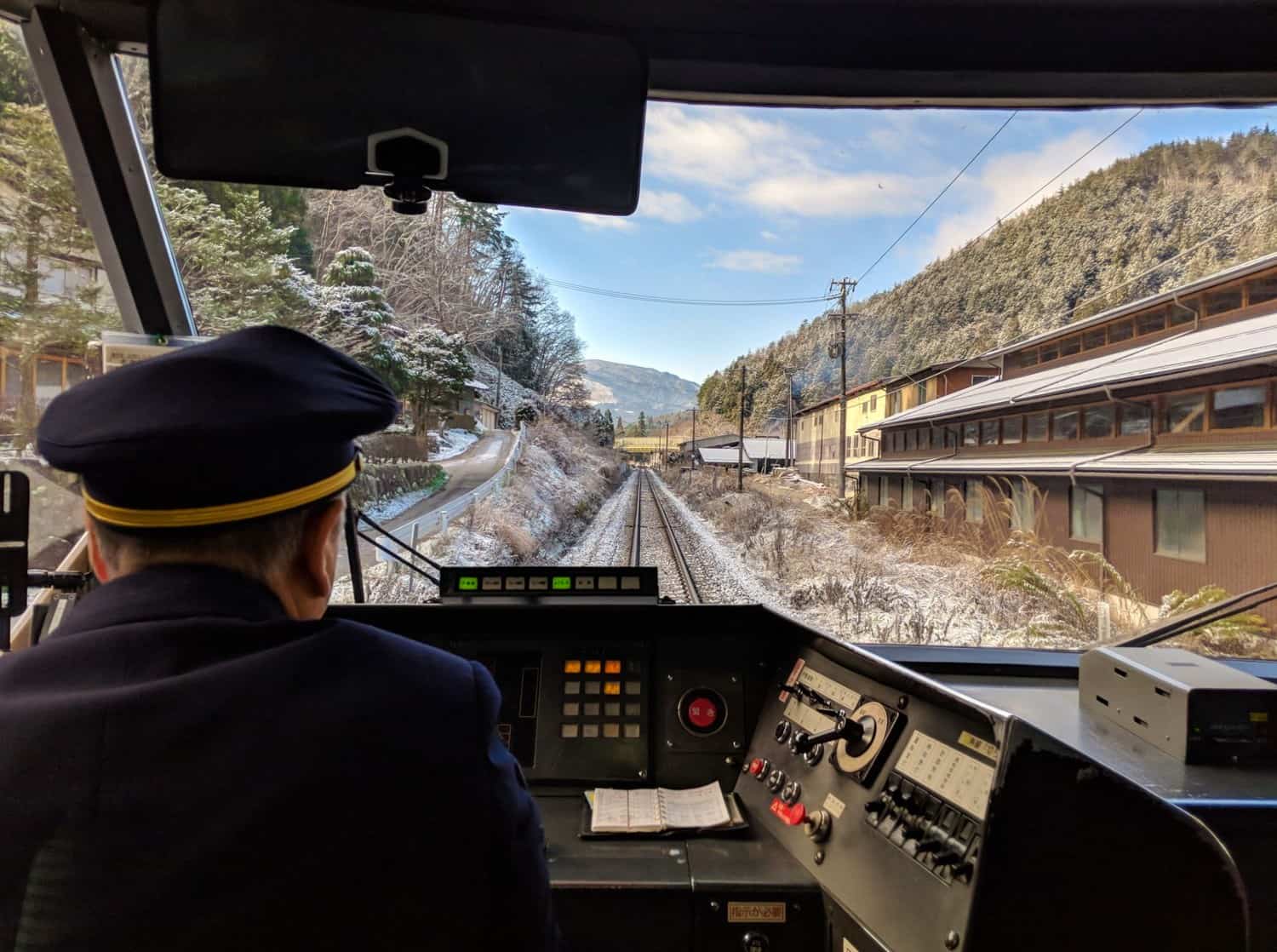
The Cost of Transportation in Japan
Okay, so let’s talk about transportation now. And specifically transportation post-2024.
It used to be the case that practically every visitor to Japan would invest in a JR pass (a train pass that grants you unlimited rides over a certain time period). After all, the best way to explore this country is by train, and by buying said rail pass, you’d be saving a significant amount of money on your trip — especially if you were taking a similar route to my one. A JR Pass pre-October 2023 would have saved me a whopping $175 over buying individual train tickets.
Seems like a no brainer, right?
In October 2023, the Japan Rail Pass skyrocketed in price. No exaggeration here: prices increased by an incredible 70% .
What a baffling decision.
What that means is that it’s not such a clear-cut decision anymore. The Japan Rail Pass still holds some benefits: If you’re a first-time visitor to Japan and don’t feel too confident about buying multiple single-journey train tickets, the pass will make it a lot easier: you just show it at any station and get on a train. You won’t need to worry about any extra charges and will have the flexibility to take train-based day trips whenever you want.
For most travellers, however, the value proposition is simply no longer there. For example, my recent 16-day itinerary (Tokyo – Hakone – Tokyo – Nagano – Kanazawa – Takayama – Kyoto – Nara – Kyoto – Hiroshima – Osaka) cost me 50,000 Yen ( $350 ) with single tickets. However, a 14 day rail pass is priced at 80,000 Yen ( $530 )!
Alas, the Japan Rail Pass is no longer something I recommend — unless you’re going to be taking enormous, lengthy rail journeys (like across the whole country) in a short period of time. Alternatively, if you do want that added sense of security and ease by not having to juggle a dozen train ticket bookings, you may find the extra price worth it.
So with all that being said: you’re most likely going to be using the JR West website to book your single train tickets online. This covers the entirety of Japan that’s west of Tokyo (all of the places I visited were west) and allows you to book your train tickets all in one place — and then you can reserve a seat on said train one month before its departure date. Honestly, it’s pretty easy to use, book, and reserve — and being able to do it all online means you can get everything sorted before you step foot in the country.
Let’s take a look at the some of the prices that a typical train journey in Japan costs — in this case I’ll use my itinerary mentioned above to plot out the costs:
Tokyo – Hakone: 2,500 Yen ( $17 ) Hakone – Tokyo: 2,500 Yen ( $17 ) Tokyo – Nagano: 7,500 Yen ( $50 ) Nagano – Kanazawa: 8,500 Yen ( $57 ) Kanazawa – Takayama: 5,000 Yen ( $33 ) Takayama – Kyoto: 9,000 Yen ( $60 ) Kyoto – Nara: 700 Yen ( $5 ) Nara – Kyoto: 700 Yen ( $5 ) Kyoto – Hiroshima: 10,500 Yen ( $70 ) Hiroshima – Osaka: 10,000 Yen ( $67 )
So if you were to replicate my Japan route exactly, you would end up spending $381 on rail tickets. It sounds like a lot of money but I do want to stress that the trains in Japan are some of the best in the world. They’re spotless, comfortable, modern, and lightning-fast. You will feel like you’re travelling in luxury.
If you’re not down to spend hundreds of dollars on trains, then the buses are going to be your best option. They’re cheaper, slower, less comfortable, often run overnight, and are complicated to book. The best sites I’ve found for booking long-distance buses is Willer Express and Japan Bus Online — but even they don’t run buses for several of the routes I took on my trip.
I thought it would be a good idea to share the cost of buses for the trip I took, so that you can compare them to the train and see how much money you could save.
Tokyo – Hakone: 2,250 Yen ( $15 ) Hakone – Tokyo: 1,800 Yen ( $12 ) Tokyo – Nagano: 2,200 Yen ( $15 ) Nagano – Kanazawa: No bus for this route Kanazawa – Takayama: 3,300 Yen ( $22 ) Takayama – Kyoto: 3,800 Yen ( $25 ) Kyoto – Nara: No bus for this route Nara – Kyoto: No bus for this route Kyoto – Hiroshima: 4,300 Yen ( $29 ) Hiroshima – Osaka: 4,000 Yen ( $27 )
As you can, see prices are generally around half what they are for the trains. You’d be looking at paying $212 in total for taking the bus, with three trains replacing the routes where I couldn’t find any existing buses.
We’ve covered the main ways to get in between the destinations, so now it’s time to take a look at how much you could spend on transportation within the cities.
Fortunately, this was where I found Japan to be really affordable. I love to explore cities on foot and I found many of the places I visited to be surprisingly walkable. In total, I spent $6 on the metro in Tokyo, $7 on the metro in Osaka, and $2 on the metro in Kyoto! Everywhere else, I just walked.
A reasonably big expense was our Hakone Free Pass (spoiler: not free), although this was more of a combined transportation and activity cost. At a cost of 6,100 Yen, or $41 , It provides you with unlimited transport around Hakone (where you’ll find Mount Fuji), and discounted entrance to all the attractions in town. If you’re going to Hakone, this will save you money because it covers everything you’ll definitely do there.
The Cost of Food in Japan
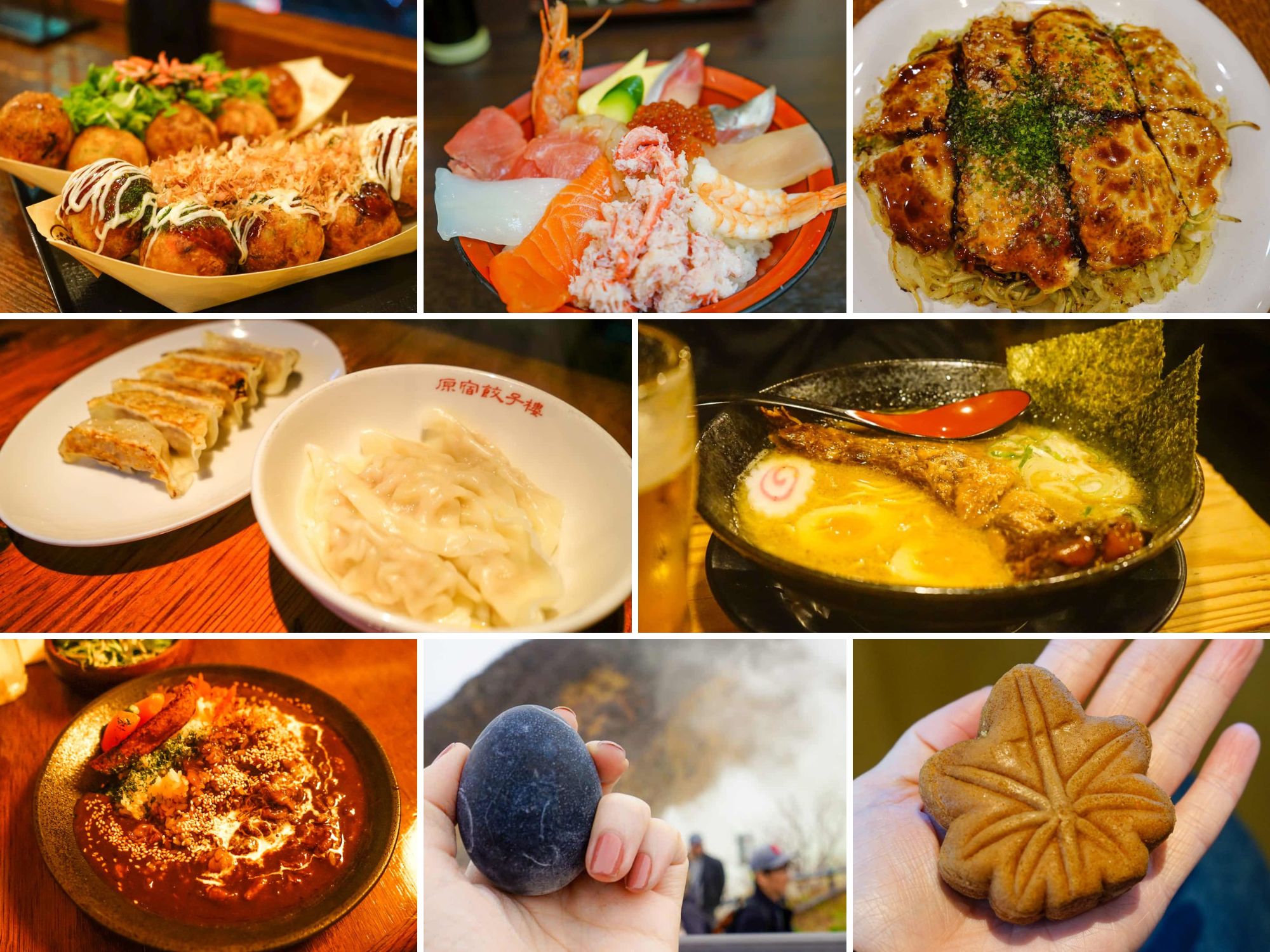
If you love Japanese food but have yet to travel to its homeland, you have such a treat in store for you. The food in this country is phenomenal; packed full of flavour and surprisingly inexpensive. It’s true: eating out is the easiest way for you to cut costs in Japan.
In fact, the vast majority of my meals in this country came to less than ¥1000 ($6.50) .
I’ll start first by breaking down the typical costs that you can expect to spend on the most well-known of Japanese dishes. Then, I’ll cover what you’ll be likely to eat for breakfast, lunch, and dinner, along with the costs associated with each of these meals. Finally, I’ll round out the section off by sharing some of my favourite food experiences in the country and describe which options are worth a splurge and which ones you can happily skip.
You can’t think of Japan without picturing sushi, so that feels like the most logical place to start. If you eat fish, this is going to be such a revelation for you! The sushi and sashimi in Japan is better than any I’ve had in the world and it was here that I finally understood how raw fish could ever be described as buttery.
To combine your sushi/sashimi-eating with a cultural experience, head to Tsukiji Outer Market in Tokyo or Omicho Market in Kanazawa. For a bowl filled with a selection of sashimi, like in my photo above, you’ll pay between ¥1,800 and ¥4,000 , depending on the size and quality of the fish. That’s the equivalent of $12-$25 .
Slurping on a steaming bowl of ramen is my personal definition of a true travel joy, so I opted for this cheap and cheerful dish most evenings as a way to save money. Note: the ramen in Japan is incredible , so don’t interpret my frugality as a hardship. Once you’ve tried the ramen here, I’d be surprised if you didn’t immediately start planning a return visit.
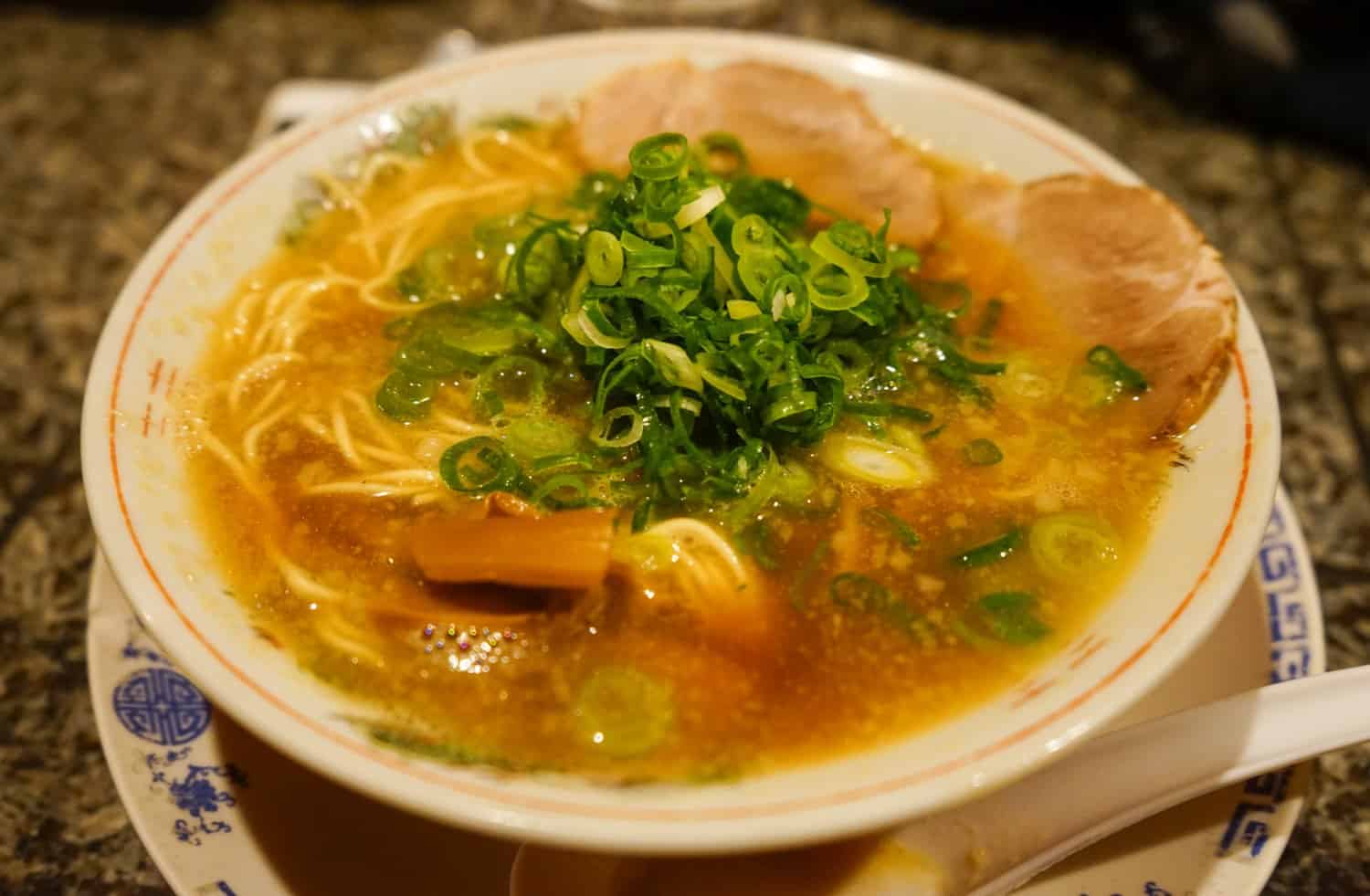
One of my favourite aspects of ordering ramen in Japan is how you’re given the option to customise the dish to your own tastes. It’s not uncommon to be handed a small slip of paper where you’ll get to mark down all of your preferences. Do you want your broth to be rich or light? Your noodles to be firm or soft? Added spiciness or none at all? Extra spring onion? A hard- or soft-boiled egg? Most options come out to ¥1000 ($6.50) for a bowl of pork ramen.
Speaking of cheap and delicious food options, I highly recommend sampling a couple of versions of okonomiyaki while you’re in town. This savoury pancake dish is so delicious, extremely filling, and inexpensive at just ¥1000 ($6.50) – ¥1500 ($10) . The cities of Osaka and Hiroshima each offer up their very own version of okonomiyaki and strong opinions are held by many over which is best! If you’ll be heading to both destinations, make sure you try one of each and let me know which is your favourite.
A dish that I tried for the first time while I was in Japan was Japanese curry and what a wonderful experience that turned out to be! In comparison to Indian curries, I found the Japanese version to be richer, sweeter, and less creamy, with plenty of umami vibes. Once more, you can expect to pay ¥1000 ($6.50) for a plate of katsu (pork cutlet) curry.
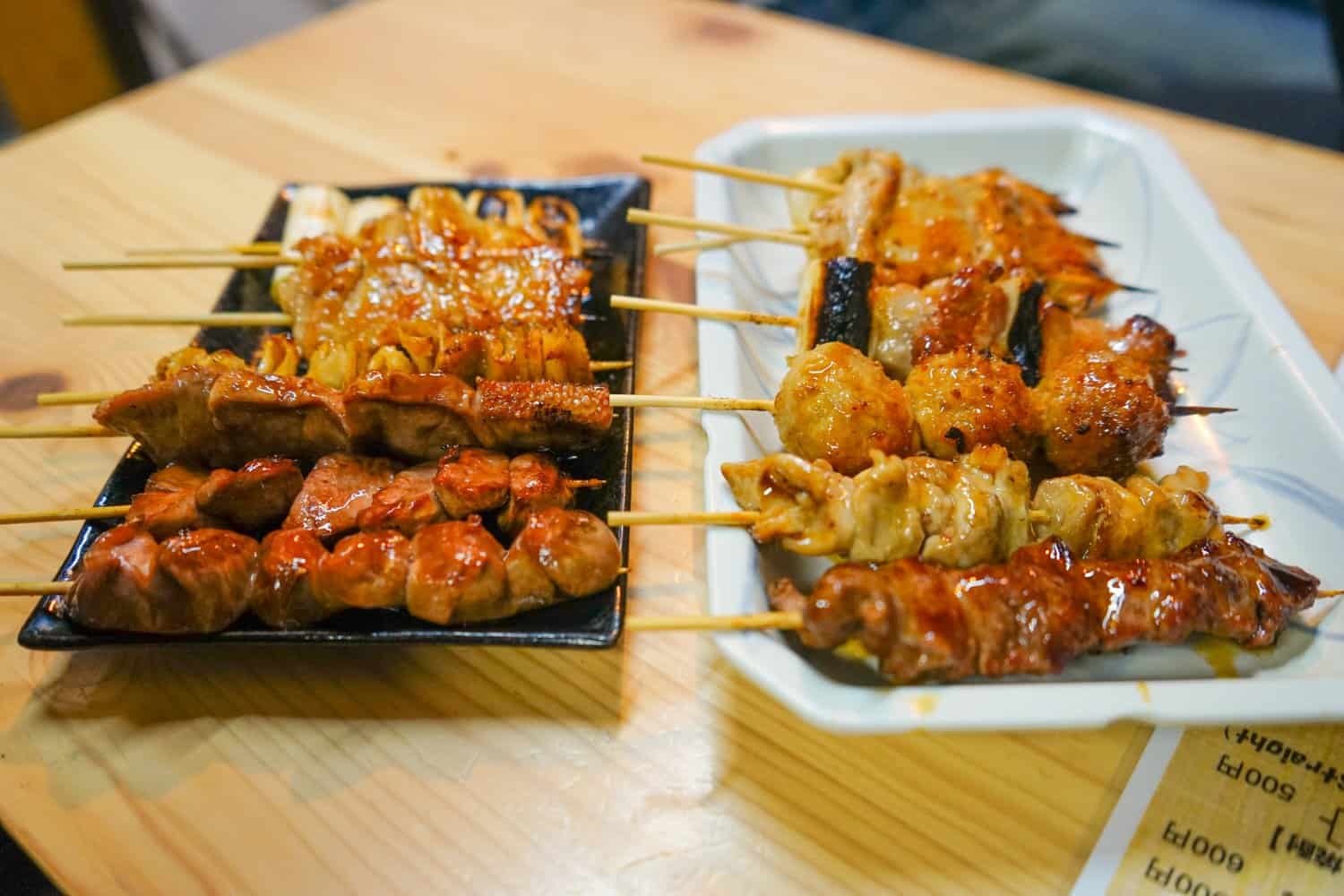
One of the most delightful aspects of my Japanese eating experiences was sampling all of the different snacks in the country.
Street snacks like takoyaki were ¥500 ($4.50) . We splurged on our kaiseki experience at our guesthouse in Yudanaka and paid ¥4000 ($36) for our food extravaganza. It’s a budget option compared to many other kaisekis, which can easily come to $100 for the experience, but still our most expensive meal. Another splurge was on sushi in Kanazawa, which I paid ¥2000 ($18) for.
Whether you’re on a budget or ready to splurge, it’s essentially impossible to eat badly in Japan. If you’re on a really tight budget, you can even get surprisingly decent food from 7-Eleven !
My total cost of food in Japan averaged out to $23.20 per day.
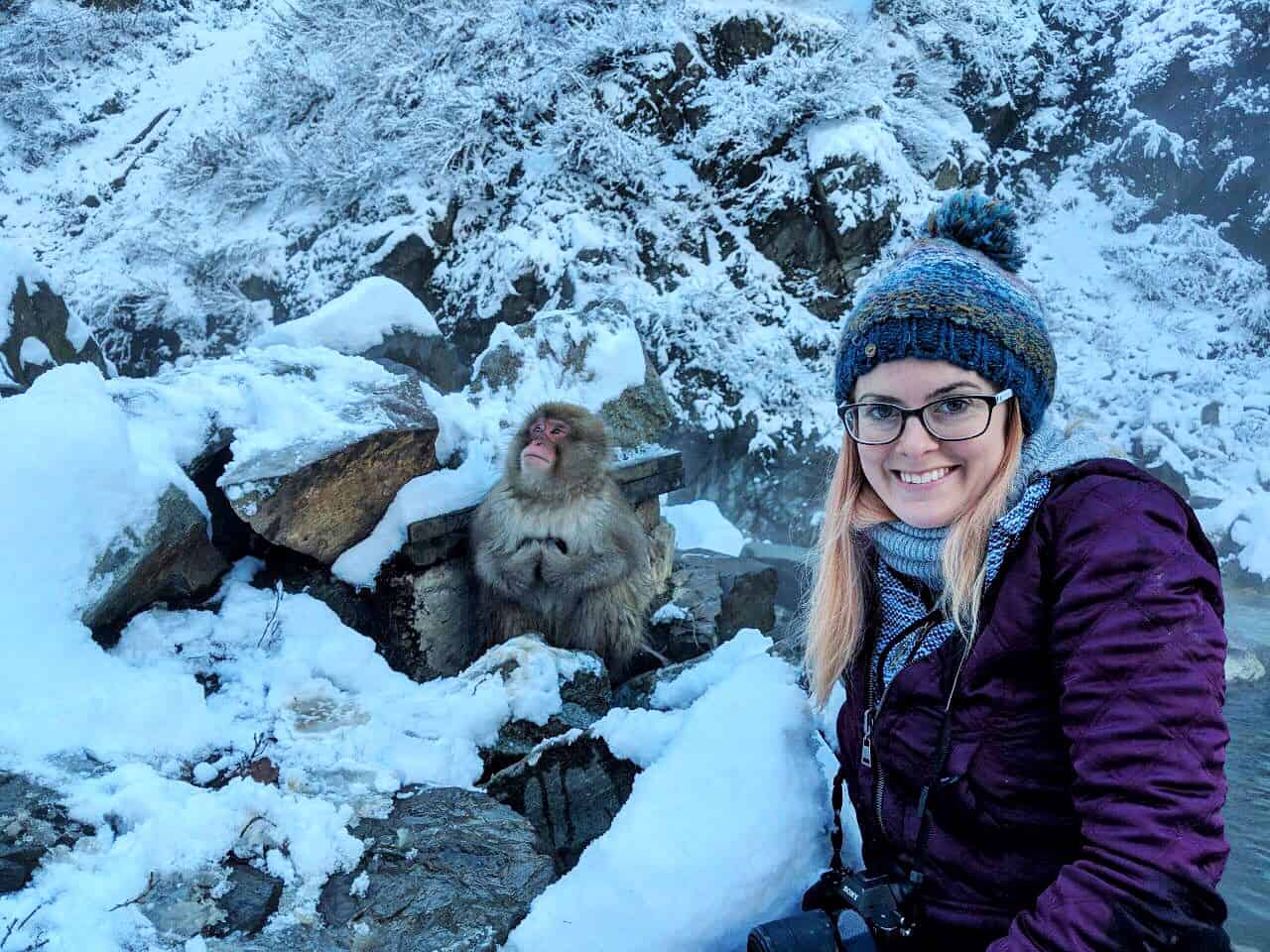
The Cost of Activities and Entrance Fees in Japan
Activities and entrance fees in Japan were very reasonably priced, and I never found myself outraged over the cost of anything. You’ll typically pay less than $5 to enter most temples, museums, and gardens.
Here’s how I spread my cash around:
Entrance fee for the hedgehog cafe in Tokyo: $13/1400¥ Entrance to the Snow Monkey Park : $7/800¥ Entrance to Kenroku-en gardens in Kanazawa: $3/310¥ Entry to the Golden Pavilion in Kyoto: $3/300¥ Entry to Ryoan-ji zen garden in Kyoto: $5/500¥ Ticket for the Hiroshima Peace Memorial: $2/200¥
My total cost of activities in Japan averaged out to $2 a day.
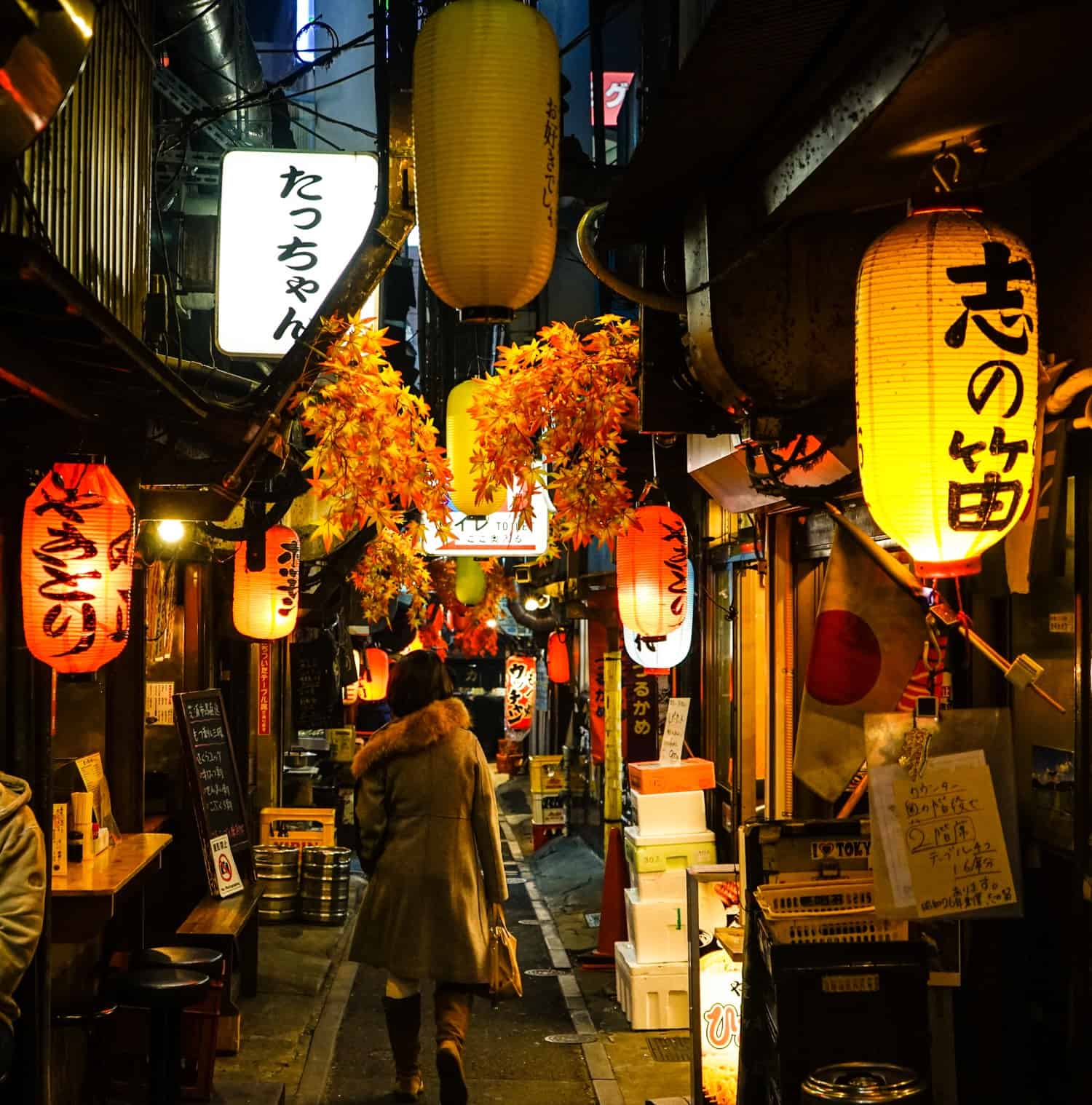
Miscellaneous Expenses in Japan
A local SIM card: $14
I mentioned above that I was able to buy a local SIM card when I purchased my rail pass. If you aren’t going to be using a rail pass in Japan, I recommend taking a look at Airalo instead. Airalo is a company that sells local e-SIM cards for travellers. What that means is that you can buy a virtual SIM card online before you arrive in Japan, and then as soon as you land in the country, can switch on your data and start using it.
It’s worked flawlessly for me and I’ll never go back to physical SIM cards. It’s just so easy! You’ll pay $6 for 1 GB of data or $14 for 3 GB for Japan and can also top-up through the Airalo app.
If you’re going down the Airalo route, just make sure your phone is e-SIM compatible first (all recent iPhones and many Androids are).
Insight Guides guidebook to Japan: $10
My sister bought me this guidebook as a gift before I left for Japan and at first I was like, Insight Guides? Meh. I wish she’d got me the Lonely Planet instead. Then when I opened it up and started reading, I swiftly discovered that Insight Guides are my new favourite guidebook company. It was so, so useful!
What I love about Insight is that their books focus heavily on the history and culture of Japan, with big, beautiful pictures, tons of information about local customs, food, and how to travel responsibly and respectfully. I recommend picking up a copy before your trip to Japan, but not taking it to the country with you — they’re big and heavy, so this is one for inspiration, planning, and education.
Luggage storage at Snow Monkey Park near Yudanaka: ¥500 ($4.50)
We had our backpacks with us when we visited the snow monkeys, so utilised the on-site storage facility while we hiked up the mountain in the snow. You can also hire snow shoes and winter gear if you’re unprepared for the climb, but I was fine in my totally impractical sneakers.
Travel insurance for 16 days in Japan: $60
If you’ve read any other posts on Never Ending Footsteps, you’ll know that I’m a great believer in travelling with travel insurance. I’ve seen far too many Go Fund Me campaigns from destitute backpackers that are unexpectedly stranded in a foreign country after a scooter accident/being attacked/breaking a leg with no way of getting home or paying for their healthcare. These costs can quickly land you with a six-figure bill to pay at the end of it.
In short, if you can’t afford travel insurance, you can’t afford to travel.
Travel insurance will cover you if your flight is cancelled and you need to book a new one, if your luggage gets lost and you need to replace your belongings, if you suddenly get struck down by appendicitis and have to be hospitalised, or discover a family member has died and you need to get home immediately. If you fall seriously ill, your insurance will cover the costs to fly you home to receive medical treatment.
I use SafetyWing as my travel insurance provider, and recommend them for trips to the Japan. Firstly, they’re one of the few companies out there who will actually cover you if you contract COVID-19. On top of that, they provide worldwide coverage, don’t require you to have a return ticket, and even allow you to buy coverage after you’ve left home. If you’re on a long-term trip, you can pay monthly instead of up-front, and can cancel at any time. Finally, they’re more affordable than the competition, and have a clear, easy-to-understand pricing structure, which is always appreciated.
With SafetyWing, you’ll pay $1.50 a day for travel insurance.
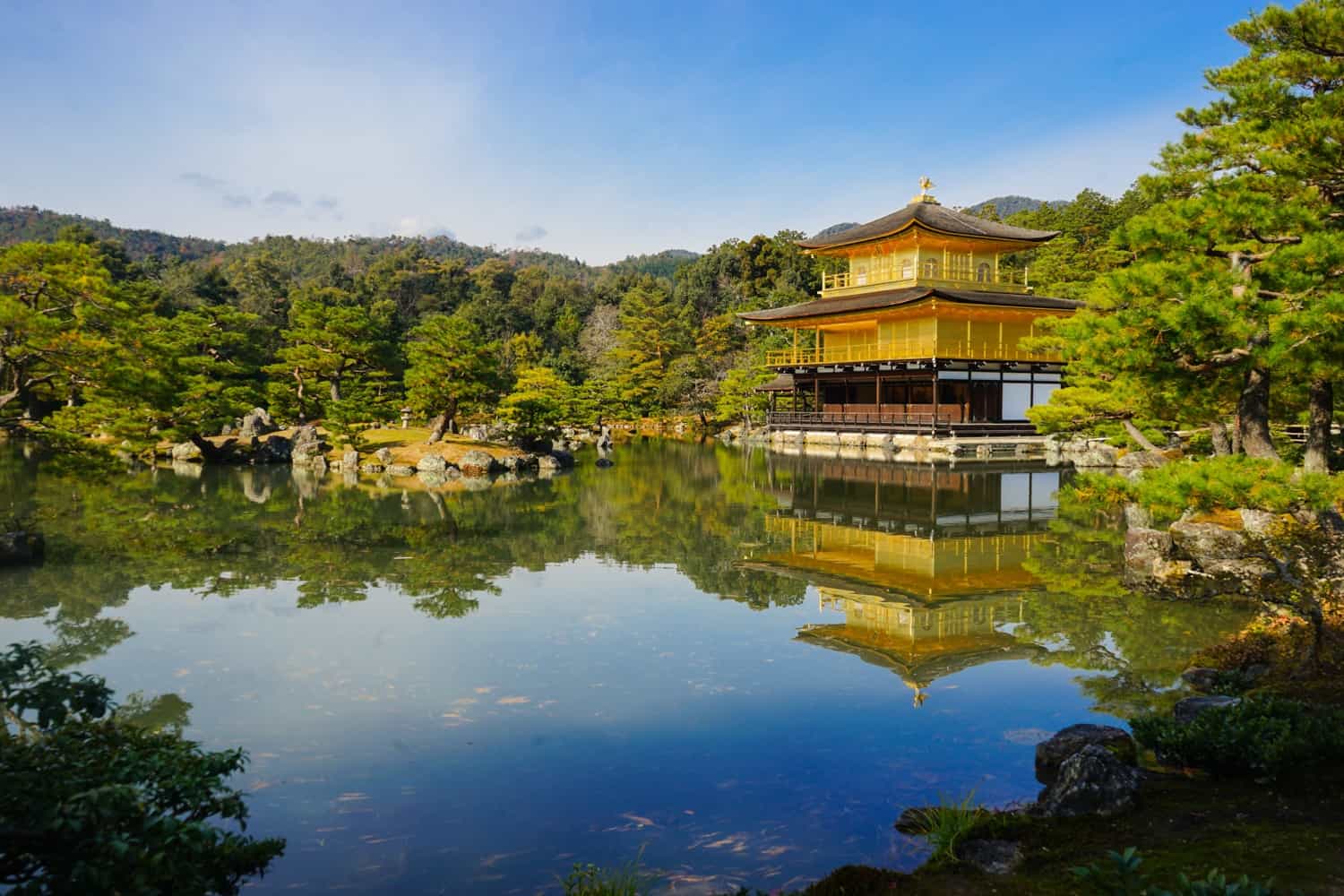
How I Track My Expenses While I Travel
Every time I share my expenses, you guys always want to know how on earth I manage to keep track of so many details from my travels!
Because Never Ending Footsteps is my company, the vast majority of my travel expenses are business expenses. I therefore studiously record everything I spend everywhere I go. I take photos of every receipt I receive and use Xero accounting software to record these expenses. In cases where I can’t get a receipt, I’ll take a photo of the price list and my ticket or food, or something as evidence.
Once a week, I then sit down and spend an hour or so uploading my receipts to Xero and making note of every penny I spent in each country I visit. It makes writing these posts super easy!
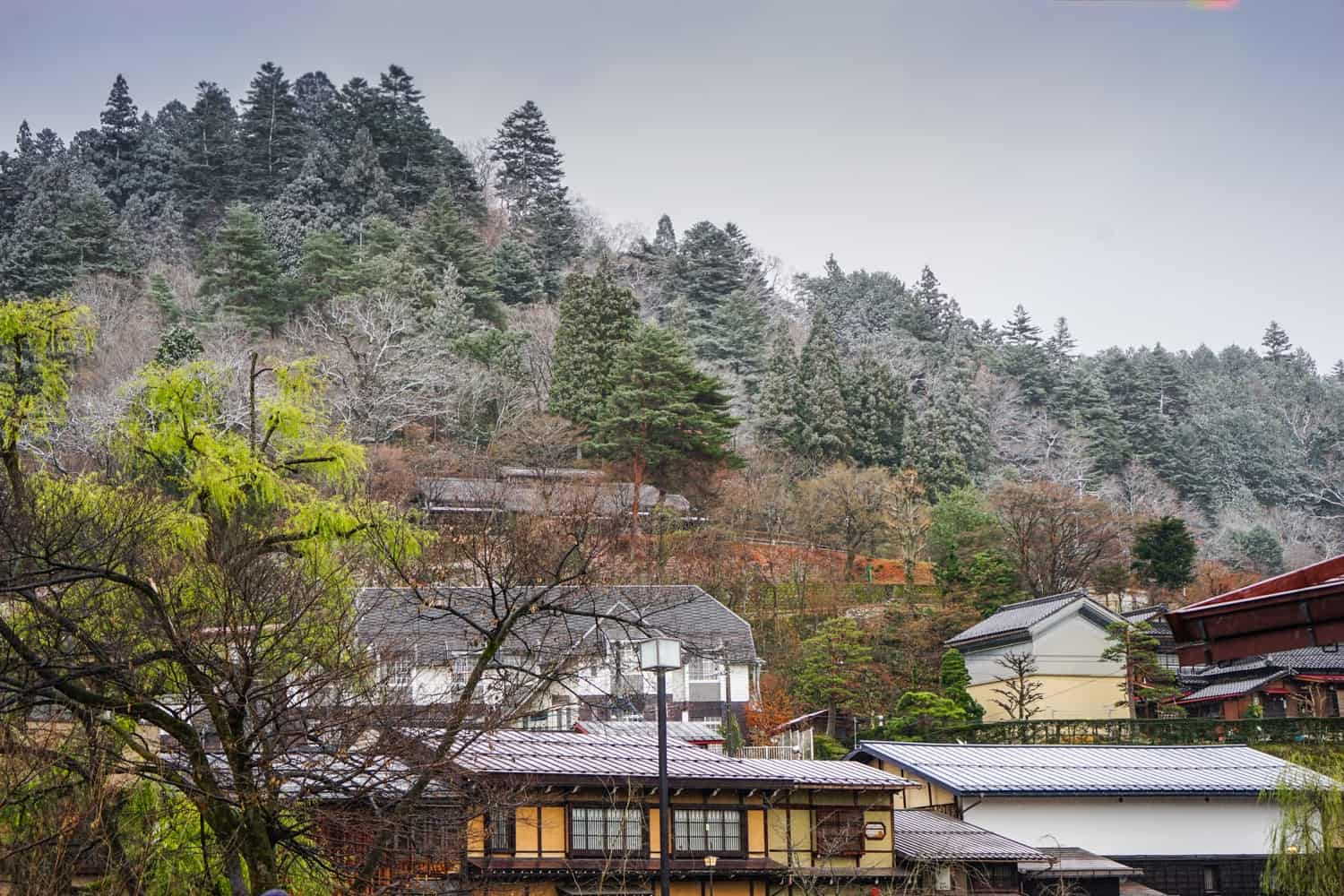
How Much Does it Cost to Travel in Japan?
It’s time to tally up all of my expenses to see my total travel costs!
Accommodation: $97 per day Transportation: $27 per day Food: $23 per day Activities/Entrance Fees: $2 per day Miscellaneous: $2 per day
Average amount spent in Japan: $151 a day!
I don’t know about you, but given Japan’s pricey reputation, I’m fairly impressed with the amount I spent in the country, especially as I included quite a few splurges in there.
How about you? How expensive were you expecting a trip to Japan to be?
Related Articles on Japan 🇯🇵 What’s it Like to Travel in Japan? 🏯 How to Spend Two Weeks in Japan: An Itinerary for First-Time Visitors 🍣 15 Weird and Wonderful Things to Eat in Japan 🎌 23 Incredible Things to Do in Osaka, Japan 🗼 21 Spectacular Things to Do in Tokyo, Japan 😎 Hipster Harajuku: The Coolest Neighbourhood in Tokyo 🦔 Should You Go to a Hedgehog Cafe? My Experience in Japan 🐒 Why Seeing the Snow Monkeys in Japan Sucked
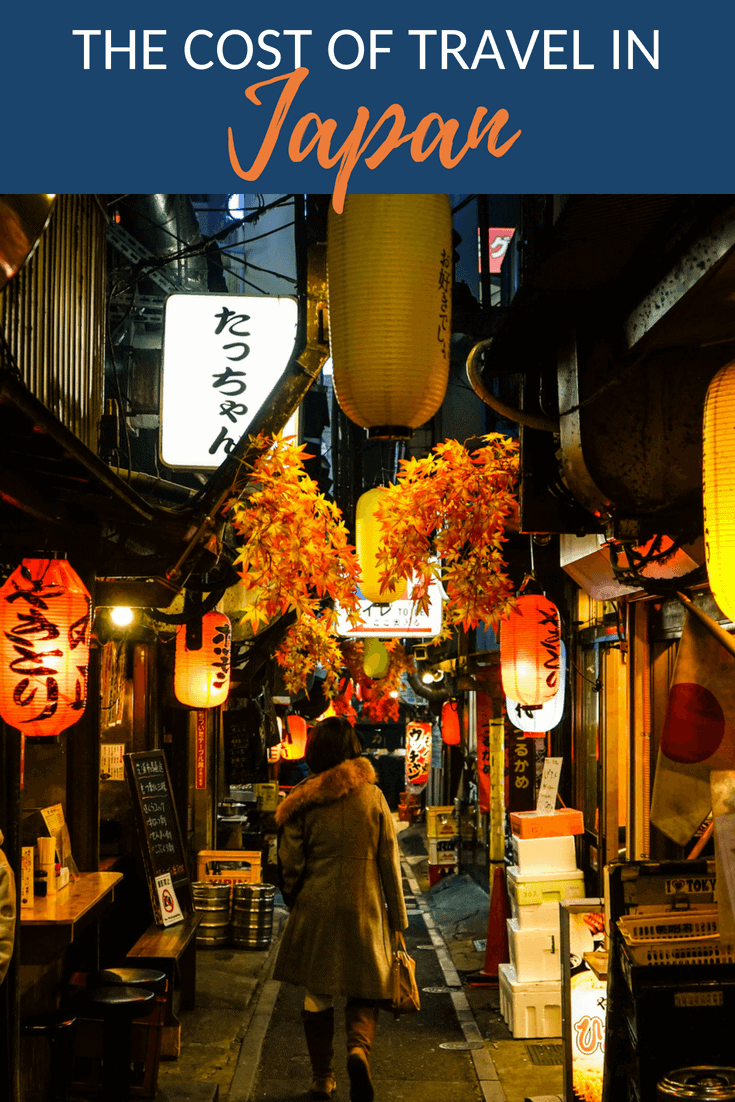
Lauren Juliff
Lauren Juliff is a published author and travel expert who founded Never Ending Footsteps in 2011. She has spent over 12 years travelling the world, sharing in-depth advice from more than 100 countries across six continents. Lauren's travel advice has been featured in publications like the BBC, Wall Street Journal, USA Today, and Cosmopolitan, and her work is read by 200,000 readers each month. Her travel memoir can be found in bookstores across the planet.
Related Posts

The Cost of Travel in Mauritius: My Detailed Budget Breakdown

The Cost of Travel in Thailand: My Detailed Budget Breakdown

2023: My Travels in Review

The Cost of Travel in South Korea: My 2024 Budget Breakdown

How to Spend Three Perfect Days in Delhi: An In-Depth Itinerary

Pushkar Travel Guide: 11 Things to Do in Pushkar
106 comments.
Wow! that’s amazing. I especially got fascinated seeing the capsule hotel…must have been a unique experience.
It was surprisingly cosy! I would totally stay in one again.
Thank you so much for your information. We will go to Japan in October 2023 for 1 month. Have paid fully for 16 days. Using your guides to budget the remaining 2 weeks. Thanks again.
This is great! Do you think it would be much more expensive in summer or any of the peak holiday seasons? I’m going over July this year and wondering if the prices change much with the seasons.
Wow! That’s quite an eye-opener! I’ve wanted to visit Japan for years, and this has certainly nudged me a little closer, as I assumed it was expensive too. The costs seem much better than I found in Amsterdam this spring! (my boyfriend still gets a thousand-yard stare when I mention how much we paid for drinks in one bar.)
Yay! Yeah, it really did feel about the same price as Western Europe, if not cheaper. The transportation is more expensive, but the food was cheaper in Japan.
This is super awesome! I, too, was under the impression that Japan was a super expensive place to visit! Good to know that you can save so much on accommodation and activities! Are you going to be posting about food in Japan? My knowledge of what to eat there is very minimal…
Yes! I published a guide to my favourite things to eat in the country last week: https://www.neverendingfootsteps.com/best-food-japan/
Ditto for here in New Zealand Lauren. All said it would be expensive. But we house sat – rent-free – and saw that food and travel are on par or cheaper than New Jersey. We also saw that virtually all things are cheaper than folks said. Methinks many labeling Japan and NZ as expensive as can be are used to paying $1 for lunch in Chiang Mai LOL. Budget folks see all Western lands as expensive. Granted I am from NJ; living by NYC makes for a high cost of living. But not bad at all, living in these lands.
Yeah, definitely true. I know that when I wrote off Japan as being too expensive, it was in the early days of my travels, when I could only afford to live in Southeast Asia!
Loving the posts about Japan so far. Do you have many more articles planned? I’ve a trip booked in November and this has been the most useful of the blogs so far for help in planning – thank you. Although I’ve had to cut the hedgehog cafe off my plans after reading your article as I hadn’t quite considered the ethics enough!
Yes! So many. I’ll probably post another half a dozen or more over the next few weeks :-)
I always assumed Japan to be very expensive. Thanks to your blog I don’t anymore. Cheers!
This is all very useful info! I’m impressed with your budgeting skills. Awesome, Thanks for sharing this!
Ha! Thank you :-) It comes naturally (finally) after seven years of doing this.
Great article. I’m planning a visit for early 2025 to go with my grandson … was the budget breakdown for one person or a couple … because you mentioned going with your partner?
The accommodation prices are the total cost of the room (rather than just my share), while the transportation, food, and activities are all my share of the costs.
Fantastic article. Love your budget posts because you never leave anything out.
I try not to! Thanks so much :-)
Beautiful photos, Japan look amazing and thank you for sharing your budget tips as well. :)
No problem! :-)
Thank you so much for this! I’m going to Japan in September and I’ve been worrying about my budget. This has definitely put my mind at rest!
Yay! Happy to hear that :-)
I’m so happy that you have posted so much lately, you’re my favourite travel blog and I check this page a lot more often now that the pace of the posts has increased :)
Thank you! :-) I’m aiming to stick to a three-times-a-week posting schedule now that I have a base and more time to dedicate to writing.
This is so much cheaper than I expected. Do you have any idea about prices for solo travellers though? Would I have to pay for a double room most of the time (apart from dorm beds of course)?
No, lots of hotels and guesthouses have single rooms, so you wouldn’t need to pay out for two people very often, if at all.
Thanks, that’s good to know!
Very useful breakdown that would be very helpful for first-timers to Japan.
Just to share, one of my own major expenditure in JP is … vending machine contribution! I simply can’t resist them and can end up buying seven times a day. “P
Yes! I couldn’t believe how many vending machines there were in the country, as well as the variety of things you could buy from them.
Hello! This is a very timely article for me to read as I’m actually going to visit Japan for a week on September. I really love Japan’s culture and their people. There are a lot of places that I want to visit and a lot of things I want to do but I am on a strict budget. Hopefully, your article would be able to help me fix my budgeting for my trip to Japan.
I hope so! I really didn’t find it horrendously expensive, so I think you’ll be surprised by how much you can do there for free.
I love your budget posts because they give me such a good idea of how much I can expect to spend in places around the world. Are you thinking of doing them for everywhere you visit?
That’s my plan! I’m slowly working my way through my records and adding more and more to the site.
Hey, thanks so much! :-)
I’ve planed to visit Japan next year, Thank you for sharing your budget, I’ll try to not exceed 100$/day, following your information on this post.
Have a fantastic trip, Ingrid! :-)
Which month you visited Japan? I am thinking for Cherry blossom (April 2019) and everything is coming up too expensive. Are those above for cherry blossom season you visited?
Ah yeah, unfortunately, the cherry blossom season is the most expensive time of year to visit Japan. I was there in December, so prices will be higher than the ones mentioned in this post. I’ll add that detail to my post now!
I was under the impression that Japan was a super expensive place to visit! Good to know that you can save so much on accommodation and activities! This article includes all the places you can visit in Japan and their expenses. It is very educative and it can be improved by providing expenses in INR. Thank you for posting this useful information.
Thank you! I usually just price these articles in the local currency and USD, which is where the vast majority of my readers are located. If I started including currencies for everyone, the post would quickly get ridiculous :-)
Seems a dumb question, but I’m assuming all the values are in USD, is it correct?
Yep! I write at the start of the post: “The amounts in this guide are listed in Japanese Yen and U.S. dollars, simply because the vast majority of my readers are from the U.S.”
That is a very good breakdown cost analysis there. i am planning to go to japan as well with my wife. and planning to stay for 10 days only. 4 in tokyo 3 in kyoto and 3 in osaka. i like to idea of 100 aud / day it’s a good target to keep but i guess the expense on buying cloths and souvenir would be uncontrollable though i heard things in japanese is not that dear if you know where to shop and avoid tourist trap. i didn’t see you mention buying internet data in advance ? or i missed it somewhere. i guess the expense for a couple will be double up. but i guess 3000 aud for 2 people is unavoidable.
amazing detailed guide
You’re welcome!
I’m so glad I found your website! I love the detail and photos. I just booked a trip to Japan with my boyfriend for this upcoming October, and your site will be very helpful. Question: do most hostels and accommodations that you experienced have you sleeping solo? I’m wondering if I should expect to sleep in a separate area than my partner for most of the trip…
Hi Lauren, Thanks for such a detailed description of your time in Japan! I’m going to Japan October this year with my wife and my major concern is how you managed to book sleeping pods for you and your boyfriend as almost all accommodations are either “male only” or “female only” from the options I’ve seen so far. Did you have to get separate beds for those nights?
Yeah, the capsule hotel-style accommodation is all single beds. You can see in my photo in this post that there’s not much room for anybody else!
My wife and I are heading to Japan in mid May and I plan to use your itinerary.
Would it be possible for you to write something about the travel logistics if you can remember them – ie to get from Tokyo to Mt Fuji we booked the following train, leaving at…from the following platform which took X hours and arrived at Mt Fuji at. We then bought our day pass from….and ……..
This would be really helpful to me and other independent travellers – from where did you buy your JR pass and how did you book your individual train rides?
Cheers Paul
Oh, man. That would take me hours and hours to put together and I’m sure times and platforms change so it would be impossible for me to keep the information up-to-date and accurate.
I recommend downloading the mobile app Hyperdia — you can plan your train travel out using that. Just enter in your destinations and it will tell you which train to take and from which platform. Super easy to use! :-)
The site I used to buy the JR Pass is this one . I booked the other train tickets in person at the stations when I arrived — there weren’t many that weren’t covered by the rail pass. Just the small regional ones to get to and from Yudanaka, I think.
Hello Lauren, I love the details in your blog. Your expenses were for 1 or 2 people?
I cover that at the start of the blog post: “And finally, these are the expenses I paid while travelling with my boyfriend. That means that accommodation prices (with the exception of the dorm bed in Hiroshima) have been halved to indicate my share.”
Great super helpful article. THANK YOU!
Hi Lauren, Thanks so much for this article, it is so helpful!!! on which dates did you fly to japan? what dates are you recommending on?
I spent the first two weeks of December in Japan. I’d recommend looking at May or September as the best months to travel there.
Hi Lauren I’d love your advice. I’m traveling with my 22yr old daughter to celebrate her graduation and my birthday. I booked the first two nights a hotel in Tokyo and then figured we would VRBO or Airbnb but after reading your post it looks like things have changed. I love the idea of the capsule hotels and the standard tatami mat rooms look enchanting. So how do I search for either? We’d like to experience both for the trip. oh by the way, I’m a traveler too, let me know where in the world are you now. Perhaps we can meet up and collaborate, I do video production, just got back from Colorado and am going to Cancun in June.looking forward to hearing back from you, Peace and Love always, “L” oh let’s connect on IG
Just book them through Booking.com — no need to go to any specific site. I’m in Bristol, in the UK. I actually don’t have an Instagram account — it wasn’t doing good things for my mental health, so I deleted it :-)
G’day Lauren,
Loved your detailed description of your travels through Japan. However; I’m not so brave as you travelling around on my own, especially with the language problem. I am a single traveler from Bangalore, India and would love to spend 7-8 days in Japan, with my journey starting and ending in Tokyo, reasonably priced hotels or local hostels, but preferably single accommodation, if possible. (willing to pay extra).
I love train travel and Japan is one of the best places to do that..your take on that would be appreciated. If you feel, I meet your requirements, would love to get an itinerary and costing for my 7-8 day stay in Japan.
Hello! I am really curious on how you got a 14 days pass JR for only 420$, from where I am from (Canada) it is 567!
If you click the link in the post, you can buy it through there. It’s currently listed for 414 USD.
$95/day seems cheaper than what I had expected – is that a tight budget? What can you do more with $150/day? I’d prefer to spend that extra on living in nice hotels + do more activities. Does that seem possible with $150/day?
No, not really. It was a mid-range budget and all of the hotels we stayed in were nice — I made zero effort to stick to a tight budget.
Hope you’re well. I’m wondering if you still advise from not booking Airbnb for Tokyo? Thanks.
Until moments ago, I had always assumed Japan to be too expensive to even consider. Never thought the cost of activities and entrance fees would be so cheap. This is an encouraging article, thanks, Lauren!
Really remarkable post, Lauren. Extremely thorough and helpful. I’m looking to plan a trip to Japan soon and stumbled across your blog. As you clearly hoped from city-to-city, (this may be a silly question) what did you do with your luggage on a day-to-day basis?
Thanks for any insight.
Oh, just left it in my hotels. If I spent less than a full day somewhere, it was visited as a day trip, so I didn’t take my luggage with me. And then whenever I arrived somewhere, I’d time my arrival with the check-in time of the hotel, drop my bags first, then head out exploring.
great article! As I have said in the past you always put out great stuff that’s very valuable information.
I just came across your website when searching for trips for Japan for my son. I have to say I am really so happy and want to thank you so much for the information. My eldest son has been taking Japan as a language course for the last 3 years and was looking forward to trying to get into the high school Japan trip in end of july beginning of August 2020. He also wanted to go to TUJ(Temple University Japan).
However, because of the olympics the high school Japan trip has been canceled for 2020. Unfortunately, he will be a senior next year so the 2021 high school program will not be available for him. Plus going to olympics are so expensive. If you can give me any advice, I would greatly appreciate. Thank you so much in advance for your time!!!
What advice do you need? About what?
Hi Lauren, I really liked you post and I think is really helpful. When exactly did you go in Japan? We have to change our plans for next February (previous planned for Philippines but to risky for my wife pregnancy) and we consider to go in Japan instead. So, do you think it is good idea travelling in Japan in February? Thank you and advance.
I went during the first half of December. As long as you keep in mind that it’ll be pretty cold (5-10 celsius), I think it’s a great time of year, as it won’t be as crowded as peak season.
is it favorable to use credit card or cash is much preferred? thanks
Hi. Thank you for the information! I am so inspired to go to Japan now. My mom who was from Japan, always told me it’s too expensive to go back and visit. I am now 56 and it has been my lifelong dream to go. My husband and I will go with backpacks like we did when we were younger and before having kids. Is October a good time to go? I read September can be humid. I want to follow your itinerary for the most part. My mom lived in Kanazawa. My heart is full right now and my eyes are misty. Thank you for making my dream a little bit closer.
Hey Lauren!
Thank you so much for the information. I actually got invited on a delegation to go to Japan this evening and am trying to get the average cost to travel in the country. Obviously, your trip was on a very impressive budget. I have two questions, 1. Based on the $95/day over the course of your 16-day trip, would it be right to say that (flight included) you only paid ~$1,600 for your entire trip? 2. Would you say for a trip including cultural experiences, transportation and stays in nice hotels for a week, a grand total of $3,700 is reasonable?
In advance, I appreciate your advice on this!
Hi Lauren, Are you able to name all the accomodations you stayed with? I would like to visit Japan next year on a very tight budget. Thanks.
Yes, they’re already linked in the post along with the reviews of them under the accommodation section.
Hi Lauren. I’m debating spending 5 nights in Osaka and doing day trips to kyoto, nara and himeji castle. (I have hotel points where i can stay at osaka). Based on your experience – is that ok? or is better to stay 2 nights in Osaka and 3 nights in kyoto. There is a lot of different opinions online, thought id ask you if you think i’d be missing out on anything if staying in osaka. The one plus is i can save some money if using points and also staying in 1 location for 5 nights vs packing and moving to another location. Thanks so much for your posts!
Hey i found this really helpful but I’ve been planning to visit japan for a while and have hopes of going after i graduate high school. With some research i found that the JR pass isn’t needed if you’re just staying in one city. How much do you think i would spend on transportation for 2 weeks in Tokyo? Will it come out to more than what you spent or less?
Definitely less! You can walk to a lot of places, but otherwise the metro won’t cost much at all — a dollar or two per trip.
Would you be able to give recommendations for food places in Kyoto that are affordable.
Hi Lauren. Came across your site on a Google search for budget travel. It convinced e that a trip to Japan is affordable. Never have done international travel and would like your advice on a couple of things. 1. What is the best way to pack? Do I have to just use a back pack? 2. Can I use a credit card or should cash be used? 3. Can I get cell phone coverage in Japan.
Thanks, you site is great!
1) I prefer to travel with a backpack, but you’ll do okay with a suitcase, too. I personally find backpacks easier for navigating train stations, as you don’t have to drag it up and down stairs, etc. It doesn’t really matter either way, though. Depending on how long you’ll be staying there, I usually pack for a week no matter how long my trip is, then do laundry once a week.
2) Japan is mostly cash-based, so plan for lots of trips to the ATM. I didn’t find many places that accepted cards, although I also wasn’t looking very hard either.
3) Yep, you can pick up a local SIM card at the airport when you arrive. I bought mine through the rail pass company I link to in this blog post, but you can also just buy one when you arrive. Super easy to do and they’ll get it set up for you in the shop, too.
Love your posts! have been browsing but when I stumbled upon your page found it really helpful! Planning for Japan and Singapore so finding both blogs is perfect timing :) We are still not sure if the JRpass will help us- when we did calculation for the main routes we are going it resulted not worth it, however then not sure if we will require any additional rails/trains in between these. Tokyo>Hakone>Kyoto> Osaka without returning back… your input will be appreciated :) P.S. Feel free to visit the island of Malta, my home country
Wooow !! This is amazing , My wife and I have been planning to visit japan and we always had a misconception that Japan is expensive to visit .. This is a great blog .. So the overall cost including your flight tickets and local travel in japan would cost around 2500 $ per person ?
This was so incredibly helpful! Normally I don’t find myself reading entire articles but yours was so informational and in depth. Thank you so much for helping me get an idea of how much I would roughly spend!
Ah, no problem! Thanks for reading, and I’m glad you found it useful :-)
I super love this article Lauren! I thoroughly enjoyed it. When all is well and my country allows us to travel again, this is going to be on my top 3 places to visit (the 1st 2 will be diving spots as I’m a freediver). I made sure to bookmark this page for reference. Again, thank you for writing this. One question though, when you say $ do you mean USD?
Yep, USD! “The amounts in this guide are listed in Japanese Yen and U.S. dollars, simply because the vast majority of my readers are from the U.S.”
How much did you spend on transportation in Tokyo? I mean if you hadn’t had the JR Pass? How much did you save in Tokyo by having the pass?
Oh, I didn’t activate the pass when I was in Tokyo — I activated it on the day I left — so that was my total expenses without using it.
Hi Lauren! I just read your post. My boyfriend and I are backpackers and we are planning our next trip to Japan. I wanted to ask you when did you go there? (what time of the year). Because we can only take time off during winter time (dec-jan) and I don’t know if that’s a good time of year to go. We are from Denver and snow doesn’t bother us but we also want to enjoy it.
Thanks in advance! Love your blog
I was there in December! There’s fewer crowds then, which makes it a great time to go! As an added bonus you get to enjoy all of the cosy onsens in the snow :-)
Even in these unprecedented times, I feel as if I have already traveled to Japan! I loved every minute of the information you gave me. This place is definitely next on my list, of course! It can be months or a year from now.
It appears you’re still getting traffic in the comments here (excellent) so I thought I would ask a broad question. Wife and I are thinking to take our 6 and 9 year old to Japan for about 11 days. Any destinations you might leave off your itinerary given a bit less time and traveling with kids?
Fantastic! I’ve never seen any article about travelling to japan so specific and detailed before!! It sure will help me prepare for my own first&solo trip! thank you so much
Great post, but the prices are wildly outdated now. Your $30/night hotels in 2018 are going for around $220/night in 2023. Insane!
Hi CS, what time of year are you looking to visit? I’ve had a quick check and every hotel I link to still displays roughly the correct prices (a couple were out by about $10-20 a night, but nothing like $190!). If you’re looking at going in May, for example, Hakone Tent prices their rooms at $176 a night, but then offers rooms at a price of $73 a night a month later in June, so the time of year can affect the pricing. I’ll make a note to mention this in a future update to the post.
I visited in the low season, in December, so the prices I paid were lower than they might be at a more popular time of year.
This is amazing on every level. Thank you! only issue is prices for accomodations double during sakura season so what can I do
Thank you Lauren, for this insightful and complete post.
Out of curiosity, do you know what was the average USD/YEN exchange rate when this trip took place?
Kind Regards,
I update the prices in this article every two months so the exchange rate used in the post is recent
How recent was your travel to Japan and what exact dates were you there? I’m planning to take my family of 4 there in 2025 and would like to schedule it during cherry blossom season. I heard prices usually go up during this time so I was wondering if your trip happened during peak or off-peak season.
I was there in December. Prices do increase a lot during cherry blossom season, unfortunately — that’s the most expensive time to visit.
very good post for budget travellers. thanks for sharing.
Leave a reply Cancel reply
Your email address will not be published. Required fields are marked *
- Tours & Experiences
- Tailor-made Trips
- Bahasa Indonesia
We are happy to see you again!
Continue with
Or use email.
No Account? Create one
Create account
Already have an account? Sign in
Quickly Sign up with
I agree to Japan Travel's Terms of Service and Privacy Policy . Terms of--> and acknowledge that Japan Travel's Privacy--> applies to me.-->
Email reset password link
Please check your inbox and click the link we will send to you.

Budget travel Planning
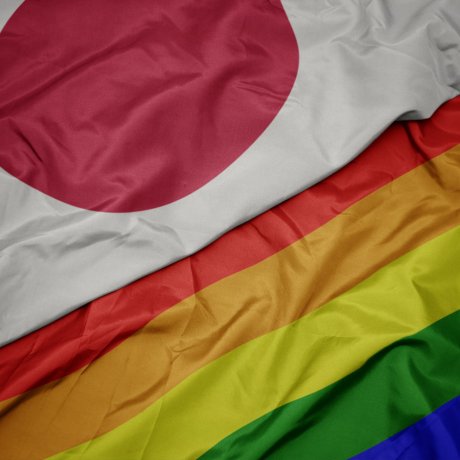
LGBTQ Travel in Tokyo
Where to go, where to stay, and when to visit info for LGBTQ people.

Top Ten Travel Tips Before Visiting Japan
Top ten list to help you navigate your time in Japan. From SIM cards to booking train and shinkansen tickets, this guide is here..

Receive 10 Million Yen to Travel Around Japan
Sekisui House has announced that it is on the hunt for a "TRIP BASE STYLE Ambassador." Provided with 10 million yen in travel funds,..
Search filters
Planning top 10.
- Recommended

Japan's 2024 Cherry Blossom Projections

Two More Sakura Drinks Hit Starbucks Japan

Currency Conversion & Exchange Rates

Beppu Makes Booking.com's Trending Destinations List

Guide to Golden Week

Tokyo Ranks 4th on World's Top Cities to Visit

Yamaguchi Makes NY Times 2024 Travel List

Japan Introducing Digital Nomad Visas

Mount Fuji to Charge Climbing Fees

Tokyo Trending with TripAdvisor for 2024
Let us know how we can help.

A local’s guide to visiting Japan on a budget
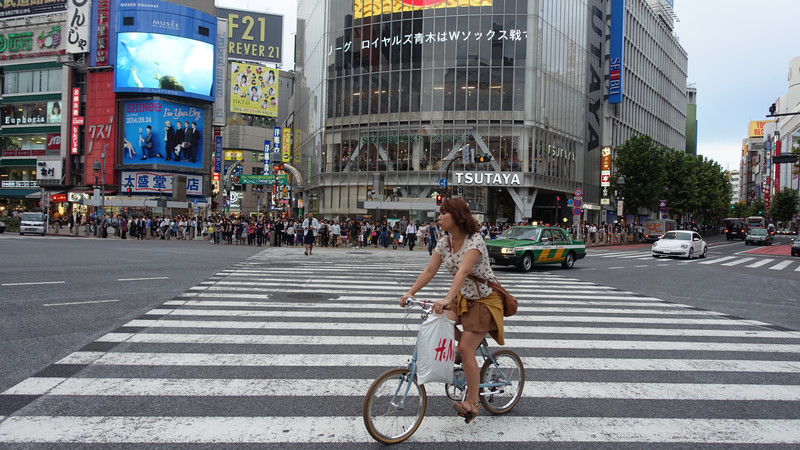
Japan is a dream destination for many travellers, yet all too often people delay or put off their trips entirely because of one looming fear: the cost.
Perhaps it’s the image of Japan as a futuristic tech hub, the Lost in Translation -esque city view bars where the cocktail prices are enough to warrant another ATM visit, or the idea of those $100 department store melons that seem to make the rounds of the Internet every so often.
The first time I visited Japan, I came with the same stereotypical expectations. I thought Japan was going to burn a hole through my pocket, and in some ways it did, simply because, as a tourist new to the country, I didn’t know the local alternatives.
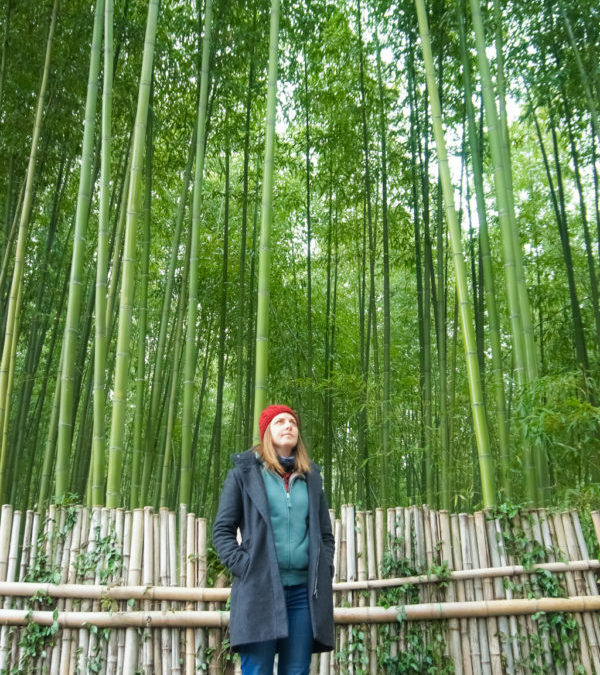
The Sagano Bamboo Forest in Arashiyama, 15 minutes from Kyoto by train, is one of Japan’s most photographed sights.
After 8 years based here, I can say that Japan rivals many developed nations with its budget friendliness, and today I’m on a mission to show you just how affordable it can be with some of my favorite travel hacks for sightseeing and dining. So let’s travel Japan on a budget.
Take advantage of free attractions and events
It may come as a surprise, but a lot of major attractions in Japan are actually free. With the notable exception of Kyoto, most temples and shrines around the country are free of charge. As are most natural sightseeing spots – like the deer park in Nara, the bamboo forest near Kyoto, cherry blossom viewing areas , and even Mt. Fuji.
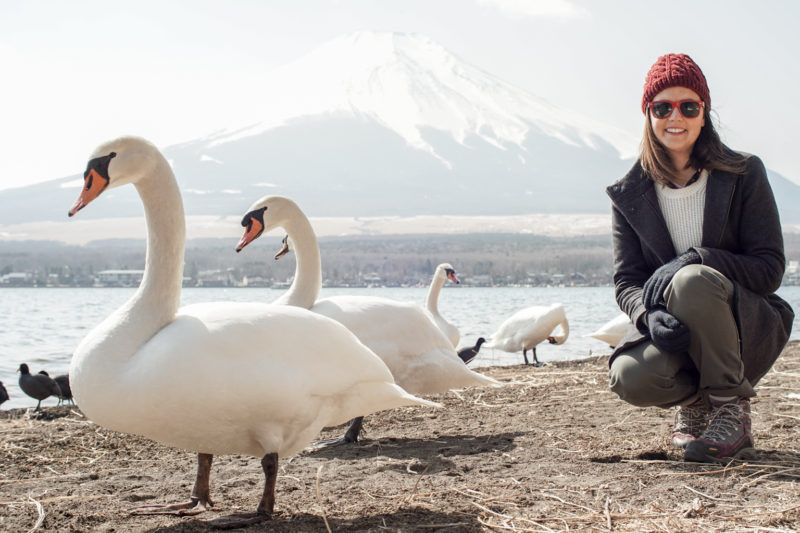
Visit Mt. Fuji and the surrounding Five Lakes area for some of the most iconic scenery in the country.
Traditional festivals are free too and are a fascinating window into Japanese culture. Summer is peak festival season , but you can find them all year round.
READ: THE ULTIMATE GUIDE TO 7 DAYS IN JAPAN BOOK: A BUDGET-FRIENDLY EXPRESS TOUR OF JAPAN
Sightseeing combo tickets & special offers for foreign tourists
Japan has an insane number of sightseeing tickets that include discounted transportation, and even entry tickets, meals or other services as a combo deal. There are some that run year round, while others change depending on the season or during special events.
A great place to start your search is by checking the ‘free passes’ available. They aren’t actually free but they usually refer to unlimited travel within certain areas. One of the most popular is the Hakone Free Pass, which allows you to explore the this popular hot spring area near Mt. Fuji with unlimited use of Odakyu-affiliated buses, trains, boats (it looks like a pirate ship, by the way!), cable cars and ropeways, and also includes discounts on various attractions.
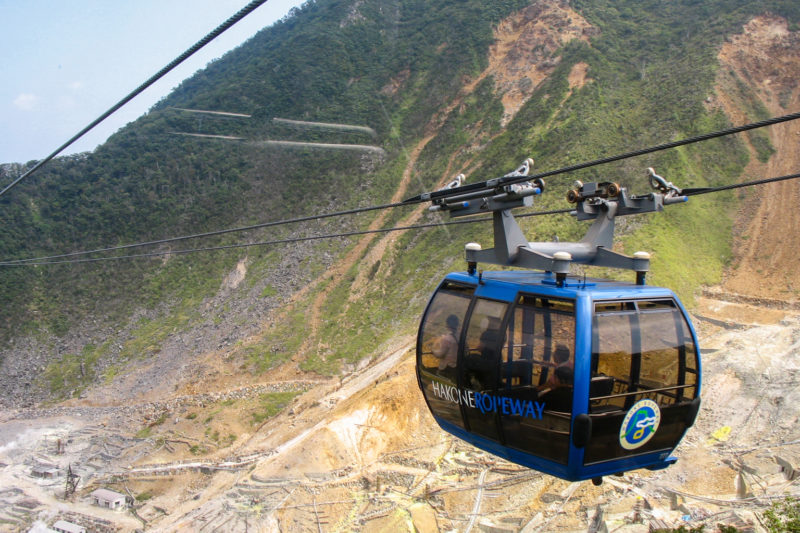
Explore Hakone on its variety of transportation offerings for an all-inclusive price.
To find out about the multitude of deals on offer, head into one of the tourist information offices or ticket centers at or near train stations. Many of the best discounts are foreign tourist specific, so remember to bring your passport with you to prove you are visiting Japan as a tourist.
SUBSCRIBE TO INTREPID’S NEWSLETTER FOR TRAVEL HACKS, INSPO, COMPETITIONS, GIVEAWAYS & MORE
Skip paid towers and go to free observation decks instead
The thing about popular towers is that they can be expensive, you often spend ages in line and then the view is so weather dependent.
Instead of Tokyo Skytree or Tokyo Tower, head to the Tokyo Metropolitan Government Building for a free city view instead – go to the south tower for the best panoramic view. In Kyoto, consider the station’s free Sky Garden, rather than the paid Kyoto Tower across the road. Bonus: you can capture these towers in your photos!
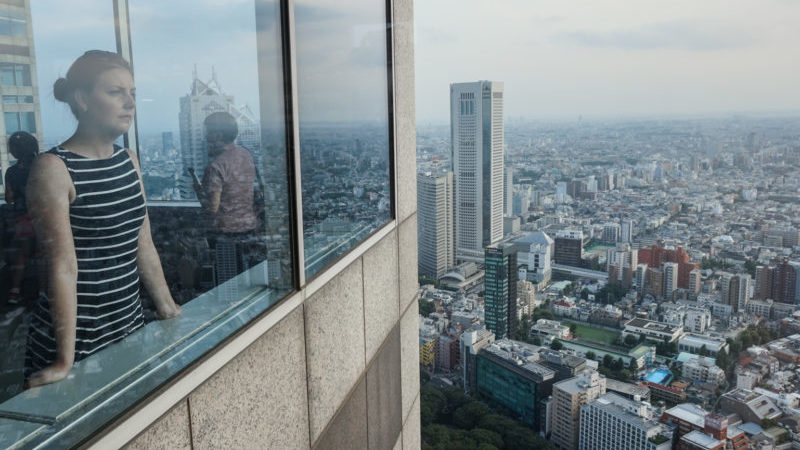
Looking out at the view from Tokyo’s Metropolitan Government Building in Shinjuku.
Visit attractions on free admission days or at a discount
Many museums will have a free admission day, either once a month or for special holidays or events. It’s worthwhile checking the websites of the places you want to visit and planning your sightseeing around free days or discounted times.
Insider tip: If you’re short on time but are looking for an authentic cultural experience, check out Urban Adventures for a local-led day tour. They have itineraries in Tokyo , Kyoto and Osaka !
High quality Japanese food at a good price
When I’m hungry and want to eat good quality Japanese food, I love to go to Ootoya . It serves delicious teishoku style food – a traditional Japanese set meal with rice, miso soup and pickles – and is a must-try on any trip to Japan. One of my favorite dishes is the black vinegar chicken and vegetables. You can expect to pay around $8-10 for a meal here in a comfortable, restaurant-style setting.
If you’re really hungry or just a big eater, request your rice oomori for a larger than average serving of rice at no extra cost. Ootoya is a chain that you can find all over the country.
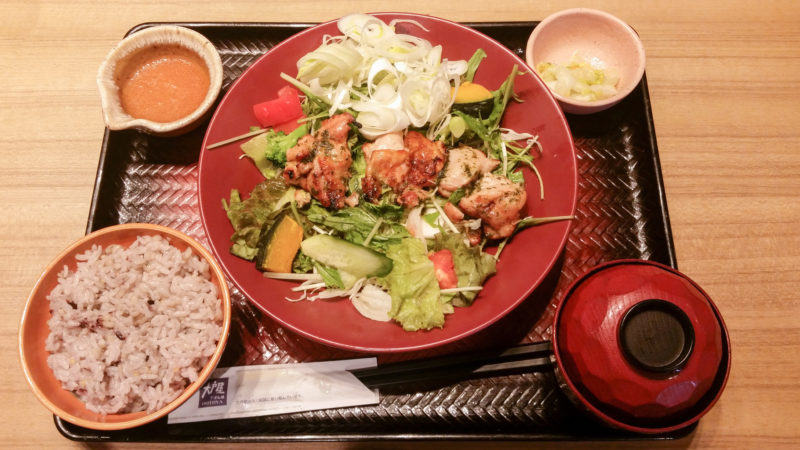
One of my other Ootoya picks, this one for a meal on the lighter side: the charcoal grilled basil chicken and vegetables.
Take advantage of lunchtime specials
Lunchtime is king for good-value meal deals. Japanese restaurants are renowned for having multiple menus. Be sure to sift through them all and locate the one with the daily lunch specials – usually called higawari ranchi. You can often find a set meal that also includes a drink and maybe even a small dessert for $5-7.
LOVE JAPANESE FOOD? CHECK OUT THIS 12-DAY CULINARY TOUR OF THE COUNTRY
Grab a ticket for a cheap meal
For a cheap meal on-the-go, you can try a vending machine restaurant.
Simply buy a ticket at the machine and then present it to the staff in exchange for your meal. Popular dishes at such restaurants include udon and soba noodles, and Japanese curry. You can find them everywhere and can easily get a meal for $3-4.
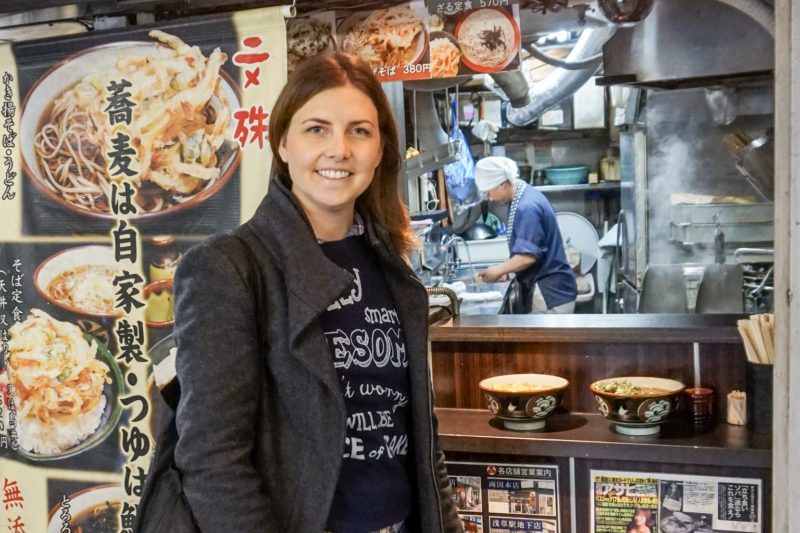
Waiting for my meal at a station vending machine restaurant.
Here’s an example of a typical set meal you can find at vending machine restaurants. It is a cold soba (great for the hot summer season!) with tempura prawns.
Did someone say free beer?
Yep, you can even try alcohol for free by taking advantage of the various free tours offered by Japanese breweries and distilleries. One example is the Suntory tour in Tokyo where you can get a free tour of the beer factory (in Japanese) that concludes with a tasting of three of their beers.
A free shuttle bus is even provided from the south side of Bubaigawara train station, near the horse-mounted samurai statue.
RELATED: 13 JAPANESE SNACKS YOU HAVE TO TRY
Conveyor belt sushi restaurants
For a sushi fix that won’t break the bank, head to a conveyor belt sushi restaurant, where you can get a plate for around $1.
Plates usually include two pieces of sushi and allow you to try all kinds of sushi varieties that you may not have the chance to experience back home. I never spend more than $10, including a drink and miso soup, and always leave extremely satisfied.
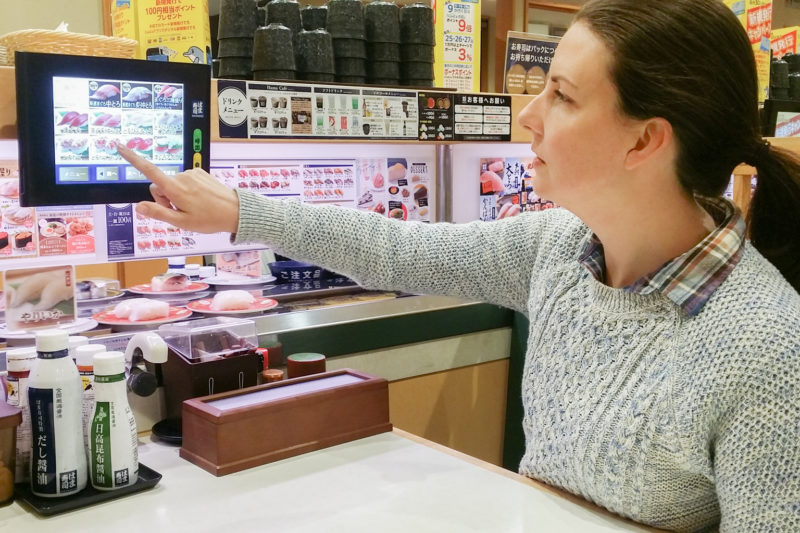
ANOTHER INCREDIBLE JAPANESE CULINARY EXPERIENCE: CONVENIENCE STORE FOOD
Eat street food
Grabbing a bite at street food stalls is not only fairly friendly on the wallet, but it allows you to literally taste Japan through its variety of snack foods. Osaka is one of the best places for street food in the country. (Check out this definitive guide to Osaka’s food scene.)
You absolutely cannot leave without trying takoyaki , balls of batter filled with octopus, and okonomiyaki , a savory Japanese-style pancake. Expect to pay around $5 for a light meal.
The experience is made all the more interesting with the gaudy, singing and moving sign displays along and around the Dotonbori shopping strip.
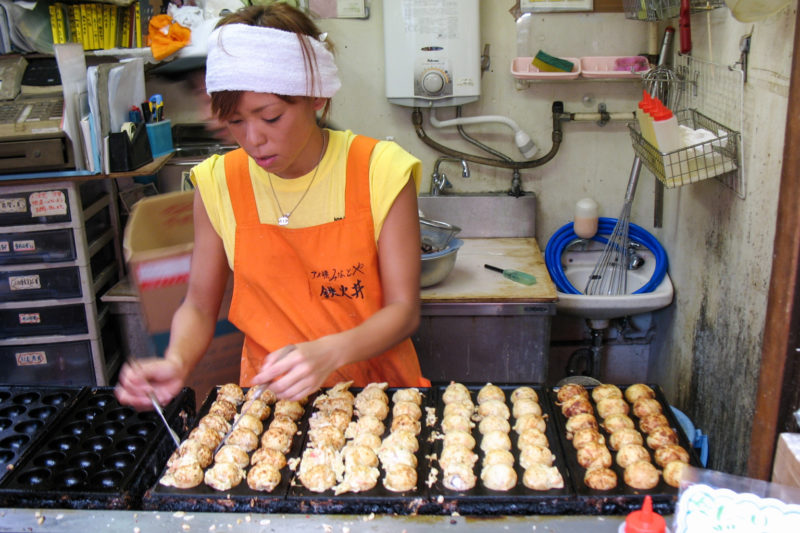
Takoyaki on the hotplate – one of my all-time favorite Japanese snacks!
Go to “family” restaurants & get the drink bar
Famiri resu are not just for families. They are often bustling at lunch and dinnertime with students, workers and couples because they provide some of the best value meals around. My favorite one is Italian style Saizeriya , where you can get pizza and pasta for less than 4 bucks a pop.
For less than $2, you can add the drink bar , which you’ll find at similar restaurants all over the country. This allows you unlimited soft drinks, juices, teas and coffees, including machine brews like lattes and cappuccinos.
Saizeriya also have the cheapest restaurant alcohol I’ve found anywhere – a glass of the house white or red is less than a dollar and 500ml decanters are around $3.60. Share a bottle of some of their ‘nicer’ wines with friends for just $10.
Tempted to visit this awe-inspiring country (even on a budget)? Check out our range of small group adventures in Japan.
(Hero image c/o Luke Attard. All other images c/o Jessica Korteman at notesofnomads.com)
Feeling inspired?

Jessica Korteman
Jessica Korteman is a travel writer based in Tokyo, Japan. Never without a pen and paper, you'll most often find her delving into the world of festivals and culture, and on the search for what makes a destination truly unique. Find her latest adventures on her blog, notesofnomads.com

You might also like
Why travellers are choosing the galapagos off-season, tips and hacks for train travel in europe, why train travel is the one experience you..., everything you need to know about a night..., mind your manners: dining etiquette around the world, 5 places to escape the crowds in italy..., is australia safe everything you need to know, 10 fun facts you might not know about..., explore these 7 tea rituals from around the..., 12 facts you probably don’t know about guatemala, the 7 best places to go on a....
- Philippines
- South Korea
- National Parks
- Travel Stories
- How Much Does It Actually Cost to Travel the World?
- What’s In My Backpack: The Ultimate Long-Term Travel Packing List
- My Favorite Non-Fiction Travel Books
- All Budget Travel Resources
- Writing Portfolio
15 Tips For Visiting Japan on A Budget (How to Travel Cheap in Japan!)
This post may contain affiliate links. This just means I may receive a small commission at no extra cost to you for helping them promote their product or service. I don’t endorse any services I don’t personally use or recommend.
Japan is widely known as the most expensive destination in Asia. I’m not going to contest that fact, but I am going to show you how to save LOTS of money on your next trip. Because Japan is one of those places that everyone wants to visit. A bucketlist destination if you will. While it wasn’t cheap, it was also not nearly as expensive as we had originally thought. And with these tips for visiting Japan on a budget, it can even be a rather affordable destination open to exploration by all kinds of travelers.
This list isn’t going to include any Workaway or long-term travel tips for those staying months in the country. Instead, it’s going to focus on actionable easy budget-saving tips that people on a short trip can use to save bigtime in Japan.
15 Tips For Visiting Japan On a Budget
Transportation is by far the most expensive cost for travelers in Japan. We’re gonna start with ways that you can save while hopping from destination to destination in the country.
1. The big question: Japan Rail Pass or no Japan Rail Pass?
I actually wrote an entire post detailing my decision NOT to buy the Japan Rail Pass for $370 per person. The low-down is that we saved about $100 each by purchasing bullet train tickets on our own. We didn’t have to do an immense amount of research either. We just turned up and bought tickets.

Check out my full post to see everywhere we went so you can compare your itinerary and make sure that buying the Japan Rail Pass isn’t right for you.
2. Get Unreserved Train Seats.
When you’re purchasing your Shinkansen (Bullet Train) tickets be sure to specify that you want unreserved seats. This means you’ll be sitting somewhere in cars 1-6 and left to choose your own spot. These are much cheaper. If you’re traveling as a duo you’ll most likely still be able to find seats next to one another.
3. Choose buses.
Buses are cheaper than trains & astronomically cheaper than bullet trains. If time isn’t a constraint for you (or if you can plan for these travel days) choose at least a few buses to save hundreds of dollars.
4. USE the Metro!
I probably don’t need to tell you that Japan has impressively clean, well-connected metro and train lines in each major city so you’ll never need to use a taxi. You can reach every single destination by metro, bus, or walking. I promise. In slightly smaller cities biking is a great way to get around and is very popular among Japanese people.
Keep in mind that most metro stations (and all buses) require cash to purchase tickets.
5. Skip the SIM.
Everyone told us you need a SIM card to travel in Japan. But honestly, we found Japan super easy to travel without one. There’s free wifi everywhere (buses, trains, some towns) and maps.me has accurate metro info for offline use. All kiosks for restaurants and metro use had English language options and for the few menus that didn’t— use can download Google translate offline.
6. Book your accommodation ahead of time.

Budget-friendly places fill up first. Unfortunately, Japan is one of those countries where planning ahead is going to save you lots of money. Our guesthouses and hostels were all booked on Booking.com and Hostelworld.com for anywhere from $7.50-$23 per person. Hakone and the areas around Mt Fuji are the most expensive regions while Osaka had a $15 private room (not a great one but hey, what can you expect).
You’ll probably need to book at least a month ahead for the high season.
7. Where you stay in Tokyo matters.
Tokyo is huge. Sprawling. But luckily there are lots of interconnected metros including one circular JR line that rings the best part of the city. We stayed in Nippori. This is in the far northeastern part of the city. Most of the places we wanted to see were located in the West and Southwest. This meant lots of metro trips, most 40 minutes or more.
If you plan to stay less than 4-5 days in Tokyo, instead of simply choosing the cheapest place to stay, look for a conveniently located neighborhood. Otherwise, you’ll spend a lot of time and money on the metro.
Consider the 24-hour Tokyo Pass (cost: 800 yen) on days you’ll do LOTS of sightseeing in various neighborhoods. You can purchase it at all the major metro stations.
8. Don’t visit ANYWHERE on a weekend.
Obviously, you have to do something on a weekend. Make sure it’s Tokyo, Osaka, or another major city. Tourist cities like Hiroshima, Kyoto, Magome, Hakone, and more are absolutely flooded with local tourists. I mean A LOT of tourists. It’s kind of insane. You’ll have to wait in incredible lines. Plan accordingly.
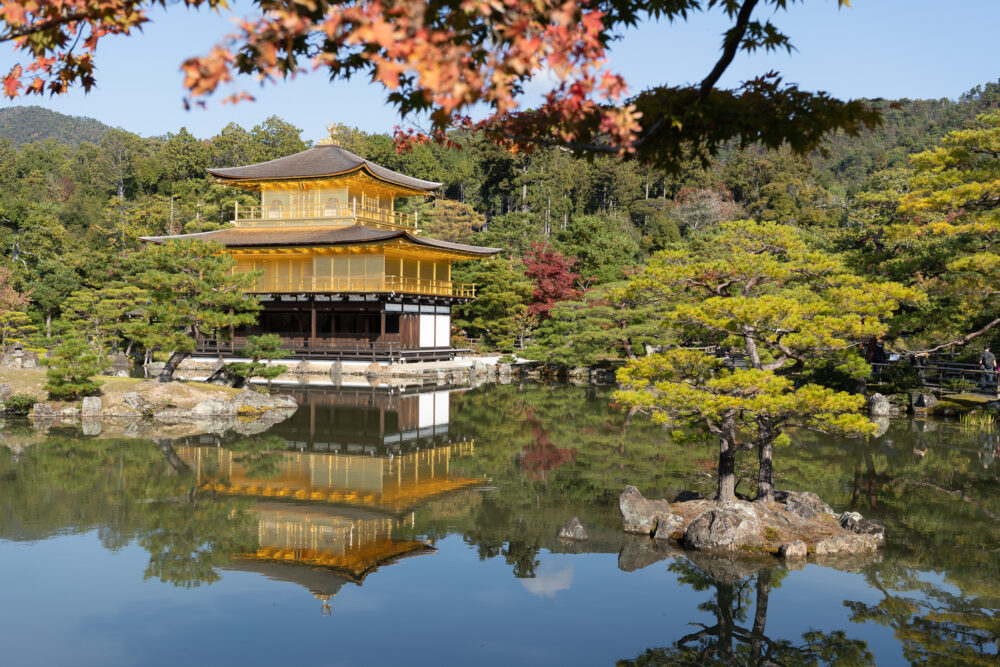
9. Kyoto is all about picking and choosing.
To keep Kyoto budget-friendly you can’t see everything. Many Buddhist temples in the city charge an $8-$15 entrance fee. This is probably to combat overtourism in an area that sees an incredible amount of visitors. We found that the free shrines were often the best because they saw fewer people and it wasn’t just massive crowds jostling for a photo op. Shoren-in Temple even has a tea ceremony that’s authentic for half the price of typical touristy tea ceremonies. I wrote about how to attend it here.
I recommend making a list of a few attractions and sticking to those rather than trying to see everything. These are our favorite things in Kyoto.
- Bike to the Bamboo forest just out of town early in the morning.
- Hike to the top of Fushimi Inari Taisha, not just a quick photo op visit.

If you’re looking to splurge on food in Kyoto, and it’s got some excellent options, definitely pay Teppan Tavern and La Bac a Sable a visit. Teppan Tavern serves Wagyu A5, traditional Kyoto bites, and homemade Umeshu (plum wine) that’s better than anywhere else for dinner. Seriously, this is the highlight of Japanese hospitality and it won’t break the bank. We spent $40 on a full meal with a few drinks. The French bakery is the perfect lunch pick-me-up.
10. 7/11, Family Mart, and Lawsons.
These are convenience stores scattered all over Japan. They have the cheapest beer and chu-hi, the cheapest coffee, and a wide array of Japanese snacks and desserts. But the best part is the bento boxes and hot food. You might be put off by the sushi, pizza or curry stuffed bao, habanero chicken strips, and tonkatsu meals but they are actually excellent and good quality! It’s a very popular stop for commuting Japanese residents. Keep in mind that hot food is usually restocked just before popular meal times.

In my professional opinion, the best food goes to Family Mart— but the best coffee goes to Lawsons.
Most restaurants don’t open until 10-11 AM and few hostels offer breakfast which leaves you out of luck. But these stores are a great cheap option for breakfast. Or late night meal. Or lunch.
11. Another cheap meal option? Conveyor belt sushi.
These places are the best. And they happen to be the most budget-friendly restaurants for great traditional Japanese sushi. You can typically get 10 plates between $8-15 depending on the items you select. This is a great way to familiarize yourself with sushi menus and sample new things too without having to commit to a whole set.

12. Share meals!
Unlike South Korea , a country we visited just before Japan, it’s very easy to order one dish and share. In Korea, you often pay by the person for popular meals like Korean BBQ. A major pain in the wallet for budget travelers looking to sample a lot of different items. Japan, fortunately, does not follow this rule and it’s quite easy to share several small plates for cheap.
13. Buy food for your Magome excursion.
I wrote an entire post detailing everything you need to know about hiking from Magome to Tsumago. I highly recommend this trip but since all restaurants close by 5 PM and I found most to be overpriced in the area— be sure to buy your own food from a Family Mart before you head to the mountains. Don’t forget trail snacks!
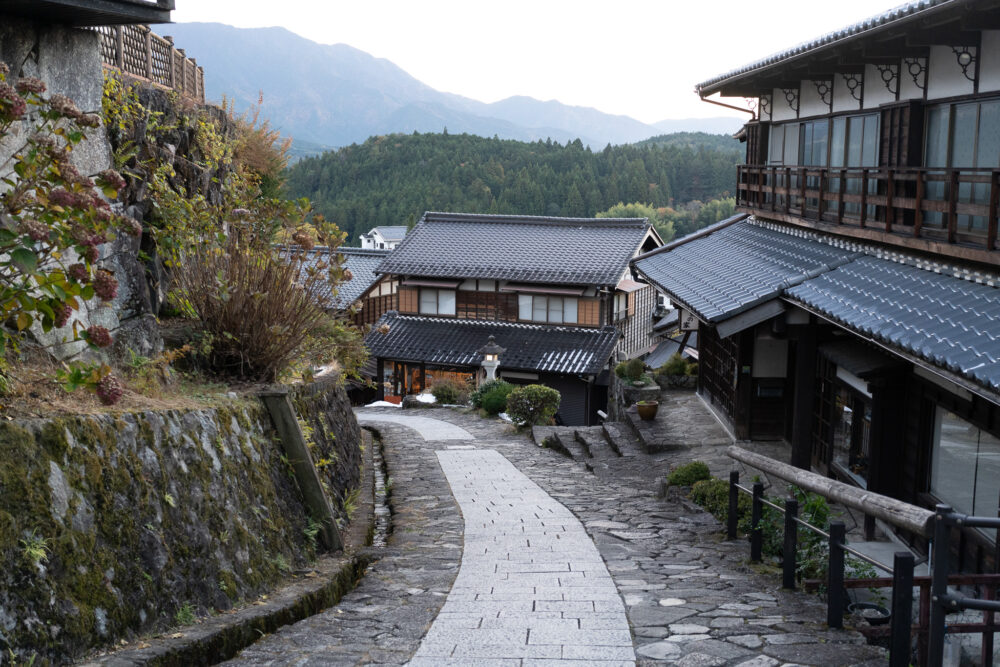
14. Beer is the most expensive alcohol in Japan.
Skip the beer and instead opt for Japanese Whisky highballs, Plum Wine, Shochu, and sake for cheaper drinking options.
15. Choose Omoide Yokocho over Golden Gai for a night out.
If you are looking for Tokyo drinking hot spots and nightlife, Omoide Yokocho is cheaper and more authentic than the late-night Golden Gai district. In Golden Gai, the drinks aren’t as strong and you’ll often have to pay a cover to even sit at the bar. It was still worth wandering through the alleys of each but I much preferred Omoide for dinner and a night of drinking.

How much did we spend in Japan on a Budget?
Let’s look at a quick budget breakdown of what we spent while visiting the country. Keep in mind, we only took trains and bullet trains because we had a short amount of time. We also didn’t know many of the above tips beforehand and would have booked our Magome accommodation much further in advance. So basically, I think you could save hundreds by following our tips above.
How much we spent in total for 19 days for two people: $2,687.55
How much we spent per day per person: $70.72 per day per person!!!
I hope this information helps you feel more confident to visit Japan on a budget and save lots of money while you do so! This was our most expensive trip BY FAR and with these tips, we could have easily cut costs by hundreds of dollars. Let me know in the comments if you think you have any Japan budget travel tips to add to my list.
Save This Post For Later!
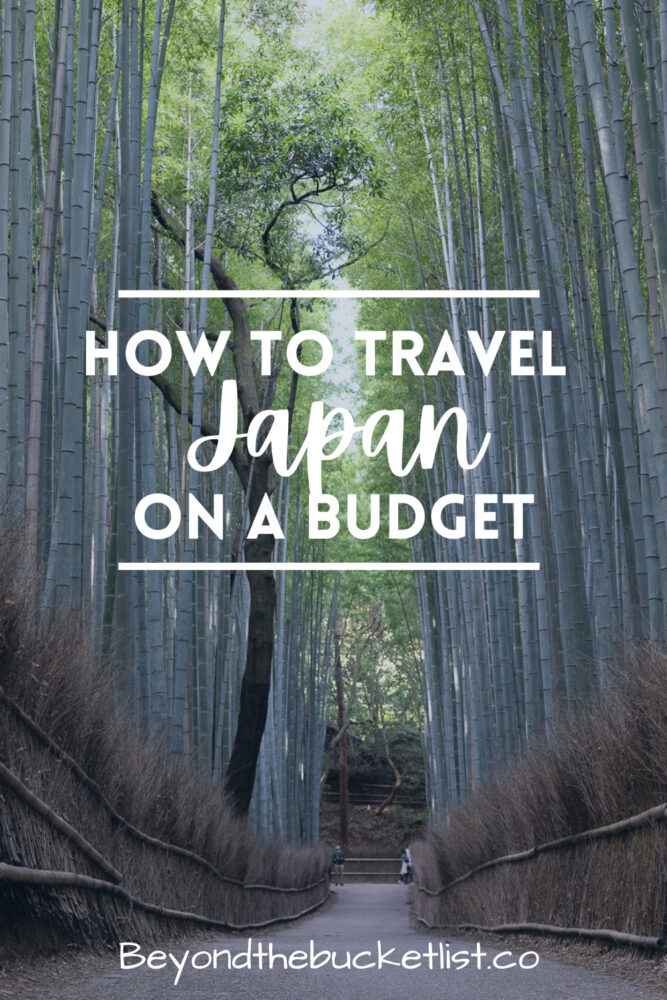
Further Reading...
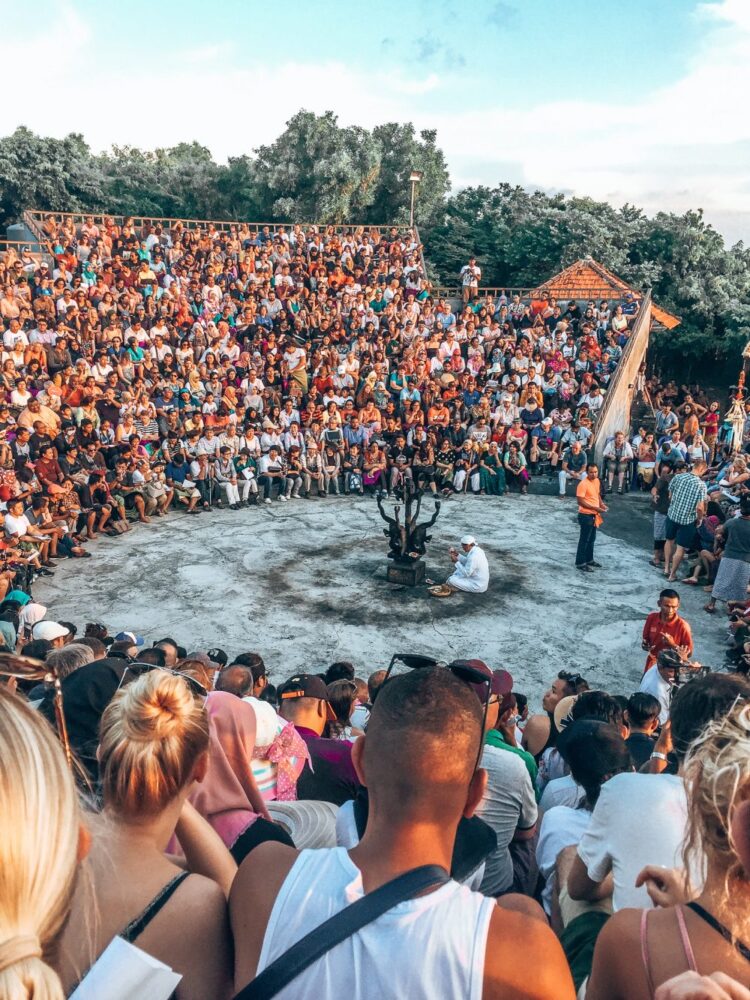
Over-Tourism: How it’s Affecting Our Planet

How to Make Your First-Time Visit to Kyoto Better (8 Easy Tips)

What’s In My Backpack: The Ultimate Long-Term Travel Packing List
You suggested to hike to the top of Fushimi Inari Taisha. While I agree hiking up is really cool, I was underwhelmed because there really aren’t any great views so doing the entire top loop felt a waste. I did it at night which was totally cool, but eerie. You could hear but not see the monkeys in the trees.
Leave a Reply Cancel Reply
Save my name, email, and website in this browser for the next time I comment.
Notify me of new posts by email.
Sign up to our newsletter!
This site uses Akismet to reduce spam. Learn how your comment data is processed .
10 Days in South Korea: A Mini Travel Guide (2023)
How to experience a traditional japanese tea ceremony in kyoto, beyond_the_bucketlist.


2 Week Japan Itinerary | With Budget and Top Tips
by Bex Band | Last modified on Mar 3, 2024 | Japan

I put together this comprehensive itinerary for 2 weeks in Japan based on my first time visiting the country (with a few tweaks based on my subsequent visits). I’ve shared what were the highlights and what you should leave out….specifically for someone visiting Japan for the first time. To make the planning as easy as possible for you, I’ve also included a budget breakdown and top tips for travelling in the country.
From cat cafes to cherry blossom picnics and robot shows to bowing deer….Japan is like nowhere else on the planet. It’s one of my favourite countries!
2 weeks isn’t a lot of time to explore Japan. Thankfully though, the efficient transport system makes it possible to fit in a lot during that time. Most visitors will have a budget to stick to as it is a pricey destination. So you’ll want to do a fair bit of planning to ensure make the most of your perfect Japan itinerary.
A few notes on my budget and travelling style
I’d describe my itinerary as energetic and diverse. I wanted to fit in as much of Japan as possible (while ensuring it wasn’t so fast you couldn’t get a feel for the places) with a good mix of city and towns, old and new.
I was travelling on a low-medium budget….with a splash of luxury. It’s really worth stretching the budget for a couple of top-end nights in Japan! If you are 2 people (as I was – travelling with my husband) often the price of a double in a simple hotel works out the same as 2 people in a hostel room.
A lot of the Ryokans (traditional Japanese Inns) also include meals so while they might initially seem expensive, once you’ve factored in the food, and the experience, they are actually quite reasonable.
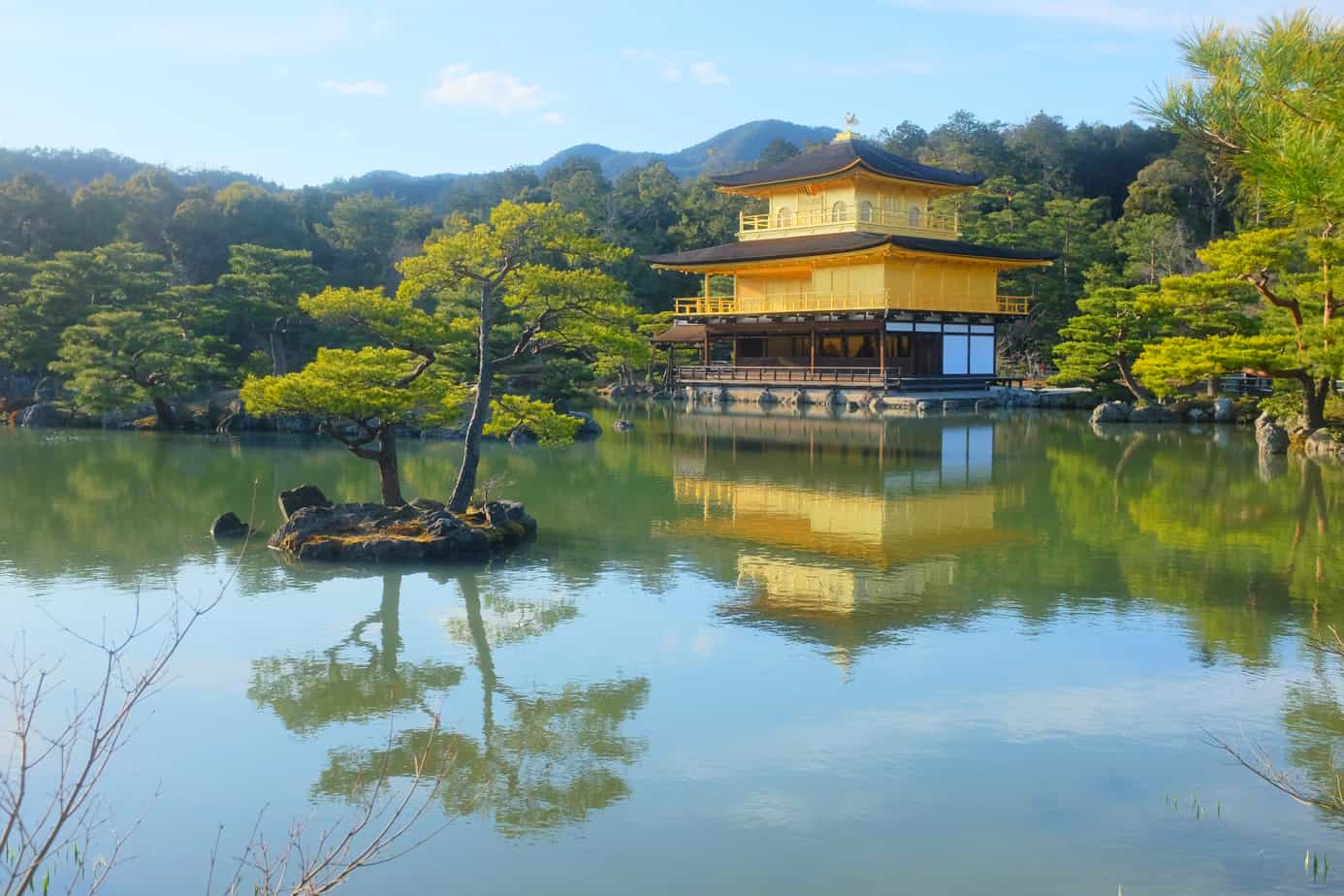
Before we start….
If you are new to this blog, I’m Bex Band – a full-time UK adventurer and founder of the women’s adventure community, Love Her Wild . I’m on a mission to make the travelling and going on adventures as easy as possible. You can read more about me here .
If you have any questions, please do use the comments box below. And for ongoing tips and inspiration, make sure you follow me on Facebook and Instagram.
2 week Japan itinerary
This is the exact itinerary of my 2 week Japan visit (note the changes I’d make below). Prices below from my Japan 2 week itinerary are all per night for 2 people sharing a double room (updated 2022). I made all the bookings online in advance.
- Tokyo – 2 nights
- Osaka – 2 nights
- Koya San – 1 night
- Miyajima – 1 night
- Kyoto – 3 nights
- Hakuba – 2 nights
- Yudanaka – 1 night
2 x nights TOKYO
What did we do: I used these 2 days to see the highlights of the city going to Shibuya park (and the crossing), taking a boat ride, seeing the markets of Asakusa and catching a show at the Robot Restaurant.
Where did we stay: Kiba Capsules Hotel – $45 A capsules hotel offering couples and single capsules. Such a great Japanese experience!!! Only worth staying here if you are a couple and looking to share as there are nicer capsule hotels available for singles. If you are looking for the best single room capsule you’ll want to check out Nine Hours .
If staying in a capsule hotel isn’t your thing I’d recommend the Knot Hotel Shinjuku ($75) which is in a great location and is a really nice hotel at a good price.
2 x nights OSAKA
What did we do: The first day I saw a sumo wrestling match and spent the evening in Dotonbori, a packed district full of restaurants, shops and lights. The second day I spent at Universal Studios.
Where did we stay: Drop Inn Osaka – $60 Basic private Ryokan rooms at an affordable price. It is a very modern hotel with a great location (walking distance from the station, which is handy) and helpful staff. I would definitely stay here again.
1 x night KOYA SAN
What did we do: This was my favourite place of the trip, don’t hesitate to visit. The journey initially seems complicated but was very easy and didn’t take long.
While there we saw the Okunoin Cemetery both in the day and at night (completely different experiences) and spent the rest of the time enjoying our temple lodgings with its traditional monk cuisine.
Where did we stay: Shukubo Fudoin – $240 (dinner & breakfast included) Incredible Temple lodgings with beautiful grounds, delicious vegan cuisine, a modern onsen and friendly monks. I loved staying here, it was a highlight of the trip. You can even join the monks in the morning to observe the morning prayer.
All the temples in the area are expensive but it is well worth the money. They also include an impressive breakfast and dinner experience.
1 x night MIYAJIMA
What did we do: We arrived on the island by early afternoon to get the cable car to the top of Mt Misen before watching the sunset behind the Torii gate.
Where did we stay: Coral Hotel – $65 (breakfast included) A simple western hotel right by the Miyajima ferry port, offering good views of the island. Basic but comfortable and cheap. We saved a lot of money by not staying on the island. The ferry is easy to catch and runs until quite late so I don’t think it’s worth spending the extra to be on Miyajima Island unless you really want to.
Another option would be to use Hiroshima as your base as you need to pass through here to get to Miyajima Island. You are then conveniently located for visiting the Atomic Bomb museum with more restaurant and nightlife options for the evenings. I’d suggest staying at Hatchobori Hiroshima ($120 breakfast included) for its convenient location.
3 x nights KYOTO
What did we do: On the way to Kyoto, we broke up the journey and stopped at Hiroshima to see the A-Bomb memorial and museum (taking about 3 hours total….it was enough time as it’s not an easy museum to take in).
We also stopped at Himeji to visit the castle (we had 3 hours in the castle). For both, you can use railway lockers at the train stations to store suitcases.
For our 3 nights in Kyoto, we hired an electric bike (about $15 a day) which provided a great way to see the never-ending temples and the palaces.
Seeing a Geisha dance was particularly memorable (only available during cherry blossom season. Tickets are hard to come by, but we used this website and asked them to organise the tickets for us). On our final morning in Kyoto, we visited NARA to see the giant Buddha and the bowing dear.
Where did we stay: Kyoto Tower Hotel – $110 A great value hotel for Kyoto which is an expensive city. The location near the station makes it a perfect base for exploring.
On a later trip to Kyoto, we stayed at Hotel tou nishinotoin kyoto ($70), a relatively new hotel that propped up in 2023. Its beautiful, comfy rooms and a beautiful hot bath.
If you want somewhere more budget then Piece Hostel ($50) is the place for you! There are also some really good Airbnb options in the area, which have the advantage of a kitchen, so you can save a lot of money on food as well.
2 x nights HAKUBA
What did we do: We arrived late in Hakuba, so we spent the evening enjoying the mountainous views and having numerous hot spring baths. The following day, I went to see the Olympic jump before having my first ever skiing lesson.
Where did we stay: Hakuba Onsen Ryokan Shiroumaso – $190 (breakfast and dinner) Just amazing! A really fantastic family-run Ryokan – don’t hesitate to stay here. This felt like traditional Japan with a lot of luxury. The food here was also great. I loved my stay here; definitely worth the price for a bit of luxury.
1 x night YUDANAKA
What did we do: We spent a night in Yudanaka, which is the closest town to see the famous Snow Monkeys. Check my review below, though, to hear my thoughts on the snow monkeys….you’ll probably want to skip this!
Where did we stay: Yudanaka Seifuso – $110 A very traditional family-run ryokan. The family don’t speak a word of English but are sweet and welcoming. The rooms were just ok. Being around the family was what made this stay nice.
What did we do: Returning to Tokyo, we spent the first day in Uneo Park, experiencing the cherry blossom in full bloom and all the festivities. The final day was spent at DisneySea – a lot of fun!
Where did we stay: Tokyo Hilton Odaiba – $220 Top, luxurious hotel – we like to finish our holidays in style. A comfortable location for the bay, close to Disney, offering a free shuttle. Well worth splashing out on. With a rooftop infinity pool (AMAZING), phenomenal service and the biggest breakfast layout I’ve seen.
What would I change?
We managed to fit in a lot more than I thought was possible because trains are just so quick and easy. They are also very comfortable and clean so I didn’t feel tired from the long journeys.
The train station lockers are great for fitting in quick stops to see sights along the way without needing to stay overnight.
This 2 week Japan itinerary was busy but I felt like it was a good pace. The hot onsen most evenings meant that I felt like I got lots of relaxation time even though most days we were on the move and seeing lots.
Koya San, although a bit tricky to get to, really is a definite. Miyajima makes a great day out, but I wouldn’t spend any more than a day there.
Hakuba also turned out to be really fun, and I loved skiing, seeing the mountains and also experiencing a different side to Japan. If you weren’t keen on skiing, though, I would skip Hakuba in favour of Kanazawa.
The biggest disappointment was Yudanaka . It was expensive to get to (it wasn’t covered by the JR Pass) and took a long time. The monkeys themselves are in a grotty area, and there really is nothing else to do in the area. They throw rice into the pools to make the monkeys go in them as it wasn’t that cold when I was there. Don’t go – it’s not worth it!

If I dropped Yudanaka and Hakuba from the 2 week Japan Itinerary, I would have spent the extra days in Kanazawa visiting the famous garden and art museum with an overnight visit to Shirakawa-go and Gokayama on the way back to Toyko (see my suggested alternative Japan 2 week itinerary below).
Some people suggest spending more time in Tokyo and Kyoto. For me, 3 days exploring both was enough time. Although there was more I wanted to see in Kyoto, it is also very touristy, so I was happy to have a change after a few days.
Alternative Japan 2-week itinerary
With all that in mind – if you weren’t desperate to see the snow monkeys or try your hand skiing, then this could be an alternative itinerary:
- Koy San – 1 night
- Miyajima – 1 night (staying in Hiroshima and doing Miyajima as a day trip)
- Kyoto – 3 nights (day trip to Nara)
- Kanazawa – 2 nights
- Shirakawa-go and Gokayama – 1 night
Travel insurance for Japan
On my most recent journey, my luggage was misplaced during the connecting flight to Tokyo, resulting in me spending the first five days of my trip without my checked bag. Fortunately, the airport located my bag and sent it to my hotel. This experience underscores the crucial importance of travel insurance. It’s advisable to purchase it as soon as you book your flights.
World Nomads Travel Insurance
It’s important that you have travel insurance for your travels. World Nomads are a travel insurer that I’ve used multiple times before for my adventures. World Nomads covers more than 150 adventure sports and activities and worldwide coverage.
I’m part of World Nomads’ affiliate program (which means I get a small recommenders fee if you choose to use them, at no extra cost to you). Get a quote here .
When is the best time to visit Japan?
The most obvious answer is Spring to see the cherry blossom. Although it was busy, it was mostly with Japanese tourists who were quiet and considerate, so the crowds didn’t feel too much.
It is well worth going for the blossom as it makes the whole country look so pretty and there is a real sense of excitement and celebration. It will also give you an opportunity to see the Geisha Spring Dance. Weatherwise it was sunny and pleasant but still a bit cold. Most days I was wearing my coat. It didn’t rain once while we were there.
Japan has very defined seasons. Summer can get very hot and uncomfortable and winter can be bitterly cold, even snowing. For this reason, Autumn is a more comfortable time to travel if you don’t want to go in spring. The Autumn colours across the country are also very pretty!
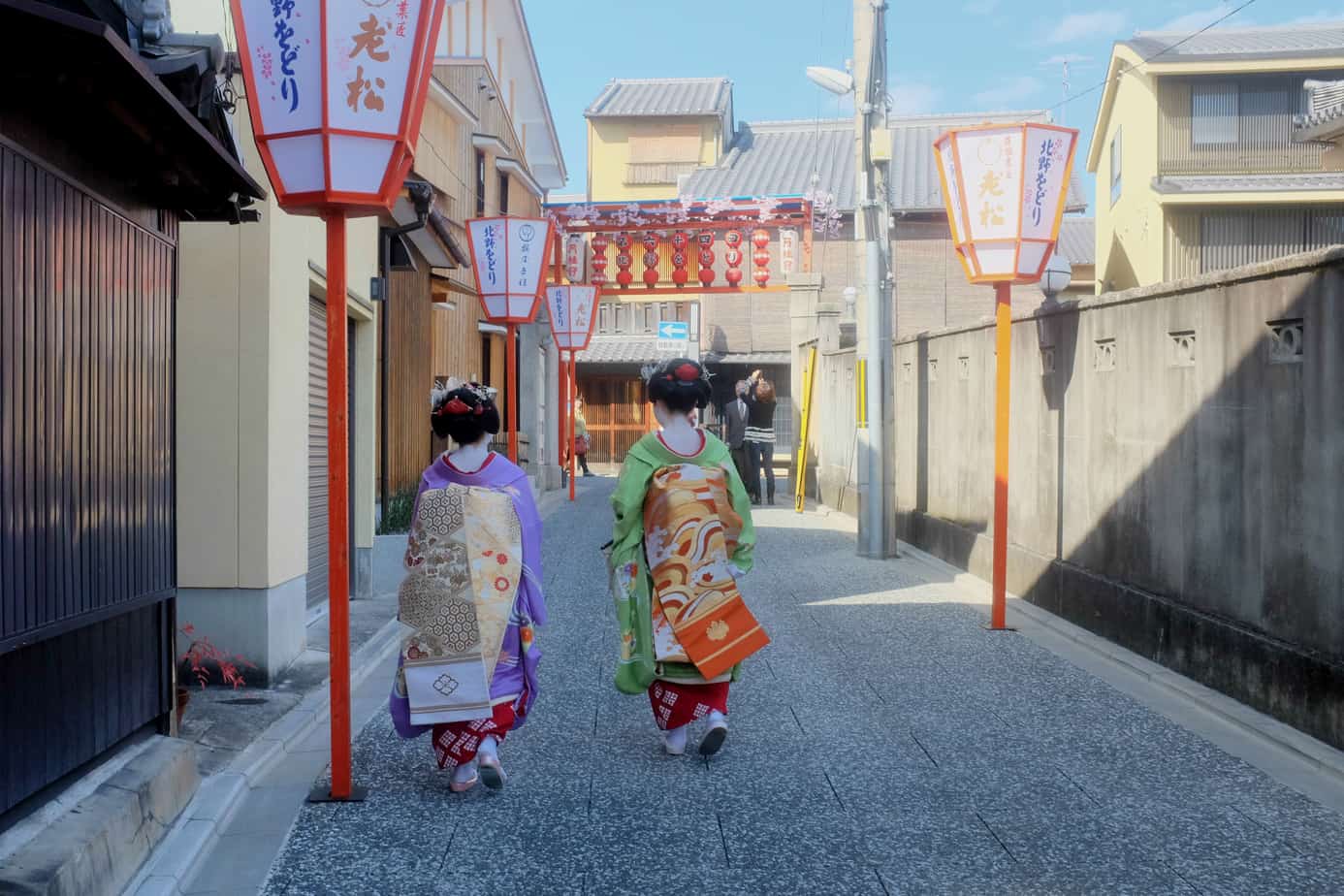
Japan Rail Pass – a must!!
The trains in Japan are very expensive. But if you are a visiting tourist, you are eligible for a Japan Rail Pass. Getting this card is a no-brainer. It will give you unlimited travel across most of Japan’s rail network, allowing you free access to visit all the major places – Tokyo, Kyoto, Hiroshima, Kanazawa, Osaka, etc, etc.
The cost for the pass is:
7 Days – $279 14 Days – $445 21 Days – $570
To get a railcard, just follow this link and purchase the length of time that you want. Do this in advance of your holiday. When you arrive in Japan, head to the JRP help desk (you’ll find them in airports and train stations) and swap your receipt for your bass booklet. There can sometimes be a bit of a queue so factor this in.
I’d suggest reading this helpful guide to using the pass, which says where you can exchange your pass, where it is valid and how to reserve your seats. It is helpful to reserve seats if you can (it’s easy to do) as some of the journeys we took were busy, and we would have been standing otherwise.
How much does 2 weeks in Japan cost?
The budget below is based per person for the entire 2 week Japan Itinerary laid out above.
The accommodation, which was double rooms shared between 2, has been split in half.
Our accommodation was a mix of budget stays with a few nights of luxury. We didn’t hold back on tickets or events…they’re just too good to miss. Food-wise I was more on the lower end budget (especially as I am a vegetarian) – eating from bakeries, supermarkets, and street food to save costs – with a few exceptions on expensive set menu meals.
Japan being expensive is a bit of a misconception!
I was really surprised by how cheap the holiday worked out to be. The Japan Rail Pass meant that we were able to travel a huge amount at a set price (we definitely got our money’s worth!) and most of the attractions we visited (like temples and museums) only cost a couple of pounds to go in or were free.
It’s not what you would call a cheap destination but it also wasn’t crazy expensive. I found it cheaper than London prices.
Breakdown of budget for 2 weeks in Japan:
Flights (from London to Tokyo return, via Warsaw on using Lot airlines)- $830 Accommodation – $870 Transport (14-day Japan Rail pass) – $360 Food (Daily cost averaged $30, which in most cases was street food lunch/snacks and a low-average priced dinner) – $420 Sumo Wrestling tickets – $80 Geisha Dance Tickets – $60 Universal Studio Tickets (with express 7 pass) – $80 DisneySea Ticket – $60 Skiing (equipment hire, lift pass and a private 2-hour lesson) – $150 Daily costs (averaging $20 a day for entry to temples, drinks, and small souvenirs) – $280
TOTAL – $3190 (roughly £2,553)
Top tips for visiting Japan
…….Buying the tickets in advance is essential as everything sells out – but problematic because the sites are all in Japanese. We used Buy Sumo Tickets who were brilliant. Not only did they get us sumo tickets but they also brought our Geisha show and Universal Studio tickets for just a small fee.
………I struggled with the food, especially as I am a vegetarian and wish I had brought some snack bars with me to save me the hassle of finding something for the journeys. The supermarkets are bizarre and I often had no idea what I was buying!
……….vegetarian? It’s not an easy country to be veggie in. Check out my Guide to being a vegetarian in Japan for some top tips.
…….If you eat fish, bento boxes are great. These are packed lunches that you can buy for journeys or picnics. You can get them from stall holders and shops in rail stations and shopping malls.
……Tipping is not the done thing in Japan and is even considered rude.
…..Ryokan’s are traditional Japanese inns. You should try to stay in at least one for the experience. They are often cheaper than in Western hotels. I can also recommend checking out Airbnb, especially for longer stays, if you are trying to save money.
……If you stay in a ryokan, you will need to take your shoes off before entering either the building or the room. There will be slippers available for you to use and somewhere to store your shoes.
……I was surprised that barely anyone spoke English. People are incredibly kind and helpful, though, so I never got stuck. If there is something you need to communicate (like eating preferences), get someone with good English to write it down in Japanese on a piece of paper that you can show people.
……Unless you are happy being naked in front of other people, you will need to book hotels with private onsen which are considerably more expensive. The Japanese are incredibly polite and discrete so public bathing isn’t daunting. Learn the etiquette before you go through it.
…….There are lots of new customs to get used to in Japan but don’t worry about offending people. The Japanese are very forgiving and understanding!
……..I’d recommend reading these books before heading to Japan:
- Lonely Planet Japan – offers the most comprehensive guide to travelling around Japan
- Memoirs of a Geisha – the streets of Kyoto come alive in this gripping story told from the perspective of a Geisha living in Japan
- Shogun – another gripping international bestseller set in Japan!
- Death Note – anime is everywhere in Japan and is read by people of all ages. Don’t knock it till you’ve tried it! The Death Note series is a really good anime book to start with.
You can stay updated with my adventures and advice on Facebook and Instagram . Or you can subscribe to my YouTube channel . I give all my advice for free on my website. If you want to say thanks, you can buy me a coffee !
Good luck with your Japan travels……please use the comments below to ask questions or to let me know how you get on 🙂

- Follow Follow
24 Comments
Great post!
Thanks Explore 🙂
Really useful post, thank you. Your travelling style is very much like ours, a mix of local and luxury.
Thank you Carole…I’m glad it was helpful! I think a mix of local and luxury makes for the perfect hol. Enjoy Japan!! 🙂
I really liked the info here thanks. I am thinking of visiting Japan next year alone but I’m a fit 72 and wondered if you, as an experienced traveller to Japan, could advise if would be okay with the travelling and also the hostel accommodation. I would appreciate any comments you may have thanks Tess
Thank you Tess. Absolutely….I can’t see any reason why you can’t travel Japan and use the hostel accommodation. Japan is very clean and comfortable no matter what budget level you use! Most of the travellers I met there were a little older. Good luck with your trip. Japan is a brilliant country! 🙂
Thanks Bex. I love traveling alone as I find I meet more people that way and get a better insight into the culture and people. When I go I’ll let you know how I get on thanks again
I think so too! Do let me know how you get on 🙂
Hello Bex, as I am planning a trip to Japan, I made a search and your site popped up. Not only did I find this post particularly useful, but I found your whole site very enjoyable. You have a very nice writing style, keep it up! Cheers Ged
Thank you so much Ged!! Your kind words made my day 🙂
Good blog thanks, very useful tips. Had a couple of gripes about grammar but hey I am the grammar police! Thanks for the insights. Not sure about if it’s worth buying a JR pass if you don’t want to run from one place to another, still weighing that up. Hoping to go to Japan in the fall.
I’m dyslexic so there’s not much I can do about that I’m afraid! It’s probably worth calculating the cost of individual journeys you may take and then comparing it to the railcard. Usually the railcard works out cheaper even if only for a couple of day trips.
Hey, thanks for this post! Maybe I missed it but I wasn’t sure what currency your budget was? Is it USD?
Budget is in USD 🙂
Very informative! Thanks!
Thank you Joanne. Really happy it was of help! 🙂
Hi. We’re planning a trip to Japan for my birthday. This is really helpful. Thank you. Quick question though… is the $2300 per person or for both of you already? Thanks in advance for your reply. ^^
Glad it is helpful! It was $2300 for each of us….so $4600 in total for 2 🙂
Great post! Thanks for sharing the knowledge and keep up the good work.
Thank you Brian!
I’ve been looking around at a bunch of different websites and they say around $4,000 per person, but you say about $2,300 per person. Would it be a better trip if a saved more than what you had?
It’s hard to say as traveling is always very personal. We did a mix of cheap places and then splashed out in some luxury places. So it would depend on your spending habits. I didn’t feel like I needed to spend any more money though.
I’m planning my first trip to Japan in November, and I think I will follow a similar itinerary to the one you propose (skipping the monkeys!) so I was delighted to find your very informative post 🙂 I have one question: did you go straight from Koy San to Miyajima, or did you stop in Osaka or Hiroshima in between? Many thanks!
We stopped in Hiroshima to see the museum then stayed at a hotel by the ferry port to Miyajima. You can get from Koya San to the island in a day but accomodation on Miyajima is very expensive so it’s cheaper to stay in Hiroshima.
Submit a Comment Cancel reply
Your email address will not be published. Required fields are marked *
Submit Comment
Related Posts
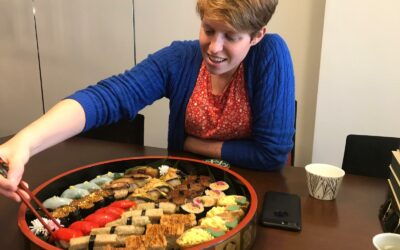
Vegan & vegetarian in Japan | Ultimate Guide (2024)
Being a vegan or vegetarian in Japan is definitely not easy at times. I knew that fish featured highly in Japanese cusine, but it amazed me just how...
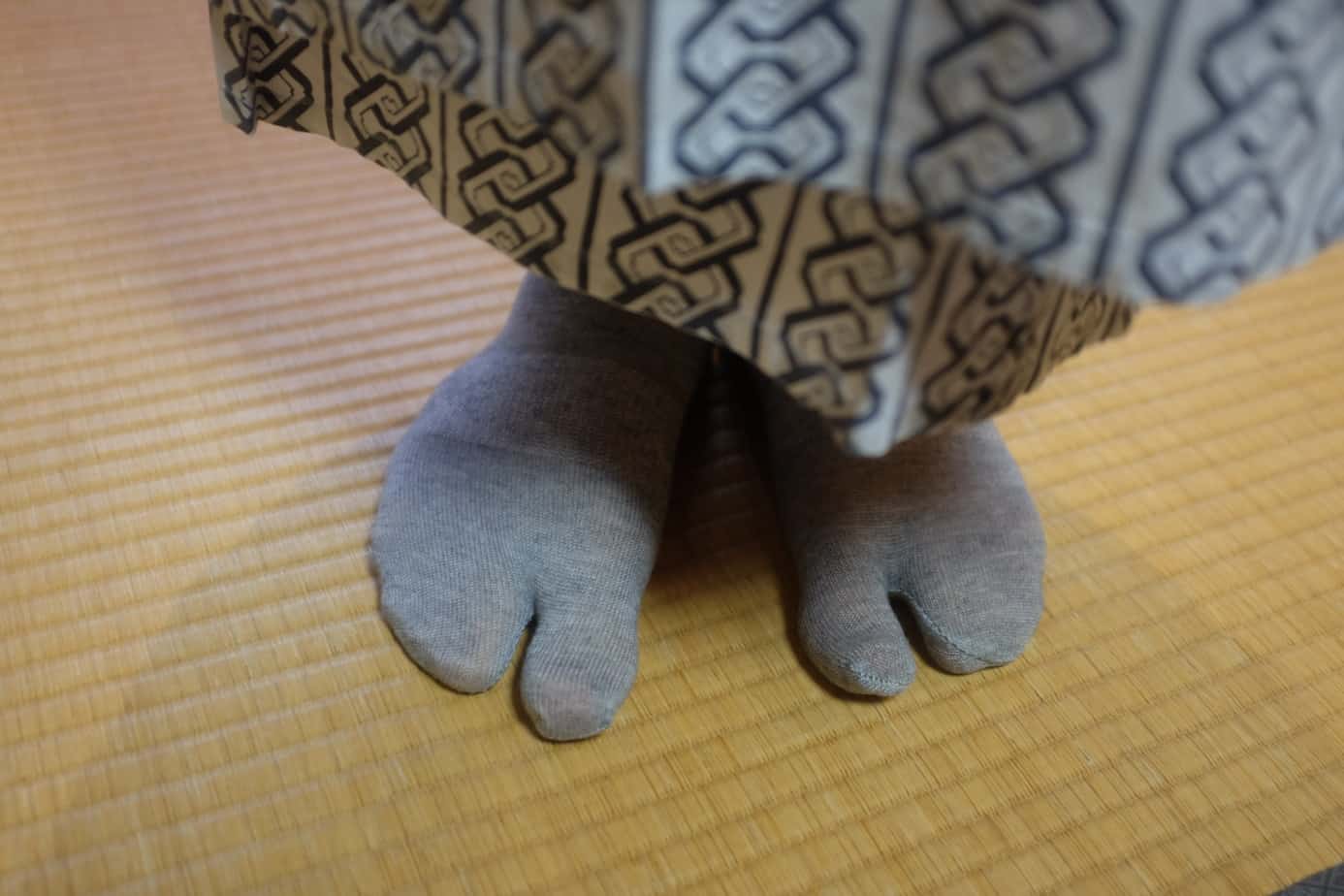
Japan: Hakuba, the Snow Monkeys and Tokyo
Catch up with the final travel Journal from our 2 weeks trip to Japan (for a full breakdown of our itinerary and budget, check out Japan itinerary 2...
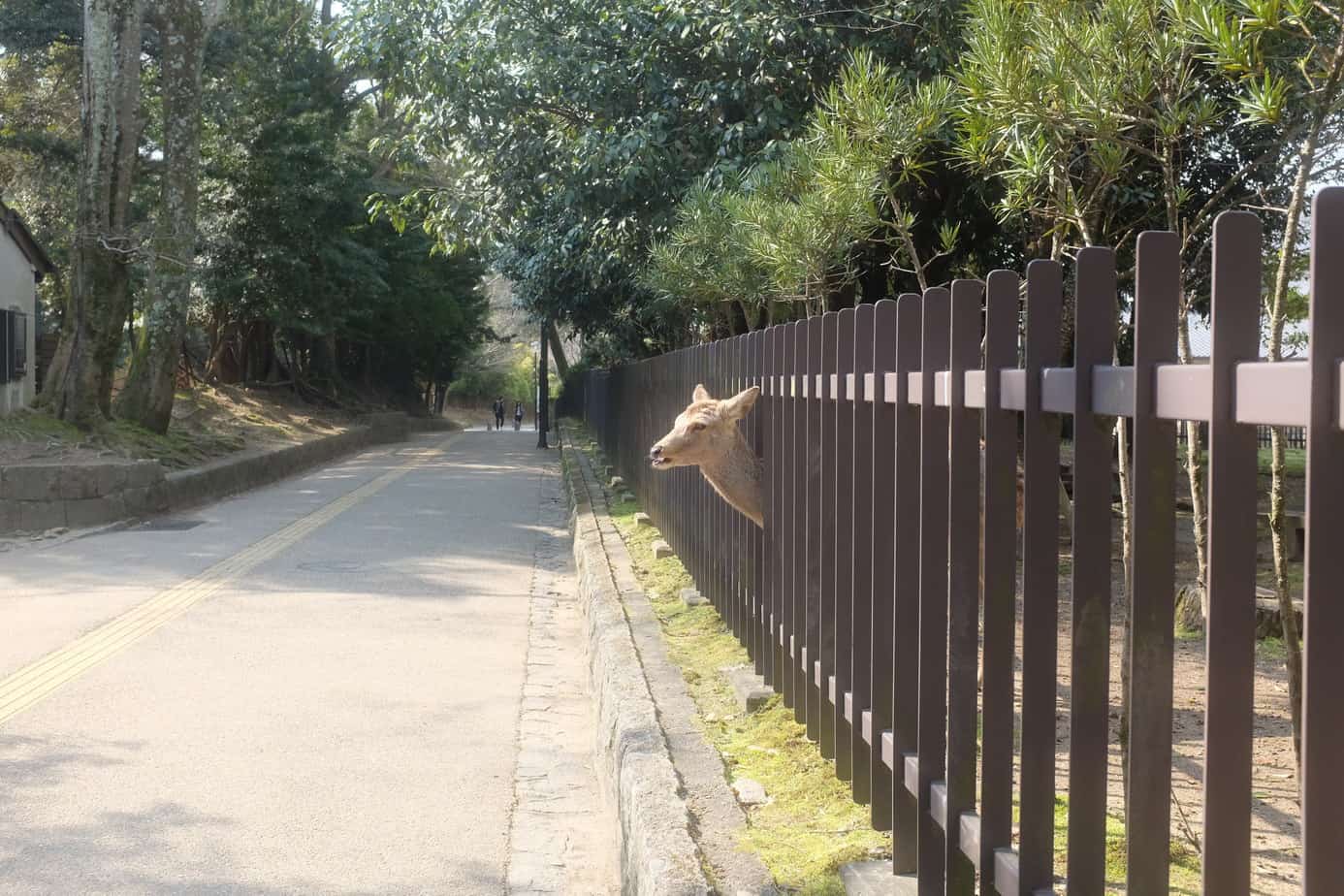
Japan: Miyajima, Hiroshima and Kyoto
This is my second journal from my 2-week visit to Japan. For a full breakdown of our itinerary and budget, check out Japan itinerary 2 weeks. We had...

Adventures, updates and tips to your inbox!
Join over 3,500+ others and subscribe to my newsletter., you have successfully subscribed.
By subscribing, you consent to the processing of your personal data in according with our privacy policy - link in the footer.

Budget for a trip to Japan
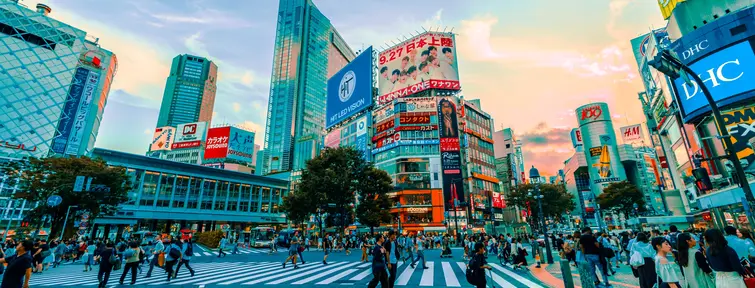
Shibuya, Japon
© Jezael Melgoza / Unsplash
What is the budget for a trip to Japan?
Japan has long been one of the expensive destinations, departing from the old continent. Geographical remoteness and the lack of competition in the airline industry had a lot to do with it. Today, Japan is more open to tourism than it was before, and traveling to Japan is becoming much more affordable, provided you modulate your choices according to your travel budget and priorities!
Let's see together what the budget for a trip to Japan can be.
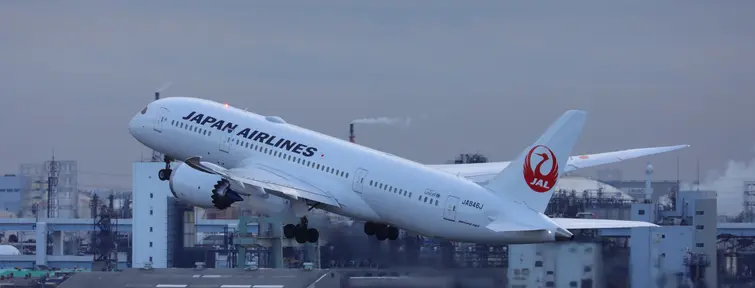
Photo by Tango Tsuttie on Unsplash
Budget for a plane ticket France - Japan
Increasingly attractive rates.
The price of a France - Japan flight varies greatly depending on whether you opt for a direct flight or a flight with a stopover. Before booking your plane ticket to Japan, some useful points of reference:
Price of a direct flight France - Japan: Allow 11 to 12 hours of direct flight, with one or two meals on board. The average price of a direct flight is 1000 EUR / pers. in the regular season.
Price of a flight with stopover France - Japan : Count from 14 to 18 hours of flight with transit and waiting time in the main airport of the airline. The average price of a flight with a stopover is around 800 EUR / pers. in the regular season.
- Price of a discount flight France - Japan: Expect flight times in the evening or very early in the morning, as well as a long waiting time in transit, of the order of 4 to 8 hours. On the other hand, the price of your plane ticket for Japan will be really attractive, around 600 EUR / pers. in the regular season.
- See our comparison of airlines
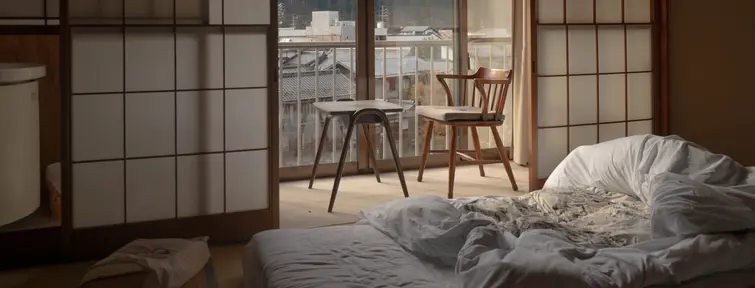
Photo de Lucas Calloch sur Unsplash
Budget for accommodation in Japan
For all tastes and all budgets.
The range of options for accommodation in Japan is important, and allows you to find the type of accommodation best suited to your budget:
- Renting a detached house
This is the formula offering the best value for money, especially if you are traveling as a family to Japan. Renting a house in Japan allows you to be independent and to live in the Japanese way during a trip.
- Japanese hotel
Standard class, business class, luxury hotels... the hotel offer is very important in Tokyo and Osaka, but falls drastically in the provinces. Looking for a hotel in Japan costs an average of ¥8,000 for a standard hotel room, ¥15,000-30,000 for superior hotels, and ¥60,000 and more for luxury addresses.
The traditional Japanese inns, with tatami, futon and onsen bath are one of the essentials of a trip to Japan. Count on average 20,000 - 30,000 ¥ / pers. with meals and breakfast included.
Home cooking and direct contact with the locals, the minshuku are the equivalent of our guest rooms. The average price per person is ¥6,500-8,500, for half board and home cooking.
- guest house
Japanese youth hostels offer different types of sleeping accommodation: dormitories with bunk beds, Japanese rooms with tatami, private rooms... For an average price of ¥3,500 per night, this is the preferred solution for young people and children. budgets!
- Capsule Hotel
For fans of exotic experiences, a night in a capsule hotel gives you a taste of the daily life of a Japanese salary-man. Spa, massage, gym, video games... Many additional services are also available on site. From ¥2,000/night.
Read also :
- Ryokan, quintessence of Japanese art
- The minshuku, closer to the Japanese
- Capsule hotels, a unique experience
- Find out more about our house rentals
Discover Japan Experience's Rental Houses offer in Japan
Rent a house in tokyo.
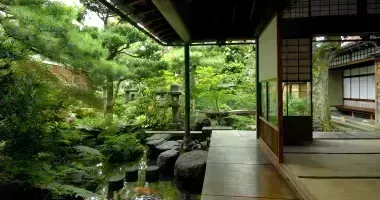
Experience an authentic stay in the city and rent a house in Tokyo. Our comfortable accommodations in Tokyo are all centrally located in the Ikebukuro district, close to Shinjuku and Tokyo Tower.
Rent a house in Kyoto
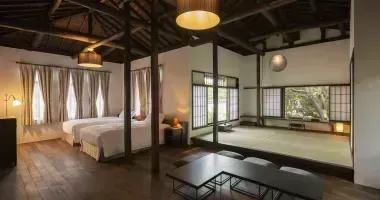
Rent a house in Kyoto and experience the city, by living like a local. We have many houses and apartments in Kyoto in great locations throughout the city.
Rent a house in Kanazawa
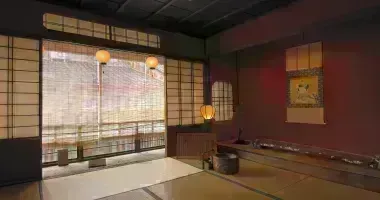
Discover the wonders of Ishikawa Prefecture and rent a house in Kanazawa. Our traditional and cozy accommodations in Kanazawa are located in different areas of the city, which are steeped in tradition.
Rent a house in Takayama
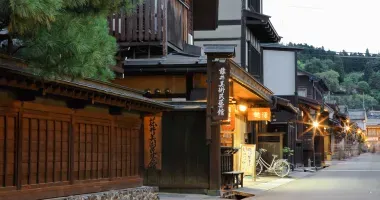
Our rental homes in Takayama offer an ideal home base in the Japanese Alps . These Takayama accommodations allow you to explore the city and Gifu Prefecture in peace.
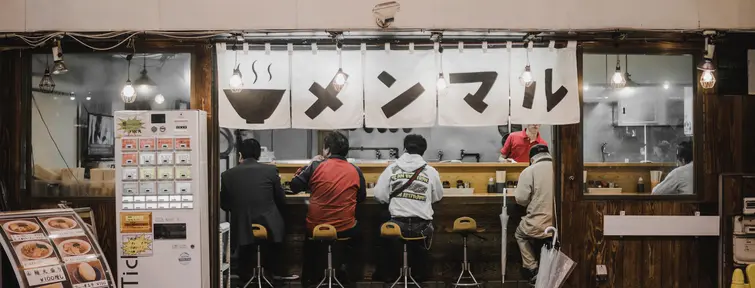
Photo de bantersnaps sur Unsplash
Catering budget in Japan
Eat well and inexpensively.
Contrary to popular belief, the price of a meal in Japan is often half that of a similar meal in a major European city. In fact, eating at low prices in Japan is a reality that allows you to adjust your budget as well as possible:
- Budget meals in Japan
Many fast food chains allow food for the equivalent of ¥300-500. The Sukiya, Yoshinoya and Matsuya chains offer you to taste Japanese curry, gyûdon (preparation made from rice and beef), katsudon (hot rice with a slice of breaded pork) with a miso soup! Another option is kaiten-zushi, plates of sushi served on a conveyor belt that start at ¥100.
- Budget for a standard meal
For heartier meals, restaurants of the teishoku (meal tray) type allow you to taste Japanese home cooking for a price between 500 and 1,000 ¥. These restaurants are easily identifiable by their storefronts displaying meal trays with resin food. Ootoya and Yayoi are two emblematic chains.
- Budget for a larger meal
A sort of Japanese-style brasserie, the izakaya are a great place to observe the Japanese in their daily lives. Ideal for tasting the variety of Japanese cuisine, but be careful, the quantities are small and the note quickly becomes salty. Count on average 3,000 - 5,000 ¥ / pers. Many izakayas now have English menus, like the iconic Izakaya Gompachi in Roppongi , Tokyo.
- Read also : All about donburi , these popular dishes that we all love
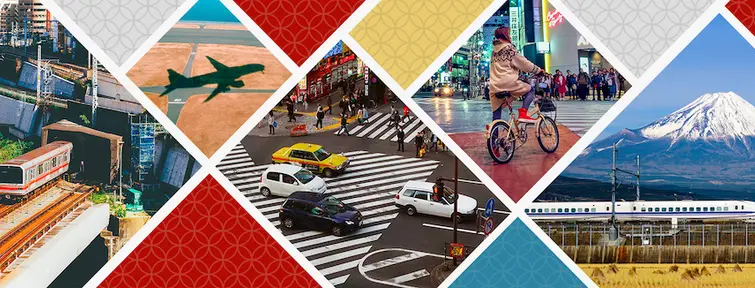
Transport budget in Japan
Travel far and explore japan.
If you want to explore Japan far and wide, you will have to think about your transport budget.
- Take the train in Japan
To travel between major Japanese cities, the easiest and fastest way is to take the Shinkansen, the Japanese high-speed train. If the price of a single ticket is quite expensive (about ¥14,000 or €117 for the trip from Tokyo to Kyoto), the most economical solution if you plan to take the train several times during your stay is to buy a Japan Rail Pass which allows you to take unlimited JR rail lines for 7 (approximately €246), 14 (approximately €393) and 21 days (approximately €503).
The major Japanese cities are all equipped with a very efficient public transport network (bus or metro) which will allow you to visit the city up and down with ease. Beware though, prices are slightly higher than in France and different private rail companies will have different prices.
- Car rental in Japan
The ideal solution if you want to travel all over Japan in freedom and go to more remote places is to rent a car. For example, it is possible to rent a 5-passenger car from €42 per day or an 8-passenger minivan for €91 per day.
- Traveling in Japan by train
- Driving in Japan
Discover the transport offer of Japan Experience
Discover all rail passes in japan.
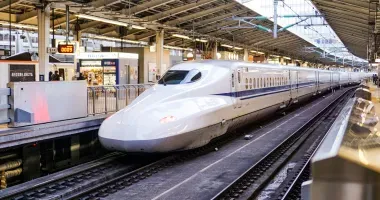
Best quality/price ratio for unlimited travel and, the Japan Rail Pass is the ideal travel solution, and the best way to discover Japan by train!
A0909C1A-93FB-4548-8F2A-CE5CA53C0BF6 Created with sketchtool. Prepaid Cards
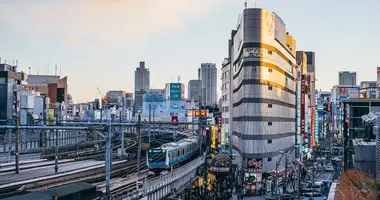
The Suica Card and Pasmo Card are a pre-paid top up card that allows you to use most public transport (metro, trains and buses) in Japan.
Airport Transfers
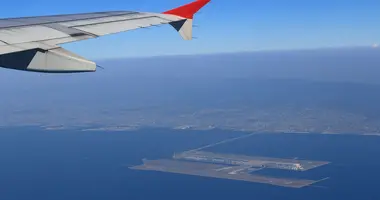
Make your journeys between Tokyo, Kyoto, Osaka and their respective airports easier by choosing our airport transfer services!
Our offer of tours in Japan for all budgets
Group tours in japan.
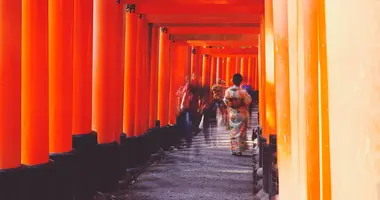
Our tours have been created in response to a high level of demand for a tour which gives a unique view and interaction with Japan.
Self-Guided Tours in Japan
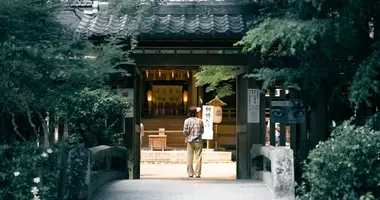
Enjoy tours created by our specialists in Japan. We organize your logistics: accomodation, airport transfers, Japan Rail Pass and Pasmo card.
Tailor-made Tours in Japan
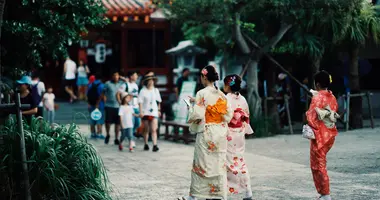
We know that everyone is different, so our team is here to design a travel itinerary tailored to you.
Together with one of our travel advisors, who are all experts of Japan and its culture, we can help you create your perfect trip.
Activities in Japan
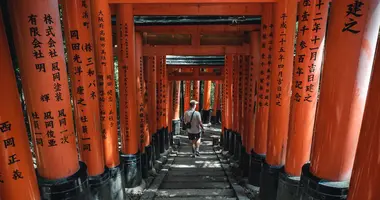
Japan isn't just Tokyo, Kyoto and Osaka; there are incredible activities to do all over the country, in places like Nara, Okayama, Nikko, Hiroshima, Kobe, or even places off the beaten track. Japan Experience offers a whole range of activities to discover the best of Japan!
Ultimately, it is quite possible to quickly lower the price of a trip to Japan by playing on your different budgets (catering, accommodation, transport), without sacrificing the quality of your stay!
For further :
- Japan Rail Pass, the practical and economical solution for traveling by train in Japan
- How much does it cost to climb Mount Fuji?
- Preparing for your stay in Tokyo
- Preparing for your trip to Japan
Please select your country on the list below:
- Switzerland
- United Kingdom
- Other countries

- Post author: Maxime
- Post comments: 2 Comments
- Post last modified: March 8, 2022
- Reading time: 13 mins read
Japan is a fascinating country, where history co-exists with modernity. Blessed with a unique culture, Japan doesn’t leave anyone indifferent and never fails to amaze visitors. From some of the oldest temples in the world to some of most modern shopping centers in the world, Japan has something to offer to everyone. Despite its beauty and uniqueness, Japan is also one of the most expensive countries I’ve ever been to in Asia.
Ever thought about visiting Japan but held back because of it’s price tag? This guide about budget travel in Japan was made for you !
We stayed for 24 nights in Japan, and we spent slightly less than 500US$ for the three of us , which means a little less than 7$ a day per person. Overall, we spent more than we usually do when visiting countries because we wanted to treat ourselves with the exquisite Japanese food. We spent around a 100$ on accommodation and less than that on transportation. Most of our expenses were food related or entrance tickets.
In this guide we will cover the 3 main sources of expense : Eating , sleeping and transportation . On top of that we’ll give you a few extra tips on traveling in Japan. After reading this article, you should have no problem to budget travel in Japan with 10$ a day or even less, depending on how adventurous you might want to be!
You can also check the course we’re offering on how to budget travel around the world , you can apply many of these tips to travel Japan!

Table of Contents

Comparing to other Asian countries, the food in Japan can appear rather expensive. Anyways, it’s still much cheaper to eat out in Japan than in Western Europe or the US! You can find many restaurants offering lunch or dinner for less than 10US$ per person. Although, if you want to budget travel in Japan you might want to consider some other options than restaurants. Here’s my suggestions:
100 yen shop
My main advice is to eat in 100 yen shops . The name is pretty clear, everything inside (should) costs a 100¥.
As of today 100 yen is equal to 0.77€. You can find a lot of different things in this kind of shop, from food to kitchenware or clothes. In terms of food, most of what they sell are unhealthy snacks, but if you dig you might find something suitable for you such as nuts, rice balls, bread or noodles. Some 100 yen shops are selling fresh products like fruits, ham and various other food suitable to make a sandwich and a quick picnic in a park.
Don Quijote is not a 100 yen shop, but you can find a huge variety of food at a cheap price. They are usually located at the upper floors of commercial buildings near the main train station. They sell baked sweet potatoes at only 100 yen. It’s usually cheaper than a supermarket. A great place to budget travel in Japan!

Traveling on a budget in Japan rhymes with Konbinis . A konbini is the japanese name for a convenience store , such as 7-Eleven, Lawson or Family Mart. It’s pretty cheap to eat in and the food is decent. If you’re hitchhiking, konbinis make a great starting point to exit a city as they are located everywhere and interestingly usually before a toll. Most Japanese love their konbinis and will stop there to get a snack, smoke a cigarette or use the toilets. The perfect place to ask them for a ride!
Cheap Ingredients
Supermarkets are a good place to eat at night, they offer big discount after around 7pm (time depends on the supermarket) on fresh food like sushi, cakes, lunch boxes…
If you want to eat on a budget, here’s a list of cheap ingredients to get while you’re in Japan :
- Udon (a Japanese noodle)
- Sprout beans

It won’t be simple for vegetarians or vegans to eat outside, fish is omnipresent in the Japanese food. Cautious ! It often appears in the manner of fish sauce or fish stock (Dashi in Japanese), which are difficult to detect at first glance.
Sleeping in an internet café
One of the popular options among Japanese is to stay overnight in an internet café or manga café. Travelers can also adopt this habit to budget travel in Japan, as these places offer shower, drinks and food. This is one of the cheapest options to spend time, it will cost you about 2000 yen (15€) for a night. Be aware that some don’t have shower facilities.
The best option to budget travel in Japan, as it is certainly the cheapest option out there. You can camp at service areas on the highway if you’re hitchhiking, otherwise if you’re inside the city you can head for the bigger park you can see on the map and crash for the night, and wake up before sunrise.
I wrote an article to give you my best tips to wild camp without trouble , check it out!
Airport – Train station
Sleeping in an airport works always well in a developed country, even though it’s often located far from the city, meaning that you need to hitchhike or take the train to get there. Check the local situation and how convenient it might be to reach this place. Although less comfortable, another option could be to sleep in the train station if it’s big enough to be open all night. You’ll more likely won’t have safety issues in Japan.
Sleeping in a public bath
Similar to South Korea, some public baths are opened 24 hours a day, which means that technically you can sleep there, and some travelers and locals take advantage of this policy.
Couchsurfing
Before coming to Japan, we were a bit scared because some fellow travelers told us it would be difficult to use Couchsurfing. Despite these warnings, we had no trouble to find hosts pretty much everywhere we went. Out of 24 nights, we spent 19 nights with 7 different hosts that we found through Couchsurfing and Trustroots . We were traveling with a toddler, and some hosts openly told us this impacted their decision to accept us. Be aware that popular hosts in touristic cities can receive up to 30 requests a day, so you’d better be the most original out there !
We are not using Couchsurfing anymore since they forced users out of their accounts , check out the 7 best alternatives to Couchsurfing !

Transportation
If you really want to do it on a budget travel in Japan, I believe that you’re down to two options : Cycling or Hitchhiking. Of course you can also walk.

Japan is pretty suitable for cycling, actually you’ll see many workers going to work with their bike, or moms picking up kids from school. I loved it ! At least, Japanese will get to the closest train station by bike. Car drivers are well aware and I felt much more respect towards cyclists than in neighboring countries such as South Korea or China. Pavements are usually wide, with a lane for pedestrians and one for cyclists. Coupling it with camping it can definitely be a fun & cheap experience!
Hitchhiking
If you want to hitchhike in Japan, we wrote a complete guide to share our experience and tips on hitchhiking in Japan .
For our trip, we chose the hitchhiking option, and it was pretty easy! Japan has the reputation of being one of the best countries in the world to hitchhike in and I can understand why. If you have ever hitchhiked in Western Europe then hitchhiking in Japan is somehow similar, you have to abide by the same unwritten rules : Hitchhiking from a rest area to another on the highway is the fastest way.
They are pretty strict on hitchhiking on the highway so you’ll need to stand before the entrance in order to get a ride. And usually there is not much space for cars to stop at the on-ramp. It does really sound like Europe!
But don’t get fooled by these similarities, your experience will be totally different than what you could experience in Europe! Communication is usually much more complicated here, so it would be a good idea to write a little note in Japanese explaining who you are, what you’re doing and where you want them to drop you. Otherwise an app translating works fine!
Another difference is that hitchhiking is not really popular here, even though it has become more common recently. You’ll probably be the first hitchhiker they’ll ever pick up, and they’ll try hard to be very nice with you. We often had people driving us past their destination to help us.
All in all, we had a great time hitchhiking in Japan, and we’ll definitely recommend this alternative to everyone planning to budget travel in Japan!
Wanna know more about hitchhiking ? Check our ultimate guide on how to hitchhike in Europe !

Plane / Bus / Train
Domestic flights are actually almost always cheaper than the train and can also be cheaper than the bus. A quick search on Skyscanner shows me that a plane between Osaka and Tokyo can be found at around 40$ one-way without check-in luggage. To be thorough you’ll also need to add the cost of a train ticket around 10-15$ for a one-hour ride to get in and out of these airports with public transportation.
Want to know the price of the train ? 14.000¥ which equals to 125$. The distance is about 500 kilometers and the train can cover it in just 2 hours and a half. The overnight bus will be cheaper on this route, but it will take around 8 to 9 hours. A bus ticket might cost you at least 3000¥ (25$) with a cheap company if you book in advance. The high cost of transportation makes it prohibitive to budget travel in Japan.

Inside cities
To move around the city on a budget, the best option is probably to walk as much as you can. It’s enjoyable since the sidewalks are well-maintained and wide. Renting a bicycle is also totally recommended !
Taking the train
To get to more distant places you can either use a bus or the train. The price is similar but it’s much easier to take the train. You can check the fare and timetable on Hyperdia . You can get pretty much anywhere with the train, but their system is confusing because multiple companies are operating in the same city. Transferring from a line to another is not an easy task, and you might have to get two tickets if you want to do so. Hyperdia will be your best friend for planning purposes !

Taking the bus
Taking the bus can be slightly unsettling at first because of the way it works. You enter from the back and get a ticket from a machine. You have to exit by the front door, first insert your ticket in the machine. It will tell you the correct fare to be paid depending on the distance you traveled. You can pay with cash or with an appropriate transportation card. I thought that was kind of like paying a parking lot.

BONUS: More tips to Budget Travel in Japan
There are lockers in every train station and most tourist information center. Bear in mind that you have to pay and they don’t come cheap (between 3 to 5$). The price is rather high for travelers planning to budget travel in Japan, but we noticed free lockers in many shopping centers, found all over the country and usually around the train station. More likely than not, you’ll need a 100 yen coin that they’ll give you back at the end, be prepared!
If you’re not much into ATM fees, you’d better cash back at 7-Eleven ATM or in the JP Bank Post Office ATM since that’s the only two that don’t charge anything. The rest charges a fee when you cash back with an international card. That being said I once found a 7-Eleven ATM charging a fee in the Osaka airport.
Check our article on how to reduce your bank fees abroad!
Tourist information center
In Japan, tourist information centers are usually really helpful. Some might have some computers for you to use and plan your trip, or some might offer you special free activities like the one in Nara. I truly recommend to always drop by no matter the city you are in. I always enjoy finding a English-speaking local!

You can easily take a shower in a Onsen (Hot springs). They are everywhere in Japan. The entrance fee starts from 600¥ (5$). A cheaper way to take a shower is to do so in the numerous public baths (Sento). 200¥ (1.70$) is the starting price. If you’ve been camping extensively, this a great option to stay clean while spending little to budget travel in Japan.
Charge your phone
I know how difficult it can be to charge your phone if you’re camping in Japan, even in Konbinis or restaurants they usually don’t let you plug your charger. Therefore I’d recommend buying a portable battery such as this one or this one if you prefer a solar option .
Getting Wi-Fi
Although this is not directly related to budget travel in Japan, let’s talk about how easy it is to find Wi-Fi in the country. First, be aware that in my experience, most cafés & local restaurants don’t offer Wi-Fi. I remember running around the city trying to find Wi-Fi in order to teach a French lesson , but after asking half a dozen of cafés I just gave up on the idea.
Many cities offer free Wi-Fi in their respective touristic areas. They almost always ask for registration through email, but some don’t double-check if your email is correct or not.
You can also head to a convenience store such as 7-Eleven, Lawson or Family Mart. They have Wi-Fi, but you have to register.
Do you still have question about traveling in Japan ? Hope this guide on budget travel in Japan will help you in your journey. Feel free to write a comment down there and we’ll answer shortly .
Like it ? Share it ! Share this content
- Opens in a new window
This site uses Akismet to reduce spam. Learn how your comment data is processed .
Thanks for sharing with us. I love Japan – I love sushi!
Thank for review about japan. I like sushi at here!
© 2023 The Nomad Family - All rights reserved
Privacy policy.
Learn How to Travel Around the World with $10 a day!

Get your Free Gift! 🎁
My travel planner.
Take action and start to plan your trip thanks to this 7-page travel checklist.
Travel Guide Japan
Book your individual trip , stress-free with local travel experts
Select Month
- roughguides.com
- Travel guide
- Itineraries
- Local Experts
- Travel Advice
- Accommodation
Plan your tailor-made trip with a local expert
Book securely with money-back guarantee
Travel stress-free with local assistance and 24/7 support
Alfredo Bartholomaus
My wife and I had a wonderful time in Japan, we love the people and the places we visit, but all of this would not have been possible without the great job...
Anyone who’s ever eaten sushi, read manga, or sipped sake may feel they know something about this slinky archipelago of some 6800 volcanic islands. And yet, from the moment of arrival in Japan, it’s almost as if you’ve touched down on another planet.
Where to go in Japan
Outdoor activities in japan, earthquake safety procedures, loving the machine, travel ideas for japan, created by local experts.

13 days / from 3535 USD
Small Group Tour: Splendours of Japan
Discover the allure of Japan on our small group tour (max 16 guests). Unveil Tokyo, Kanazawa, Kyoto, Osaka, and Okayama through guided explorations. Immerse in tea ceremonies and relish in the captivating beauty of these iconic destinations. Regular departures ensure an unforgettable journey.

14 days / from 4070 USD
Small Group Tour: Secrets of Japan
Embark on an exceptional small-group tour, available monthly, unveiling Tokyo, Hakone, Hiroshima, Osaka, Kyoto, and beyond. Uncover Japan's hidden gems, from serene shrines to bustling cities, and immerse in enchanting forests.

10 days / from 2795 USD
Small Group Tour: Highlights of Japan
Exciting small-group tour with monthly departures. Immerse in Japanese culture, challenge a pro in a sumo suit, wander Arashiyama's bamboo groves in Kyoto, and relish a kaiseki feast with Maiko entertainment - all included in this fascinating small group tour.

7 days / from 4000 USD
Japan highlights: Tokyo to Osaka
From Tokyo to Osaka, this Japan trip features fantastic experiences. View a sumo session, visit ancient temples, and climb the Tokyo Skytree tower. Explore the resort town of Hakone in Mt Fuji’s shadow, savor a tea ceremony in Kyoto, and see cherry blossoms, in season, to complete a wonderful trip.

10 days / from 3000 USD
Self-Guided Adventure Tour in Japan
Immerse yourself in the breathtaking natural beauty, history, enchanting culture and warmhearted people of Japan, with our self-guided tour of Japan. Walk-through a bamboo forest, see how sake is made, join Samurai lesson, go bar-hopping in Tokyo and Osaka and extend your journey to Hiroshima

10 days / from 6000 USD
Culinary tour across Japan
This trip takes you from Tokyo to Kyoto, where you will experience authentic Japanese foods, visit morning markets in the local cities, learn how to make Japanese food and enjoy a unique stay at a monastery. A once in a lifetime experience.
Prepare to be pleasantly disorientated as you negotiate this fascinating land where ancient gods, customs and craftsmanship are mixed with cutting edge, modern technology, futuristic fashions and up-to-the-second style. As our round-up of unbelievable facts about Japan reveals, it's a place of surprises and contrast.
High-speed trains whisk you from one end of the country to another with awe-inspiring punctuality. In the suburbs of a sprawling metropolis, you can catch sight of a farmer tending his paddy field, then turn the corner and find yourself next to a neon-festooned (video) games parlour. One day you could be picking through fashions in a boutique designed by an award-winning architect, the next relaxing in an outdoor hot-spring pool, watching cherry blossom or snowflakes fall, depending on the season.
Few other countries have, in the space of a few generations, experienced so much or made such an impact. Industrialized at lightning speed in the late nineteenth century, Japan shed its feudal trappings to become the most powerful and outwardly aggressive country in Asia in a matter of decades. After defeat in World War II, it transformed itself from atom-bomb victim to economic giant, the envy of the world. Having weathered a decade-long recession from the mid-1990s, Japan is now relishing its “soft power” as the world’s pre-eminent purveyor of pop culture, with the visual mediums of anime and manga leading the way.
In the cities you’ll first be struck by the mass of people. These hyperactive metropolises are the place to catch the latest trend, the hippest fashions and must-have gadgets before they hit the rest of the world. It’s not all about modernity, however: Tokyo , Kyoto, Ōsaka and Kanazawa, for example, also provide the best opportunities to view traditional performance arts, such as kabuki and nō plays, as well as a wealth of Japanese visual arts in major museums. Outside the cities there’s a vast range of travel options, from the UNESCO World Heritage-listed Shiretoko National Park in Hokkaidō to the balmy subtropical islands of Okinawa, and you’ll seldom have to go far to catch sight of a lofty castle, ancient temple or shrine, or locals celebrating at a colourful street festival.
You never know where your Japan adventure will take you, so don't set off without securing great value travel insurance from our trusted partner Heymondo .
Making sure you have comprehensive insurance cover for a trip to Japan is essential as unexpected medical bills can be costly – and failure to pay can result in travellers being denied entry to the country on future trips. Find more information here .
In common with all developed countries, Japan is not a cheap place to travel in or to, but there’s no reason why it should be wildly expensive either. Some of the most atmospheric and traditionally Japanese places to stay and eat are often those that are the best value. There’s been significant price-cutting in some areas in recent years, particularly airline tickets, which now rival the famed bargain rail passes as a means to get to far-flung corners of the country.
It’s not all perfect, however. The Japanese are experts at focusing on detail (the exquisite wrapping of gifts and the tantalizing presentation of food are just two examples) but often miss the broader picture. Rampant development and sometimes appalling pollution are difficult to square with a country also renowned for cleanliness and appreciation of nature. Part of the problem is that natural cataclysms, such as earthquakes and typhoons, regularly hit Japan, so few people expect things to last for long anyway. There’s no denying either the pernicious impact of mass tourism, with ranks of gift shops, ugly hotels and crowds often ruining potentially idyllic spots.
And yet, time and again, Japan redeems itself with unexpectedly beautiful landscapes, charmingly courteous people, and its tangible sense of history and cherished traditions. Few will be able to resist the chance to get to grips with its mysterious yet tantalising culture that blurs the traditional boundaries between East and West – Japan is unique, neither wholly one nor the other.
Two weeks is the minimum needed to skim the surface of what Japan can offer. The capital, Tokyo, and the former imperial city and thriving cultural centre of Kyoto, will be top of most visitors’ lists of where to go, and deservedly so, but you could avoid the cities entirely and head to the mountains or smaller islands to discover an alternative side of the country, away from the most heavily beaten tourist tracks.
It would be easy enough to spend two weeks just in Tokyo. The metropolis is home to some of the world’s most ambitious architecture, stylish shops and internationally celebrated restaurants and bars – as well as glimpses of traditional Japan at scores of temples, shrines and imperial gardens. Consider also taking in a couple of the city’s surrounding attractions, in particular the historic towns of Nikkō, home to the amazing Tōshō-gū shrine complex, and Kamakura, with its giant Buddha statue and tranquil woodland walks.
Northern Honshū sees surprisingly few overseas visitors, but its sleepy villages and relaxed cities deserve to be better known. The Golden Hall of Hiraizumi more than justifies the journey, and can be easily combined with the islet-sprinkled Matsushima Bay or rural Tōno. The region is also known for its vibrant summer festivals, notably those at Sendai, Aomori, Hirosaki and Akita, and for its sacred mountains, including Dewa-sanzan, home to a sect of ascetic mountain priests, and the eerie, remote wastelands of Osore-zan.
Further north, across the Tsugaru Straits, Hokkaidō is Japan’s final frontier, with many national parks including the outstanding Daisetsu-zan National Park, offering excellent hiking trails over mountain peaks and through soaring rock gorges. The lovely far northern islands of Rebun-tō and Rishiri-tō are ideal summer escapes. Hokkaidō’s most historic city is Hakodate, with its late nineteenth-century wooden houses and churches built by expat traders, while its modern capital, Sapporo, is home to the raging nightlife centre of Suskino and the original Sapporo Brewery. Winter is a fantastic time to visit and catch Sapporo’s amazing Snow Festival and go skiing at some of Japan’s top resorts including Niseko.
Skiing, mountaineering and soaking in hot springs are part of the culture of Central Honshū, an area dominated by the magnificent Japan Alps. Both the old castle town of Matsumoto, and Nagano, with its atmospheric temple of pilgrimage, Zenkō-ji, can be used as a starting point for exploring the region. Highlights include the tiny mountain resort of Kamikōchi and the immaculately preserved Edo-era villages of Tsumago and Magome, linked by a short hike along the remains of a 300-year-old stone-paved road. Takayama deservedly draws many visitors to its handsome streets lined with merchant houses and temples, built by generations of skilled carpenters. In the remote neighbouring valleys you’ll find the rare thatched houses of Ogimachi, Suganuma and Ainokura, remnants of a fast-disappearing rural Japan.
On the Sea of Japan coast, the historic city of Kanazawa is home to Kenroku-en, one of Japan’s best gardens, and the stunning 21st Century Museum of Contemporary Art, Kanazawa. Nagoya, on the heavily industrialized southern coast, is a more manageable city than Tokyo or Ōsaka, and has much to recommend it, including the fine Tokugawa Art Museum and many great places to eat. The efficient new airport nearby also makes the city a good alternative entry point. From Nagoya it’s a short hop to the pretty castle towns of Inuyama and Gifu, which holds summer displays of the ancient skill of ukai, or cormorant fishing.
South of the Japan Alps, the Kansai plains are scattered with ancient temples, shrines and the remnants of imperial cities. Kyoto, custodian of Japan’s traditional culture, is home to its most refined cuisine, classy ryokan, glorious gardens, and magnificent temples and palaces. Nearby Nara is a more manageable size but no slouch when it comes to venerable monuments, notably the great bronze Buddha of Tōdai-ji and Hōryū-ji’s unrivalled collection of early Japanese statuary. The surrounding region contains a number of still-thriving religious foundations, such as the highly atmospheric temples of Hiei-zan and Kōya-san, the revered Shinto shrine Ise-jingū, and the beautiful countryside pilgrimage routes of the UNESCO World Heritage-listed Kumano region.
Not all of Kansai is so rarefied, though. The slightly unconventional metropolis of Ōsaka has an easy-going atmosphere and boisterous nightlife, plus several interesting sights. Further west, the port of Kōbe offers a gentler cosmopolitan atmosphere, while Himeji is home to Japan’s most fabulous castle, as well as some impressive modern gardens and buildings.
For obvious reasons Hiroshima is the most visited location in Western Honshū. On the way there, pause at Okayama to stroll around one of Japan’s top three gardens, Kōraku-en, and the appealingly preserved Edo-era town of Kurashiki. The beauty of the Inland Sea, dotted with thousands of islands, is best appreciated from the idyllic fishing village of Tomonoura, the port of Onomichi and the relaxed islands of Nao-shima, Ikuchi-jima and Miya-jima.
Crossing to the San-in coast, the castle town of Hagi retains some handsome samurai houses and atmospheric temples, only surpassed by even more enchanting Tsuwano, further inland. One of Japan’s most venerable shrines, Izumo Taisha, lies roughly midway along the coast, near the lake- and seaside city of Matsue, home to the region’s only original castle.
Location for Japan’s most famous pilgrimage, a walking tour around 88 Buddhist temples, Shikoku also offers dramatic scenery in the Iya valley and along its rugged coastline. Its largest city, Matsuyama, has an imperious castle and the splendidly ornate Dōgo Onsen Honkan – one of Japan’s best hot springs. There’s also the lovely garden Ritsurin-kōen in Takamatsu and the ancient Shinto shrine at Kotohira.
The southernmost of Japan’s four main islands, Kyūshū is probably best known for Nagasaki, an attractive and cosmopolitan city that has overcome its terrible war-time history. Hikers and onsen enthusiasts should head up into the central highlands, where Aso-san’s smouldering peak dominates the world’s largest volcanic crater, or to the more southerly meadows of Ebino Kōgen. So much hot water gushes out of the ground in Beppu, on the east coast, that it’s known as Japan’s hot-spring capital. Fukuoka, on the other hand, takes pride in its innovative modern architecture and an exceptionally lively entertainment district.
Okinawa comprises more than a hundred islands stretching in a great arc from southern Kyūshū to within sight of Taiwan. An independent kingdom until the early seventeenth century, traces of the island’s distinctive, separate culture still survive. The beautifully reconstructed former royal palace dominates the capital city, Naha, but the best of the region lies on its remoter islands. This is where you’ll find Japan’s most stunning white-sand beaches and its best diving, particularly around the subtropical islands of Ishigaki and Iriomote.
Discover more places in Japan

- Kansai Travel Guide
- Kyūshū Travel Guide
- Northern Honshū Travel Guide
- Okinawa Travel Guide
- Shikoku Travel Guide
- Western Honshū Travel Guide
Big believers in team spirit, the Japanese embrace many sports with almost religious fervour. Baseball is actually more popular than the home-grown sumo, and hot on the heels of both sports is soccer. Martial arts, such as aikido, judo and karate, all traditionally associated with Japan, have a much lower profile than you might expect. Tokyo, with its many dōjō (practise halls), is the best place in the country in which to view or learn these ancient sports. Tokyo’s TICs have a full list of dōjō that allow visitors to watch practise sessions for free.
Popular outdoor activities include skiing, hiking and mountain climbing. The Tokyo-based International Adventurers Club (IAC) and Outdoor Club Japan , and the International Outdoor Club (IOC) in the Kansai region provide informal opportunities to explore the countryside in the company of like-minded people. The bilingual bimonthly magazine Outdoor Japan is also a mine of useful information.
Baseball first came to Japan in the 1870s, but it wasn’t until 1934 that the first professional teams were formed. Now Japan is yakyū (baseball) crazy, and if you’re in the country from April to the end of October during the baseball season, think about watching a professional match. Even if you’re not a fan, the buzzing atmosphere and audience enthusiasm can be infectious.
In addition to the two professional leagues, Central and Pacific, each with six teams, there’s the equally (if not more) popular All-Japan High School Baseball Championship. You might be able to catch one of the local play-offs before the main tournament, which is held each summer at Kōshien Stadium near Ōsaka.
In the professional leagues, the teams are sponsored by big businesses, a fact immediately apparent from their names, such as the Yakult (a food company) Swallows and Yomiuri (a newspaper conglomerate) Giants. The victors from the Central and Pacific leagues go on to battle it out for the supreme title in the seven-match Japan Series every autumn. Tickets for all games are available from the stadia or at advance ticket booths. They start at ¥1500 and go on sale on the Friday two weeks prior to a game. For more information on Japan’s pro-baseball leagues, check out the official professional league site , and the fan-site Baseball Guru .
There’s something fascinating about Japan’s national sport sumo, even though the titanic clashes between the enormous, near-naked wrestlers can be blindingly brief. The age-old pomp and ceremony that surrounds sumo – from the design of the dohyō (the ring in which bouts take place) to the wrestler’s slicked-back topknot – give the sport a gravitas completely absent from Western wrestling. The sport’s aura is enhanced by the majestic size of the wrestlers themselves: the average weight is 136kg, but they can be much larger – Konishiki, one of the sumo stars of the 1990s, for example, weighed 272kg.
At the start of a bout, the two rikishi (wrestlers) wade into the ring, wearing only mawashi aprons, which are essentially giant jockstraps. Salt is tossed to purify the ring, and then the rikishi hunker down and indulge in the time-honoured ritual of psyching each other out with menacing stares. When ready, each rikishi attempts to throw his opponent to the ground or out of the ring using one or more of 82 legitimate techniques. The first to touch the ground with any part of his body other than his feet, or to step out of the dohyō, loses.
Despite their formidable girth, top rikishi enjoy the media status of supermodels, their social calendars being documented obsessively by the media. When not fighting in tournaments, groups of rikishi live and train together at their heya (stables), the youngest wrestlers acting pretty much as the menial slaves of their older, more experienced, colleagues. If you make an advance appointment, it’s possible to visit some heya to observe the early-morning practise sessions; contact the Tokyo TICs for details. For all you could want to know and more on the current scene, plus how to buy tickets, check out the official website of sumo’s governing body, Nihon Sumo Kyōkai.
A short history of sumo
Accounts of sumo bouts (basho) are related in Japan’s oldest annals of history dating back around 2000 years when it was a Shinto rite connected with praying for a good harvest. By the Edo period, sumo had developed into a spectator sport, and really hit its stride in the post-World War II period when basho started to be televised. The old religious trappings remain, though: the gyōji (referee) wears robes similar to those of a Shinto priest and above the dohyō hangs a thatched roof like those found at shrines.
Sumo players are ranked according to the number of wins they have had, the top-ranking wrestler being called the yokozuna, and the next rank down ōzeki. In a neat reversal of Japan’s appropriation of baseball and export of professional players to the US league, several of sumo’s most revered stars of recent years were born abroad, including Konishiki (aka the “dump truck”) and Akebono, who both hail from Hawaii, Musashimaru from American Samoa and Asashoryu, the first Mongolian-born fighter to reach the rank of yokozuna.
Even though he is one of the most successful yokuzuna ever, Asashoryu battled with sumo’s strict code of conduct throughout his career and was forced into early retirement in 2010 after punching a man outside a Tokyo nightclub. This and other un-sumo-like behaviour, such as wrestlers being found in possession of pot and being involved in illegal gambling, has tarnished the sport, the popularity of which has plummeted over recent years, particularly among young Japanese. The sport‘s saviour may just be its current crop of overseas stars such as the Estonian-born ōzeki Baruto and the Bulgarian Kotooshu who was the first European-born wrestler to win the Emperor’s Cup in 2008. Tall and relatively light for a sumo player, the ōzeki has been dubbed the David Beckham of sumo.
The annual sumo tournaments
The must-see annual sumo tournaments are held at the following locations, always starting on the Sunday closest to the tenth of the month and lasting for two weeks: Kokugikan Hall in Tokyo (Jan, May & Sept); Ōsaka Furitsu Taiiku Kaikan in Ōsaka (March); Aichi-ken Taiiku-kan in Nagoya (July); and the Fukuoka Kokusai Centre, Fukuoka (Nov).
Despite sumo’s declining popularity, it’s still difficult to book the prime ringside seats (around ¥45,000 for four seats in a tatami mat block) but quite feasible to bag reserved seats in the balconies (starting around ¥3200 for a Western-style seat). The cheapest unreserved seats (¥2800) go on sale on the door on the day of the tournament at 9am. To be assured of a ticket you’ll need to line up well before that, especially towards the end of a basho. Matches start at 10am for the lower-ranked wrestlers and at this time of day it’s OK to sneak into any vacant ringside seats to watch the action close up; when the rightful owners turn up, just return to your own seat. The sumo superstars come on around 4pm and tournaments finish at around 6pm.
Full details in English about ticket sales can be found on the sumo association’s website . If you can’t get a ticket, note that NHK televises each basho daily from 3.30pm, and you can tune in to FEN on 810 KHz for a simultaneous English commentary.
Soccer was introduced to Japan in 1873 by an Englishman, Lieutenant Commander Douglas of the Royal Navy, but it wasn’t until Japan’s first professional soccer league, the J-League , was launched in 1993 that the sport captured the public’s imagination. Following on from the success of the 2002 World Cup, hosted jointly by Japan and Korea, the sport is now a huge crowd puller.
Games are played between March and October, with a break in August. Sixteen clubs play in the top J1 league, twelve in the J2, and all participate in the JL Yamazaki Nabisco Cup. There is a host of other cups and contests including the JOMO Cup, in which fans pick their dream teams from among all the J-League players.
Half-sport, half-religion, aikido translates as “the way of harmonious spirit” and blends elements of judo, karate and kendo into a form of non-body-contact self-defence. It’s one of the newer martial arts, having only been created in Japan in the twentieth century, and, as a rule, is performed without weapons. For a painfully enlightening and humorous take on the rigours of aikido training, read Robert Twigger’s Angry White Pyjamas.
To find out more about the sport, head to the International Aikido Federation , 17-18 Wakamatsuchō, Shinjuku-ku (合気会).
Probably the martial art most closely associated with Japan, judo is a self-defence technique that developed out of the Edo-era fighting schools of Jūjutsu. All judo activities in Japan are controlled by the All-Japan Judo Federation , at the Kōdōkan Dōjō, 1-16-30 Kasuga, Bunkyō-ku (講道館), reached from either Kasuga or Kōrakuen subway stations in Tokyo. The dōjō holds classes most evenings (Mon–Fri 5–8pm, Sat 5–7.30pm), and there’s also a hostel here where you can stay if you have an introduction from an authorized judo body or an approved Japanese sponsor. Judo is also taught at the Nippon Budōkan Budō Gakuen , 2-3 Kitanomaru-kōen, Chiyoda-ku (日本武道館), near Kudanshita subway station in Tokyo.
Karate has its roots in China and was only introduced into Japan via the southern islands of Okinawa in 1922. Since then the sport has developed many different styles, several with governing bodies and federations based in Tokyo. The Japan Karate Association , 2-23-15 Koraku, Bunkyō-ku (日本空手協会), is the world’s largest karate association teaching the Shokotan tradition. You can apply to train or watch classes here, but it’s best to call or email first. The closest subway stations are Iidabashi and Kōrakuen.
The umbrella organization, Japan Karatedō Federation , 6F, 2 Nippon Zaidan Building, 1-11-2 Toranomon, Minato-ku, Tokyo, can advise on the main styles of karate and the best place to see practise sessions or take lessons. The closest subway station is Toranomon.
Meaning “the way of the sword”, kendo is Japanese fencing using either a long bamboo weapon, the shinai, or a lethal metal katana blade. This martial art has the longest pedigree in Japan, dating from the Muromachi period (1392–1573). It developed as a sport during the Edo period and is now watched over by the All-Japan Kendo Federation , Nippon Budōkan, 2-3 Kitanomaru-kōen, Chiyoda-ku, Tokyo (全日本剣道連盟), near Kudanshita subway station. Practise sessions are not generally open to the public, but you might be fortunate enough to catch the All-Japan Championships held in Tokyo each autumn at the Budōkan.
Skiing and snowboarding
Japan is a ski and snowboard paradise; even on the shortest trip to the country it’s easy to arrange a day-trip to the slopes since many major resorts on Honshū are within a couple of hours’ train ride of Tokyo, Nagoya or Ōsaka. Serious skiers will want to head to the northern island of Hokkaidō, which has some of the country’s best ski resorts.
The cost of a ski trip needn’t be too expensive. Lift passes are typically ¥4000 per day, or less if you ski for several days in a row; equipment rental averages around ¥4000 for the skis, boots and poles per day, while accommodation at a family-run minshuku compares favourably to that of many European and American resorts.
Transport to the slopes is fast and efficient; at one resort ( Gala Yuzawa in Niigata) you can step straight off the Shinkansen onto the ski lifts. Ski maps and signs are often in English, and you’re sure to find some English-speakers and, at the major resorts, gaijin staff, if you run into difficulties.
Top resorts can get very crowded, especially at weekends and holidays; if you don’t want to ski in rush-hour conditions, plan your trip for midweek. In addition, the runs are, on the whole, much shorter than in Europe and the US. Compensating factors, however, are fast ski lifts, beautiful scenery – especially in the Japan Alps – and the opportunity to soak in onsen hot springs at night.
Recommended for beginners is either Gala Yuzawa or Naeba , both reached in under two hours from Tokyo by Shinkansen. Nozawa Onsen also has good beginners’ runs, but its off-the-beaten-track location makes it a better bet for more experienced skiers. Appi Kōgen and Zaō in northern Honshū and Hakuba in Nagano are considered the Holy Trinity of Japanese ski resorts. Shiga Kōgen is another mammoth resort in Nagano. If you’re after the best powder-snow skiing without the crowds, head north to Hokkaidō, to the world-class resorts of Furano and Niseko. There are also many slopes easily accessible on a day-trip from Sapporo.
All the major travel agents offer ski packages, which are worth considering. Hakuba-based Ski Japan Holiday and Niseko-based SkiJapan.com both have plenty of experience setting up deals for the expat community. Youth hostels near ski areas also often have excellent-value packages, including accommodation, meals and lift passes, and can arrange competitive equipment rental.
The most current and comprehensive English-language guide to Japan’s ski resorts is Snow-search Japan with details of over seventy resorts.
Mountaineering and hiking
Until the twentieth century, few Japanese would have considered climbing one of their often sacred mountains for anything other than religious reasons. These days, prime highland beauty spots such as Kamikōchi are very popular with day hikers and serious mountaineers, so much so that they risk being overrun. In addition, there are scores of national parks and other protected areas, and exploring these and other picturesque parts of the countryside on foot is one of the great pleasures of a trip to Japan. Nevertheless, bear in mind that those areas close to cities can get very busy at weekends and holidays. If you can, go midweek or out of season when the trails are less crowded.
Hiking trails, especially in the national parks, are well marked. Campsites and mountain huts open during the climbing season, which runs from June to the end of August. The efficient train network means that even from sprawling conurbations like Tokyo you can be in beautiful countryside in just over an hour. Top hiking destinations from the capital include the lakes, mountains and rugged coastline of the Fuji-Hakone-Izu National Park to the southwest and Nikkō to the north. Also west of the capital is the Chichibu-Tama National Park and the sacred mountain Takao-san, particularly lovely when the leaves change colour each autumn. The website outdoorjapan.com has useful ideas and information if you plan to go hiking or camping in Japan.
Rafting, canoeing and kayaking
All the snow that gets dumped on Japan’s mountains in winter eventually melts, swelling the country’s numerous rivers. Although the vast majority of these have been tamed by dams and concrete walls along the riverbanks, there are stretches that provide the ideal conditions for whitewater rafting, canoeing and kayaking. Prime spots for these activities are Minakami in Gunma-ken, Hakuba in Nagano-ken, the Iya Valley and Shimanto-gawa, both in Shikoku, and Niseko in Hokkaidō. A reputable firm to contact to find out more is Canyons .
One of Japan’s premier pro-golfing events is the Japan Open Golf Championship , held in October with a total prize fund of ¥200 million. If you fancy a round yourself, there are details of 2349 eighteen-hole or more courses at Golf in Japan . Course fees vary widely from ¥3000 at the cheapest places to over ¥40,000 for a round at the most exclusive links.
Beaches, surfing and diving
Given that Japan is an archipelago, you’d be forgiven for thinking that it would be blessed with some pleasant beaches. The truth is that industrialization has blighted much of the coastline and that many of the country’s beaches are covered with litter and/or polluted. The best beaches are those furthest away from the main island of Honshū, which means those on the islands of Okinawa, or the Izu and Ogasawara islands south of Tokyo.
Incredibly, Japan’s market for surf goods is the world’s largest, and when the surfers aren’t hauling their boards off to Hawaii and Australia, they can be found braving the waves at various home locations. Top spots include the southern coasts of Shikoku and Kyūshū. Closer to Tokyo, pros head for the rocky east Kujūkuri coast of the Chiba peninsula, while the beaches around Shōnan, near Kamakura, are fine for perfecting your style and hanging out with the trendiest surfers. A useful website is japansurf.com .
The best places to head for diving are Okinawa, around the island of Sado-ga-shima, near Niigata, and off the Izu Peninsula, close to Tokyo. Walruses may fancy braving ice-diving in the frozen far northern reaches of Hokkaidō. Check out divejapan.com for more information.
If you do have the misfortune to experience more than a minor rumble, follow the safety procedures listed below:
- Extinguish any fires and turn off electrical appliances.
- Open any doors leading out of the room you’re in, as they often get jammed shut, blocking your exit.
- Stay away from windows because of splintering glass. If you have time, draw the curtains to contain the glass.
- Don’t rush outside (many people are injured by falling masonry), but get under something solid, such as a ground-floor doorway, or a desk.
- If you are outside when the quake hits, head for the nearest park or other open space.
- If the earthquake occurs at night, make sure you’ve got a torch (all hotels, ryokan, etc provide flashlights in the rooms).
- When the tremors have died down, go to the nearest open space, taking your documents and other valuables with you. It’s also a good idea to take a cushion or pillow to protect your head against falling glass.
- Eventually, make your way to the designated neighbourhood emergency centre and get in touch with your embassy.
The thirtieth anniversary in 2009 of Mobile Suit Gundam, a hit anime franchise, served as the opportunity to construct an 18m tall, 35-tonne replica of one of its key robot characters on Tokyo’s Odaiba. During the two months RX-78-2 Gundam was on display it drew 4.15 million visitors. Crowds are also flocking to see another giant anime robot statue – Tetsujin 28 – built to commemorate Kōbe’s recovery from its 1995 earthquake (see Kobe Tetsujin Project). And it’s difficult to turn a corner without seeing an image of Tezuka Osamu’s Astro Boy, perhaps the most famous anime robot of all; his latest role is the official ambassador for Japan’s bid for the 2022 World Cup.
Japan’s love of humanistic robots goes back several centuries to the Edo era when much smaller karakuri ningyo (mechanized automata and puppets) were crafted to serve tea, or to decorate the portable shrines used in festivals: you can still see such dolls in action today on the floats used in festivals in Takayama and Furukawa among other places. These are the roots of a culture that continues to see robots as entertainment, life assistants and even friends. One robot called I-Fairy has officiated at a wedding while another, the robot seal Paro is being used for therapy in hospitals and elderly care homes.
This is just the tip of the coming robotic iceberg. As Timothy Hornyak points out in his fascinating book Loving the Machine , “more and more intelligent machines are expected to start working in Japanese society in areas such as healthcare as its population ages rapidly and its workforce shrinks.”
Travel advice for Japan
From travel safety to visa requirements, discover the best tips for traveling to Japan
- Culture and Etiquette in Japan
- Eating and drinking in Japan
- How to get to Japan
- Getting around Japan: Transportation Tips
- Shopping tips for Japan
- Travel Tips Japan for planning and on the go
- When's the best time to visit Japan?
The Rough Guides to Japan and related travel guides
In-depth, easy-to-use travel guides filled with expert advice.

Find even more inspiration here

Planning your own trip? Prepare for your trip
Use Rough Guides' trusted partners for great rates
written by Rough Guides Editors
updated 08.04.2024
Ready to travel and discover Japan?
Get support from our local experts for stress-free planning & worry-free travels.
- Where to stay
- Travel advice

How Affordable Is Japan for U.S. Travelers Right Now, Really?
From hotel upgrades to first-class bullet train rides and multicourse meals, now is the time for u.s. travelers to splurge in japan, while the yen is the weakest it has been in more than three decades..
- Copy Link copied

Go ahead, get an extra pack of sushi.
Nedikusnedi/Shutterstock
Japan is on sale, and there is no better time to visit to take advantage of the value offered than now. The yen is the weakest it has been in 34 years; it’s weakened by about 50 percent against the U.S. dollar since the pre-pandemic era. Not surprisingly, tourism is booming. In March 2024, more than 3 million inbound tourists arrived in Japan, breaking a record.
As of press time, one U.S. dollar is equivalent to about 156 Japanese yen; five years ago, it was hovering closer to 100 Japanese yen. (It’s worth noting that currency exchange rates fluctuate frequently, so all conversions in this story were accurate as of the publication date but may be different at the time of reading.) Why is the yen so weak? Among the reasons is that “the interest-rate difference between cash money in Japan [zero percent] and the U.S. [around 5 percent with the best mutual funds or deposits] is … causing the yen to trade low,” explains Frederick Gundlach, a U.S. CPA and tax preparer currently in Narita, Japan.
So, how can you make the most of your travels in Japan? Now is the time to upgrade your hotel room, travel on the first-class green car on the country’s famed bullet train, and splurge on expensive meals. For instance, if you splash out for an elaborate sushi dinner with a 30,000-yen price tag, that is the equivalent of just under $200. In the past, the same $200 would have been worth only about 20,000 yen.
Shop till you drop
The deals are so good that travelers are purchasing suitcases in Japan to carry back all of their shopping, including Japanes knives, as well as clothing and accessories from fashion labels such as Issey Miyake and Yohji Yamamoto. Many larger department stores like Isetan and Takashimaya and electronics shops like Bic Camera are duty-free, which means you can shop without taxes while traveling around Japan, not just at the airport before your return flight. Be sure to bring your passport with you, and look for the white-and-red “Japan. Tax-free shop” signs. Additionally, many department stores or electronics shops will give foreign passport holders a discount card at the information desk, usually for about 5 percent off, but sometimes more. After all of your shopping is completed, take your receipts to the duty-free counter in the department store and get the tax back: up to 10 percent, depending on what you are purchasing.

Look for the red tax-free shop signs to shop duty-free while out and about in Japan.
MMpai/Shutterstock
Hotel rates
Hotel rates for Japanese-owned hotels have not fluctuated much recently—and that’s a good thing. The Tokyo Station Hotel and Imperial Hotel Tokyo currently are in the 60,000 to 80,000 yen per night ($380 to $500) range, which is comparable to their rates before the yen weakened considerably, but the dollar equivalent is, of course, lower. But some other properties, namely international hotel brands, have tripled their rates as tourism demand has increased at record rates. The Aman Tokyo , for instance, is currently about 300,000 yen ($1,900) per night. In 2018, it cost about 110,000 yen.
For more budget-oriented travelers, however, Japan is a total bargain right now. Basic business hotels with small rooms and private bathrooms that are conveniently near major train stations start at about 7,500 yen per night, which is less than $50.
Train upgrades
A round-trip shinkansen bullet train to Kyoto from Tokyo is currently 26,000 yen ($165) or 38,000 yen ($240) for the first-class green car. Note that the price for the JR rail pass has recently increased , but it still poses a good value depending on how far one travels. The pass allows unlimited travel on Japan Rail trains, including shinkansen bullet trains. The basic seven-day JR Pass is 50,000 yen ($320); formerly it was 30,000 yen. The seven-day Green Car Pass is 70,000 yen ($445)—not a bad deal for a week of first-class bullet train rides.

When a bowl of ramen will only set you back about $6.50, it’s hard to resist.
Photo by Volkan Kacmaz/Unsplash
Meals at a minimum
Breakfast at a kissaten coffee shop with coffee, toast, and a boiled egg is about one coin or 500 yen ($3). A bowl of ramen goes for about 1,000 yen ($6.50). Add potstickers and an ice-cold beer, and the bill will be 2,000 yen ($13). Gundlach reminds travelers that “there is no tipping in Japan.”
Attractions and skiing
Tickets for the contemporary Mori Art Museum or the fine arts institute the Nezu Museum (both located in Tokyo) are 1,600 yen ($10). Entrance into the interactive digital art experience teamLab Borderless at the new Azabudai Hills urban village is 3,800 yen ($24), to get a sense of how much it will cost to soak up some culture in Japan.
For skiers and snowboarders, the renowned Niseko Village ski resort on the northern island of Hokkaido sells daily ski passes starting at 9,500 yen, a bargain at only $60. At Hakuba Valley in Nagano, the daily passes start at 8,500 yen ($55). Note that food at ski resorts is pricier than in the city centers, as are hotel rooms. But for some of the best powder in the world, it is still a bargain compared to, say, ski resorts in the United States that charge upwards of $100 and $200 for a day pass.
How long will the weak yen last?
Gundlach said he can’t forecast how long the yen will remain weak. But even if you aren’t traveling to Japan in the immediate future, you can still head to a foreign exchange office or a bank that exchanges currencies to buy some yen now; later, you can use it for on-the-ground expenses. With the weak yen, U.S. visitors can extend their stay for a few extra days, travel further, and explore more of the country. So, there’s no better time to visit Japan than the present.


Kyoto Travel Guide
Last Updated: June 3, 2024
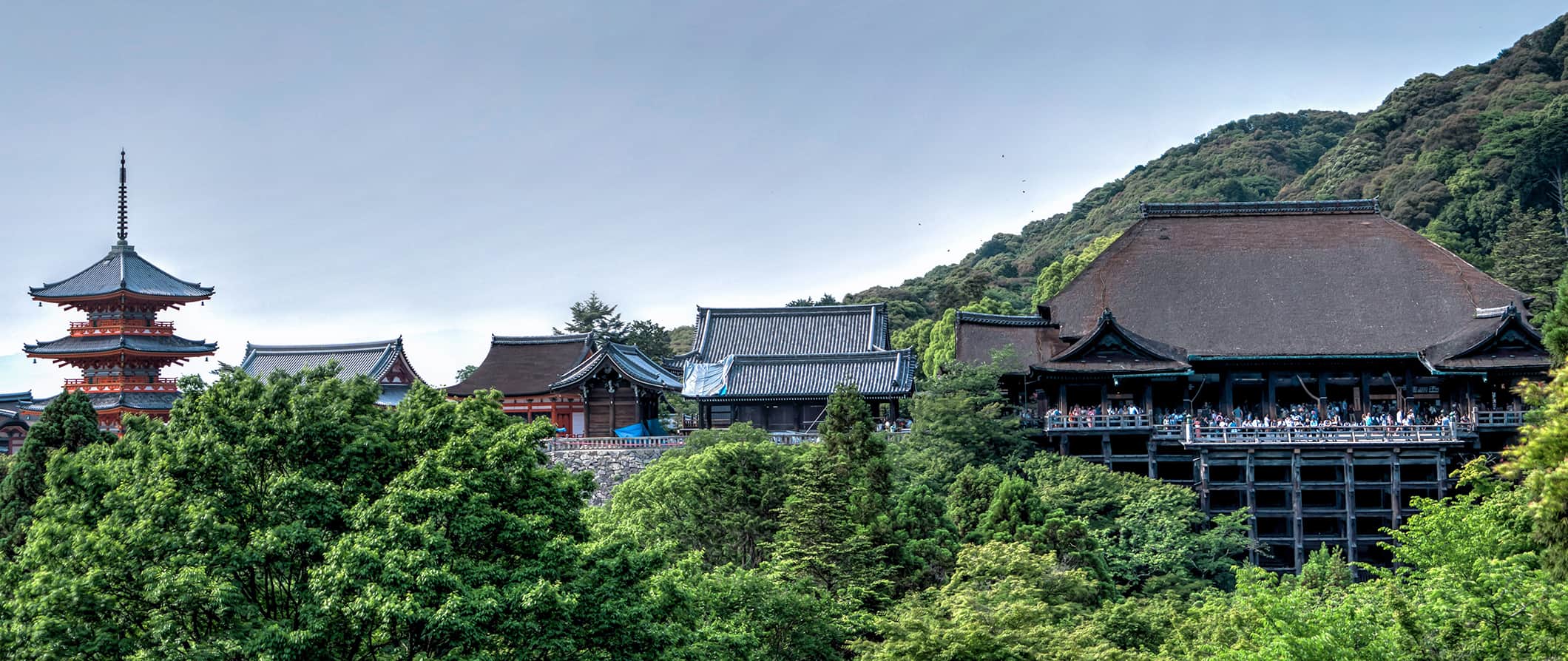
It lives up to all the hype you’ve heard.
Visiting Kyoto is on everyone’s to-do list (both foreigners and Japanese come here), so expect crowds, especially during peak season. But the city is worth the throngs (and I have plenty of tips to help you avoid them). I’d definitely recommend spending at least three days here.
This travel guide to Kyoto can help you plan your trip and save some money.
Table of Contents
- Things to See and Do
- Typical Costs
- Suggested Budget
- Money-Saving Tips
- Where to Stay
- How to Get Around
- How to Stay Safe
- Best Places to Book Your Trip
- Related Blogs on Kyoto
Top 5 Things to See and Do in Kyoto
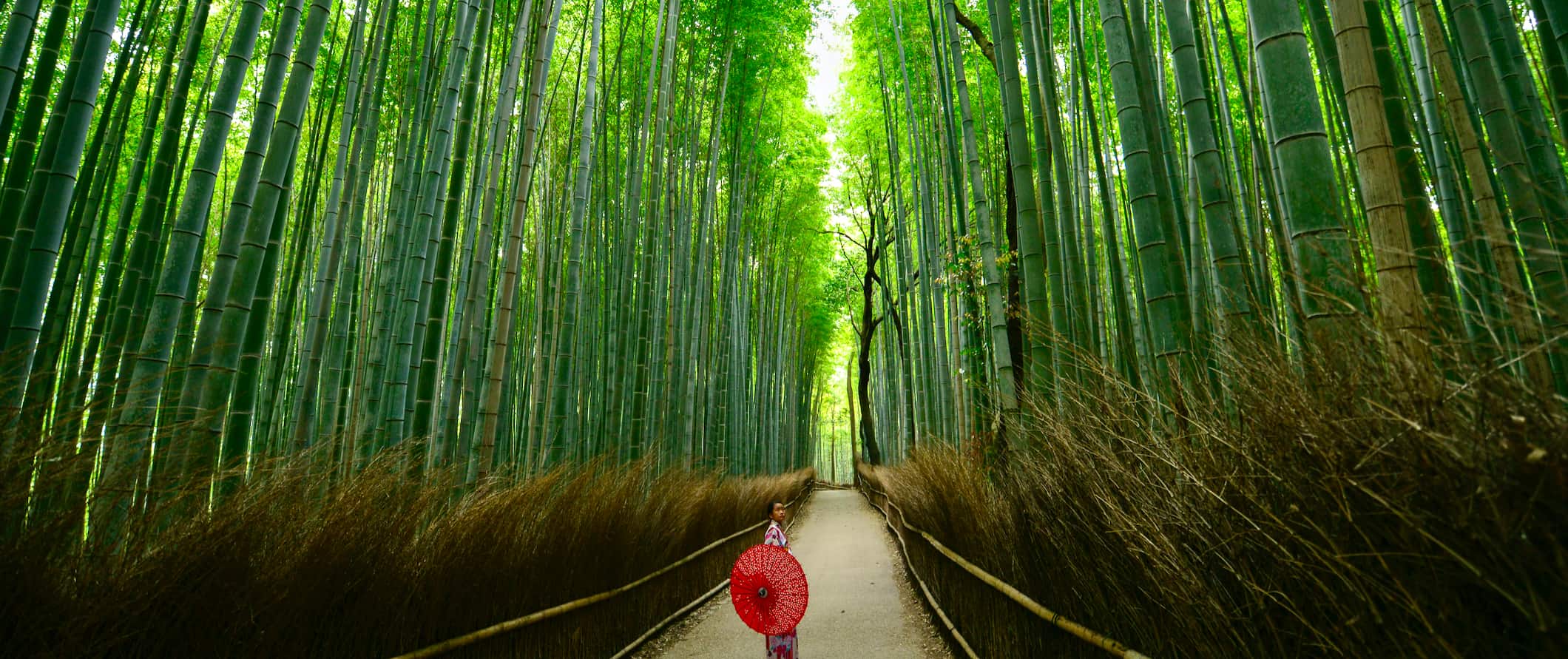
1. Visit Gion
Gion is the famous geisha district. Take a stroll around the area and see ochaya s (teahouses where geishas entertain), small shops, and many traditional restaurants. Here you’ll find a well-preserved district filled with classical architecture and design. Take a walking tour of Gion to learn even more about this historic area and geisha culture. (Note that you can’t take photos on the narrow private streets in Gion due to too many tourists gawking at and bothering geishas as they go about their business.)
2. Check out Heian Shrine
This Shinto shrine is one of the most popular and prized in the country. Built in 1895 on the 1100th anniversary of the establishment of Kyoto as Japan’s (former) capital, the main buildings in the complex are modeled after the original imperial palace. There is a massive torii gate at the entrance, and the shrine has a rather bright and ornate exterior that makes it stand out from the lush trees and gardens that surround it. If you’re here during cherry blossom season (late March-early April), it’s one of the best places in town to see them. The shrine is free, but the garden has an entrance fee of 600 JPY.
3. Day trip to Nara
Nara is a UNESCO World Heritage Site and home to over 1,300 “wild” deer that freely roam Nara Park. The Japanese consider them messengers of the gods, and there are places selling deer crackers all around the park so you can feed them by hand. Be sure to also visit the world’s largest wooden building, Todai-ji, which dates to the eighth century and was reconstructed in the 1700s. Note: Keep an eye on your things while in the park, as the deer will not hesitate to eat anything in your hands (including your own food, paper maps, etc.).
4. See Kinkaku-ji (The Golden Pavilion)
Officially known as Rokuon-ji, this is a Zen Buddhist temple that is part of Kyoto’s collective UNESCO World Heritage Site. There has been a temple here since the late 14th century, though it has been rebuilt several times (first in the mid-15th century and then again in the 1950s). The top two floors are entirely covered in gold leaf (hence its name, the Golden Pavilion). I think it’s one of the most beautiful temples in Kyoto. Admission is 400 JPY.
5. Explore Arashiyama (The Bamboo Forest)
Located near the famous Tenryu-ji temple, it’s a nice spot to walk around and get lost in. It’s not that big, but there are some hidden areas to explore. Since the forest is super popular (you’ll see a lot of school groups here too), arrive before 9am if you want to enjoy it without the crowds. It’s free to enter. You can also visit the very beautiful Okochi Sanso Garden. It costs 1,000 JPY and is well worth the price, especially since hardly anyone goes there.
Other Things to See and Do in Kyoto
1. tour nijo castle.
Nijo Castle was built in 1603 for Tokugawa Ieyasu, the first shogun of the Edo period. It later became an imperial palace before opening to the public. The castle spans 170 acres and features serene Zen gardens, intricate interior artwork, and a defensive moat. It is a popular tourist attraction, so it’s best to arrive early in the morning, before the crowds. The entrance fee is 800 JPY, plus an additional 500 JPY to enter Ninomaru, one of the two palaces within the castle. English audio guides (which I recommend) are 500 JPY.
2. Visit the Kyoto Gyoen (Imperial Palace Park)
This palace, which dates to 1855, is where the imperial family and court nobles resided until 1868, when the capital was moved from Kyoto to Tokyo. While you can’t enter any of the buildings, you’re free to look around and explore as much as you want (which is rare, as guided tours here used to be mandatory). There’s a huge garden surrounding the palace that is also nice to wander around too.
3. Walk around Higashiyama
This historic district is one of the oldest and best-preserved sections of the city, home to the eighth-century Kiyomizudera temple (one of the most famous in all of Japan). Spend an afternoon on the east side of the Kamo River and walk along its narrow historic streets, lined with traditional wooden buildings with small shops selling specialties, such as Kiyomizu-yaki pottery, okashi (candy), pickled foods, handicrafts, and other souvenirs. Another nice place to stroll in this neighborhood is the Philosopher’s Path, which follows a cherry-tree-lined canal that’s beautiful and meditative even when the blossoms aren’t in season.
4. Visit Ryoan-ji Temple
This was my favorite of all the temples that I saw in Kyoto. Built in the 15th century, this Zen shrine is a UNESCO World Heritage Site and features a mausoleum that houses the remains of seven emperors across Japan’s history. The traditional rock and sand garden, considered one of the best in the country, is immaculately kept and a stunning display of Buddhist art and philosophy. Admission is 500 JPY per person.
5. See more temples and shrines
Kyoto has over 1,600 Buddhist temples and 400 Shinto shrines, many of which form the collective UNESCO site, Historic Monuments of Ancient Kyoto. Devote some time to temple-hopping, though of course you won’t be able to see them all!
The main temples include the aforementioned Ryoan-ji with its famous rock garden, and Rokuon-ji (Temple of the Golden Pavilion); Kiyomizudera with its expansive wooden terrace; Ginkaku-ji (Temple of the Silver Pavilion); and Toji (home to Japan’s tallest pagoda). The main Shinto shrines include Fushimi Inari (famous for its thousands of gates), Kamo (actually two shrines in a complex spanning Kyoto’s Kamo River), Gion (venue for the one of the most famous festivals in Japan, the thousand-year-old Gion Matsuri), and Ujigami-jinja (built in 1060 and the oldest original Shinto shrine in Japan). All the Shinto shrines are free, while the Buddhist temples cost 400-800 JPY.
6. Wander among the plum blossoms
If you happen to be visiting Kyoto between mid-February and mid-March, you will see the plum trees erupt in blooms of bright white and dark pink flowers, similar to Japan’s famous cherry blossoms. Two places you can find them are Kitano Tenmangu and the Kyoto Botanical Gardens, both of which are located in northern Kyoto. Admission to the Kitano Tenmangu shrine is free (though the Plum Grove is 1,000 JPY), while admission to the botanical gardens is 200 JPY.
7. Visit the Kyoto National Museum
Opened in 1897, this is one of the top-rated such institutions in Japan, with over 12,000 items, focusing on premodern Japanese and Asian art. The museum, which takes a few hours to explore, offers a detailed look at the country’s history and art. Admission is 700 JPY for the permanent exhibit, 1,600-1,800 JPY for temporary collections, and 300 JPY for the gardens.
8. Check out the Kyoto International Manga Museum
Opened in 2006, this place is for the manga (Japanese comics and graphic novels) enthusiast in all of us. Home to a massive collection of over 50,000 titles (including 5,000 in languages other than Japanese) to browse and read, it’s almost more of a library than a museum. There are a number of exhibits though, highlighting the development and evolution of the art over the years, as well as how-to workshops with manga artists. There are also vintage antique manga, dating back to the 1860s. Admission is 900 JPY.
9. Relax in an onsen
There are over 140 bathhouses (known as onsen ) in Kyoto, supporting a tradition that dates all the way back to the early Middle Ages. Separated by gender, bathhouses are a great way to relax and soak in (ha) some of the more unique aspects of Japanese culture. Just be aware that some don’t allow visitors with tattoos, or force them to cover them, so be sure to check before you arrive. Expect to pay around 1,000 JPY for the budget bathhouses. Tenzan-no-yu Onsen is one the best in town.
10. Wander the Nishiki Market
Nishiki Ichiba is now one of the biggest indoor markets in the city. The market is full of vendors selling traditional dishes from the region, classic Kyoto souvenirs, and really just about anything else. Many of the stalls have been in the same family for generations; opening hours depend on the shop (but are typically from 9am to 6pm). To dive deeper into Japanese food culture, you can take a food tour of the market .
11. Go hiking
The hills of Kyoto are an ideal place to go hiking. There are a number of Buddhist temples and other religious sites (like Zen gardens) throughout. Try nearby Mount Atago; it’s a moderate 4-6-hour hike that offers scenic views, as well as lots of wildlife, especially deer. For a longer hike, walk the Takao-to-Hozukyo trail, which is moderately difficult and takes just over six hours.
12. Experience a tea ceremony
The traditional Japanese tea ceremony was born in Kyoto in the 16th century as the elite (warlords, nobles, wealthy merchants) tried to constantly outdo each other with more and more elaborate practices. Today, Kyoto remains the heart of tea culture in Japan, making Kyoto one of the best places in the country to learn about tea.
You can enjoy a tea ceremony at a temple or take a workshop , where you’ll learn how to perform the ceremony yourself.
13. Take a cooking class
Take some culinary skills home with you by learning a bit about how to prepare Japanese food. Kyoto has a few options, from spending an afternoon cooking in an izakaya (a casual bar/restaurant) to learning how to make your own bento boxes !
14. Take a food tour
I love taking food tours wherever I go. Arigato Tours offers several, from a street-food tour of Nishiki Market to a walking tour and dining experience combo that culminates in a 10-course traditional kaiseki dinner. I can’t recommend them highly enough. Tours start at 23,320 JPY.
15. Go on a sake brewery tour
Kyoto has a sake (rice wine) brewing tradition going back 400 years and is known for some of the best in the world due to using the area’s pure natural spring water in the brewing process. Arigato Tours offers an excellent three-hour tour of Fushimi (the brewing district) for 23,320 JPY, including stops at several breweries, a guided tour of the Gekkeikan Okura Sake Museum, and tastings.
For information on other cities in Japan, check out these guides:
- Hiroshima Travel Guide
- Tokyo Travel Guide
Kyoto Travel Costs
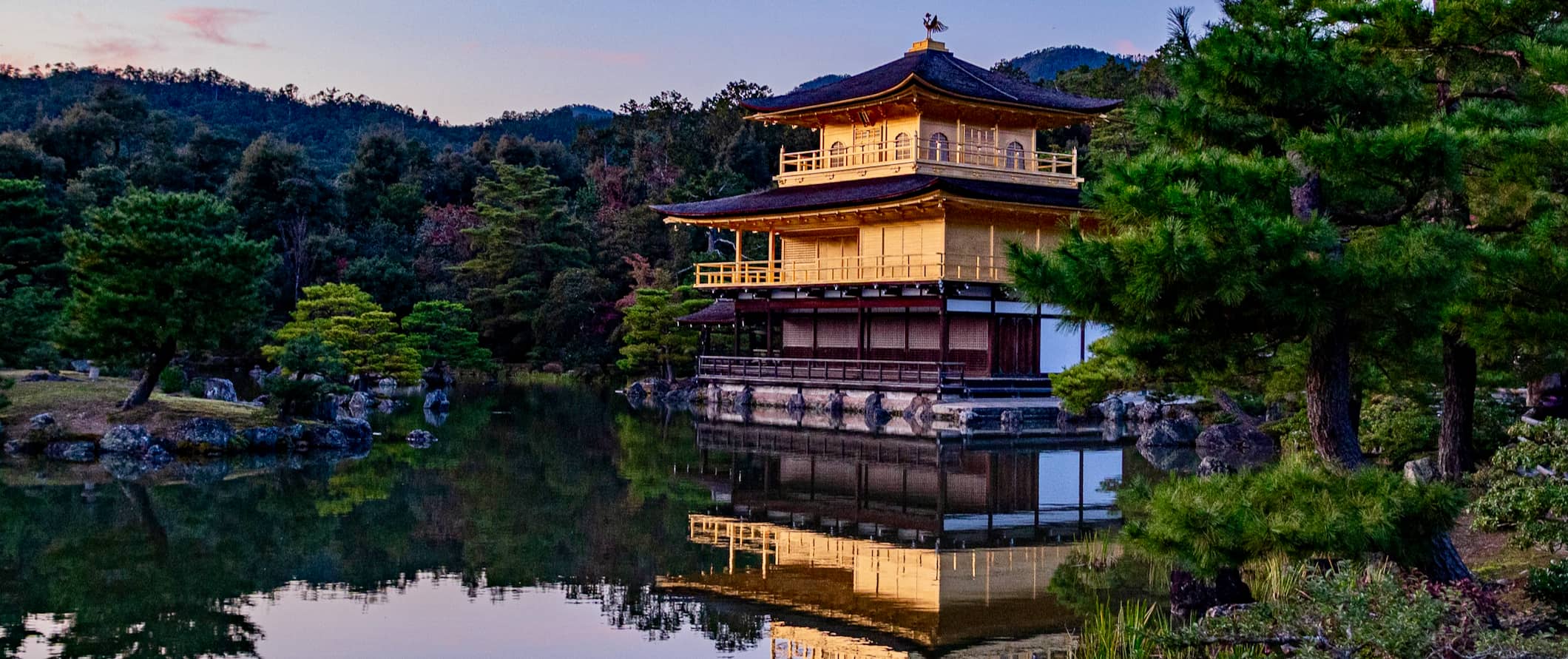
Hostels – Most hostels in Kyoto charge 2,400-3,500 JPY per night for a dorm room of any size. For a private room with a twin or double bed, expect to pay 6,500-10,000 JPY. Prices are about the same year-round. Free Wi-Fi and lockers are standard, and most hostels have self-catering facilities if you want to cook your own meals. None of the hostels have free breakfast.
Budget hotels – If you’re looking for a budget hotel, expect to pay at least 7,000-8,000 JPY for a double bed at a two-star location, while capsule hotels start at 4,500-5,000 JPY for a tiny pod that is essentially just a bed — it’s not fancy, but it’s a unique (and very Japanese) experience.
Airbnb is tightly regulated in Japan. It’s often difficult to find accommodations, they’re rarely in the center of town, and they’re expensive. Private apartments and homes on Airbnb usually start around 20,000 JPY per night. For a single room, expect to pay at least 12,500 JPY.
Food – Japanese cuisine is world-renowned and has even earned a spot on UNESCO’s Intangible Heritage List. While each region has its own specialties, rice, noodles, seafood, and seasonal produce all feature heavily no matter where you are. In Kyoto, tofu is a specialty, due to the plethora of Buddhist monasteries (whose monks eat a vegetarian diet).
Curry and donburi (bowls of meat and rice) are your cheapest options and cost around 500-700 JPY. Ramen is usually less, 1,000-1,200 JPY. Fast food (think McDonald’s or KFC) is around 800 JPY for a basic combo meal.
You’ll find the cheapest places far from the busy tourist areas, so walk a few blocks from the main temples if you want to save some money. Street food like green tea sweets and sashimi sticks cost about 300 JPY. Filling Japanese pancakes are even cheaper, at 200 JPY.
You can also find plenty of cheap meals and prepackaged items at 7-Eleven — and even the locals eat them! Meals sets of noodles, rice balls, tofu, and prepacked sushi are all available for under 500 JPY, making for cheap lunches.
Mid-range restaurants and most sit-down establishments cost around 2,500-3,000 JPY per person. Kaiseki ryori is a style of high-end, multicourse Japanese dining that originated in Kyoto. It costs about 8,000-10,000 JPY for a set menu of seven courses, covering everything from chicken to sushi. A Wagyu steak course (served with rice, seafood, salad, dessert, etc.) starts at 10,000 JPY.
Domestic beer is around 450-550 JPY, and sake is around 800-900 JPY per glass. A cocktail will set you back about 1,200 JPY. A latte/cappuccino is 500-600 JPY and a bottle of water is 100-130 JPY.
Some of my favorite places to eat are Okonomiyaki Yoshino, Ryuuann, Ramen Sen-no-Kaze Kyoto, and Trattoria Macedonia Yuki. For excellent cocktails, check out Kingdom.
Buying groceries costs around 5,000-6,000 JPY per week for basic staples like rice, vegetables, and fish. However, given a possible lack of a kitchen and the availability of such cheap food, it’s doubtful you’ll go grocery shopping to prepare your own meals unless you’re on a super tight budget.
Backpacking Kyoto Suggested Budgets
If you’re backpacking Kyoto, plan to budget around 15,000 JPY per day. This is a suggested budget assuming you’re staying in a hostel dorm, cooking most of your meals, eating at the cheap 100-yen stores, limiting your drinking, visiting free museums and temples, and using public transportation to get around. You wouldn’t live large or be able to eat any high-end meals or drink a lot but it’s a totally doable backpacker budget.
On a more mid-range budget of 27,000 JPY per day, you can stay in a private hostel or Airbnb room, eat out for most meals, indulge in some drinks, visit more paid attractions, take the occasional taxi, and just have some more breathing room in your travels.
On “luxury” budget, expect to spend 78,000 JPY per day or more. You’ll be able to stay in a budget hotel, eat at nice restaurants, enjoy more drinks, take paid food tours or cooking classes, and overall just have a more comfortable trip. But this is just the ground floor for luxury — the sky is the limit!
Kyoto Travel Guide: Money-Saving Tips
Japan has a reputation for being very expensive, but, outside of accommodation, everything is pretty affordable, and there are lots of free activities too. Kyoto is no exception. You can easily enjoy it on a limited budget.
Here are some quick tips to help you save money while you visit Kyoto:
- Get a transportation pass – If you plan on riding public transportation a lot, consider getting a day pass. One-day passes are 1,100 JPY for adults (550 JPY for kids) and provide unlimited travel on both the subway and city buses.
- Get the Traffica Kyoto Card – This prepaid card offers a 10% discount on public transportation (bus and subway) within Kyoto. You can load it with 1,000 or 3,000 JPY; however, if you don’t use all the money on the card, you can’t get it back, so only get a card if you know you’ll spend it all.
- Get a JR Pass – Chances are you’ll be arriving in Kyoto by train. If that’s the case, consider buying a JR Pass . These allow you unlimited train travel and will save you a ton of money if you’re going to be visiting other cities in addition to Kyoto. It comes in 7-, 14-, and 21-day options. Keep in mind that it can only be purchased outside of the country, so be sure to plan ahead!
- Rent a bicycle – There are plenty of places to rent a bike in Kyoto. It’s a cheap and easy way to explore the city, and you’ll get a much better feel for it, too. Many hostels rent bikes, and there are lots of rental companies, too. Expect to pay around 800-1,000 JPY per day for a standard bicycle or 1,700-2,000 JPY per day for an e-bike.
- Eat at 7-Eleven – 7-Eleven, Family Mart, and other convenience stores have a lot of meal sets (including sandwiches, soups, fruit, and more traditional Japanese options) that make for a cheap lunch option. Additionally, supermarkets also have many such meals at similar prices.
- Eat curry, ramen, and donburi – These are the best ways to eat cheap, filling meals when dining out.
- Cook your own food – Almost every hostel here has a kitchen where you can cook your own food instead of eating out. Combining this with shopping at the 100-yen stores can drastically cut your food costs.
- Shop at the 100-yen stores – There are many 100-yen shops in Kyoto with meal sets, groceries, drinks, toiletries, and household items. Store names vary by region, so ask your hotel or hostel reception desk where the nearest “Hyaku En” shop is.
- Buy food at night – After 8pm, most supermarkets discount their fresh food/prepared food as they have to get rid of it. If you buy your food after 8pm, you can save up to 50% on almost everything fresh.
- Bring a water bottle – The tap water here is safe to drink so bring a reusable water bottle to save money and reduce your plastic use. LifeStraw makes reusable bottles with a built-in filter so you always know your water is clean and safe.
- Stay with a local – Using hospitality sites like Couchsurfing that allow you to stay with locals not only gets you free lodging but lets you interact with them while you learn about their life. Make sure you send your request early though — the response rate is low and slow! Try inquiring with expats as well, as they tend to be more active on the platform.
Where to Stay in Kyoto
Kyoto has a bunch of hostels, and they’re all quite comfortable and sociable. My recommended places to stay in Kyoto are:
- Backpackers Hostel K’s House Kyoto
- Kyoto Hana Hostel
- Gojo Guest House
- Gion Ryokan Q-beh
How to Get Around Kyoto
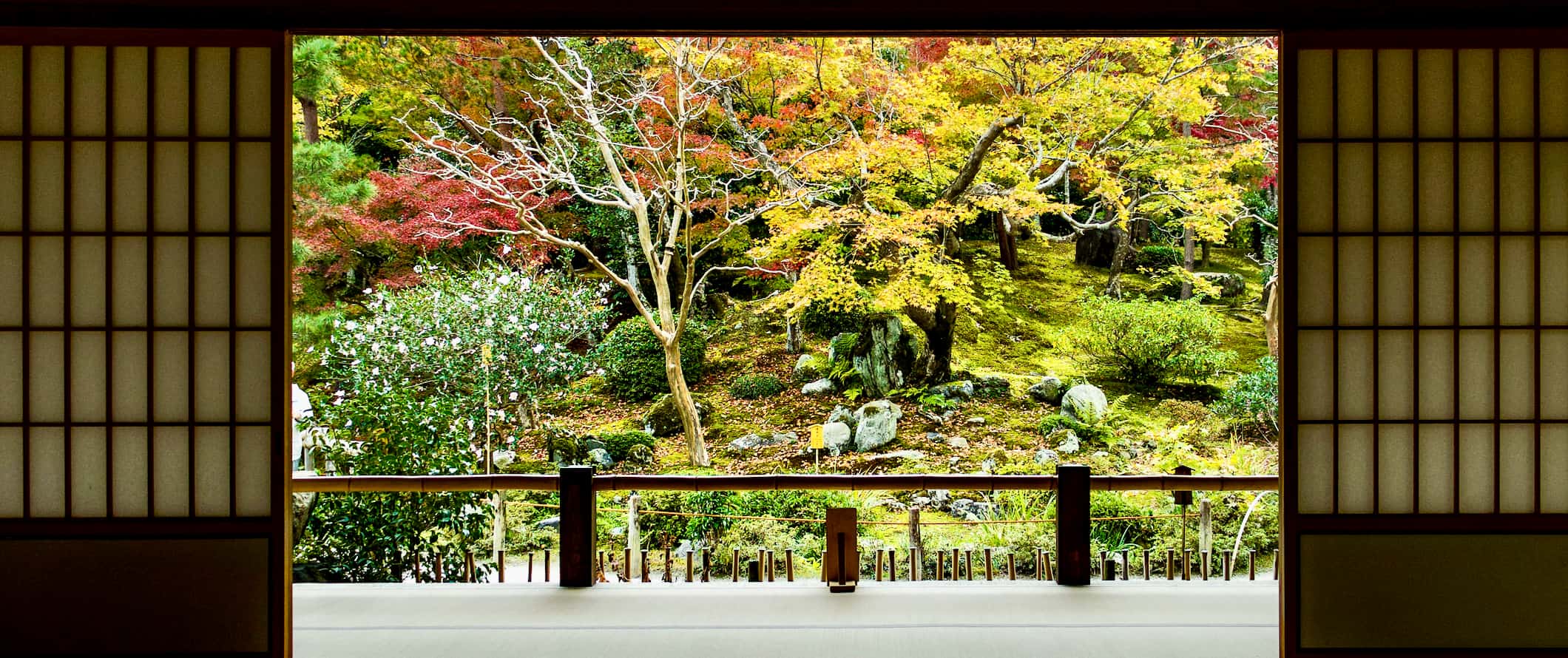
Public transportation – It’s very easy to get around using public transportation here. Kyoto has an extensive bus network formed by multiple companies. The buses are clean and reliable. Single-fare tickets start at 230 JPY; prices go up based on how far you ride. You’ll need exact change to pay (when you get off), which you can get from the machine at the front of the bus near the driver.
Kyoto has a metro system composed of two lines with just over 30 stations. Single fares are based on distance and cost 210-350 JPY per person.
If you’re going to be riding public transportation a lot here, it might be worth getting either of the reloadable cards that the city offers. The prepaid Traffica Kyoto Card offers a 10% discount on public transportation (bus and subway) within the city. You can load it with 1,000 or 3,000 JPY (but if you don’t use it all, you can’t get it back). Alternatively, you can get a one-day pass for 1,100 JPY that’s good on both the bus and subways.
Taxi – While it’s super easy to hail a taxi in Kyoto, they aren’t cheap, so I would avoid them as much as possible. Rates start at 600 JPY and go up by 465 JPY per kilometer. Stick to public transportation if you can.
Ridesharing – Didi is the main ridesharing app here (Uber also exists), but prices are similar to taxis, so you won’t really save any money using them.
Bicycle – Kyoto is quite easy to get around by bicycle. You can rent a standard bike for the day for around 800-1,000 JPY (1,700-2,000 JPY for an e-bike). It’s a popular way to explore, so either reserve one in advance or get up early to ensure you can get one (this is really only for the summer months). Also, keep in mind that the traffic here flows on the left.
Car rental – If you have an International Driving Permit (IDP) you can rent a car for around 7,500 JPY per day. Just keep in mind that you’ll be driving on the left here, and that you’ll need to get your IDP before you arrive in Japan. For the best car rental prices, use Discover Cars .
But, unless you have a specific need for a car, I would stick to public transportation and trains (which are usually much faster than cars).
When to Go to Kyoto
The most popular time to visit Kyoto is in the summer; however, it can get quite warm. Temperatures in June-August are over 32°C (89°F), and it will be rather humid. You’ll also have larger crowds, as Kyoto is one of the most visited cities in the country. If you go during the summer, make sure you’re up early to beat the crowds and that you’ve booked your accommodation in advance.
The shoulder seasons are the best time to go to Kyoto. April-May and October-November see cooler temperatures and only a little bit of rain. Keep in mind that late March to early April is cherry blossom season, so expect massive crowds during that time (book ahead!).
While the winter in Kyoto is cold, it is hardly unbearable. Temperatures usually sit around 10°C (50°F) during the day and drop down to around 1°C (34°F) at night. The city is much quieter during this time as well. Snow is common, but it usually melts not long after it falls. Rain is also common, so dress for wet, brisk weather.
How to Stay Safe in Kyoto
Japan is a very safe country. Even in a large city like Kyoto, there’s virtually zero chance you’re going to get robbed, scammed, or hurt.
Solo female travelers should generally feel safe here. However, the standard precautions always apply (never leave your drink unattended at the bar, never walk home alone intoxicated, etc.). You also may have to watch out for lewd behavior here and there. Some travelers have reported inappropriate behavior, such as men asking personal questions or catcalling. It’s rare, but it does occur from time to time. Most trains now have “women-only” cars during rush hour. You’ll see pink signs indicating where women should board.
Scams are unheard of here and they simply won’t happen.
Your only real risk here is from Mother Nature. Earthquakes and typhoons are common, so always make sure you know where the exits are at your accommodation. Download offline maps to your phone as well, in case you need to navigate in an emergency.
Japan’s emergency number is 110, or you can call the nonemergency Japan Helpline at 0570-000-911 should you need assistance.
The most important piece of advice I can offer is to purchase good travel insurance. It protects you against illness, injury, theft, and cancelations. It’s comprehensive protection in case anything goes wrong. I never go on a trip without it, as I’ve had to use it many times in the past. You can use the widget below to find the policy right for you:
Kyoto Travel Guide: The Best Booking Resources
These are my favorite companies to use when I travel. They consistently have the best deals, offer world-class customer service and great value, and overall, are better than their competitors. They are the companies I use the most and are always the starting point in my search for travel deals.
- Skyscanner – Skyscanner is my favorite flight search engine. They search small websites and budget airlines that larger search sites tend to miss. They are hands down the number one place to start.
- Hostelworld – This is the best hostel accommodation site out there with the largest inventory, best search interface, and widest availability.
- Agoda – Other than Hostelworld, Agoda is the best hotel accommodation site for Asia.
- Booking.com – The best all around booking site that constantly provides the cheapest and lowest rates. They have the widest selection of budget accommodation. In all my tests, they’ve always had the cheapest rates out of all the booking websites.
- Get Your Guide – Get Your Guide is a huge online marketplace for tours and excursions. They have tons of tour options available in cities all around the world, including everything from cooking classes, walking tours, street art lessons, and more!
- SafetyWing – Safety Wing offers convenient and affordable plans tailored to digital nomads and long-term travelers. They have cheap monthly plans, great customer service, and an easy-to-use claims process that makes it perfect for those on the road.
- LifeStraw – My go-to company for reusable water bottles with built-in filters so you can ensure your drinking water is always clean and safe.
- Unbound Merino – They make lightweight, durable, easy-to-clean travel clothing.
- Japan Rail Pass – This is a flexible transportation pass used for navigating Japan. Similar to the Eurail pass in Europe, it turns expensive bullet trains into budget-friendly modes of transportation. You honestly can’t visit Japan without one.
Kyoto Travel Guide: Related Articles
Want more info? Check out all the articles I’ve written on traveling Japan and continue planning your trip:
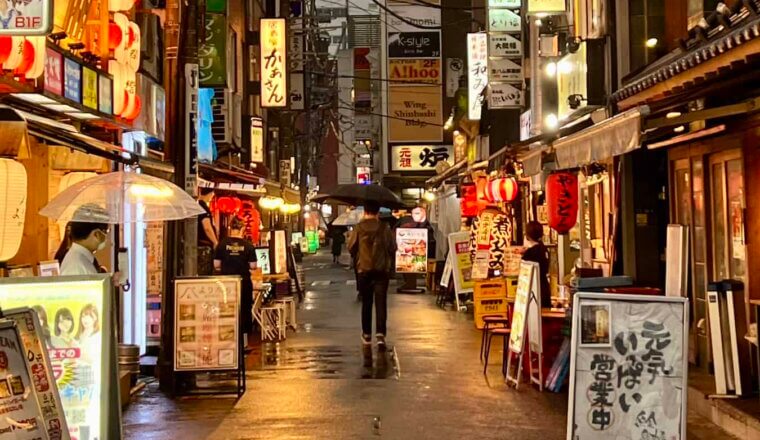
How to Spend Your Time in Tokyo: A Suggested Itinerary
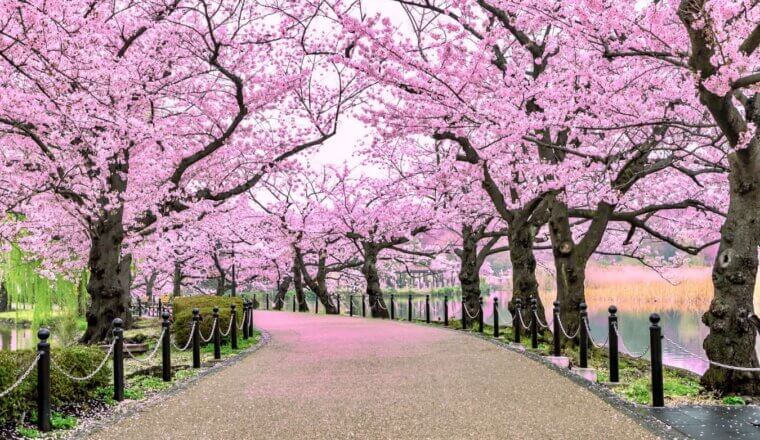
The Perfect 7-Day Japan Itinerary for First-Time Visitors
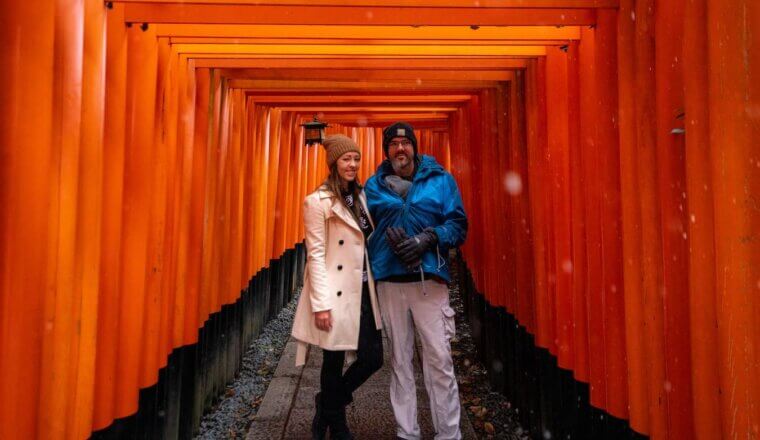
How to Travel Japan with a Baby
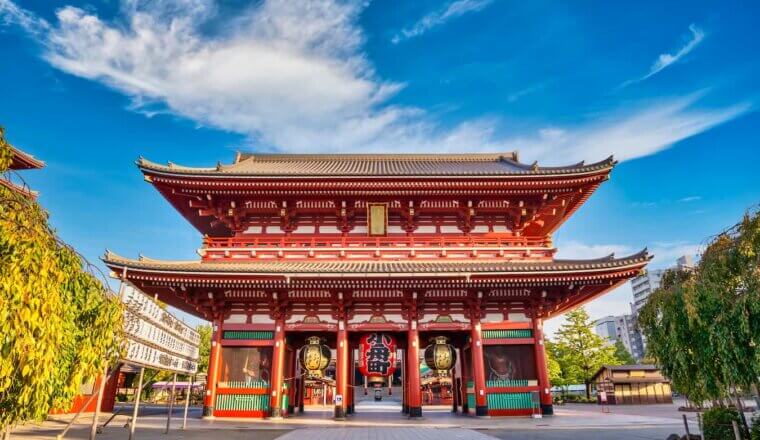
Where to Stay in Tokyo: The Best Neighborhoods for Your Visit
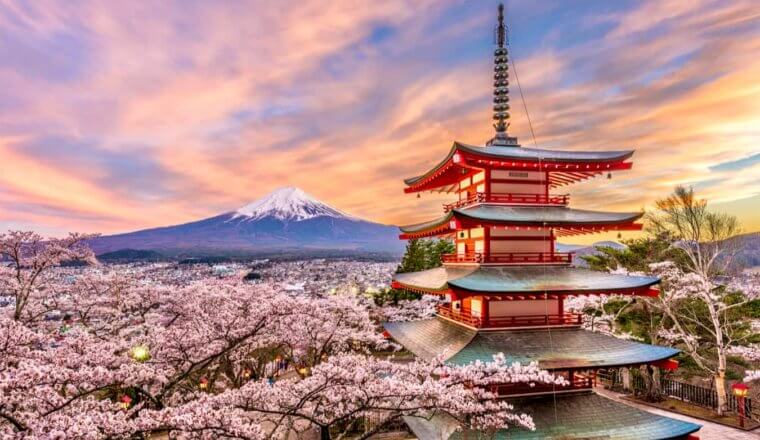
The Ultimate Japan Itinerary for First-Timers: From 1 to 3 Weeks
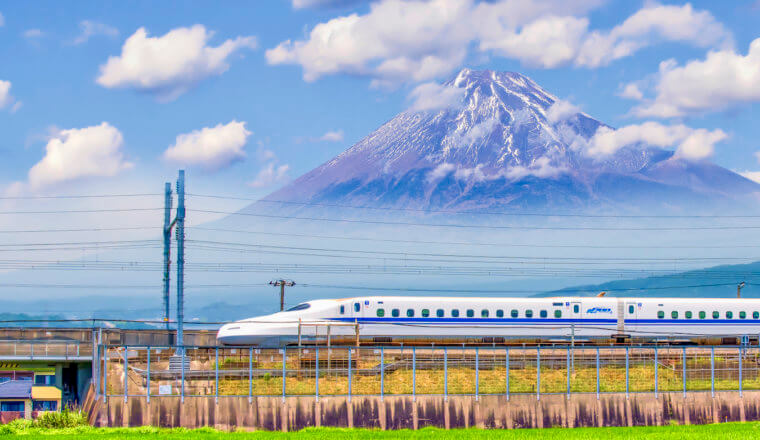
A Complete Guide to the Japan Rail Pass
Get your free travel starter kit.
Enter your email and get planning cheatsheets including a step by step checklist, packing list, tips cheat sheet, and more so you can plan like a pro!

- Where To Stay
- Transportation
- Booking Resources
- Related Blogs
Plan Your Trip to Japan: Best of Japan Tourism

Essential Japan

Trending in the forums
Japan Is Great For
Art & history.

The great outdoors

Historic sites
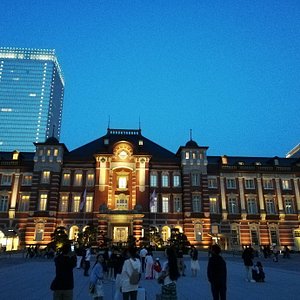
Budget Travel - Accommodation
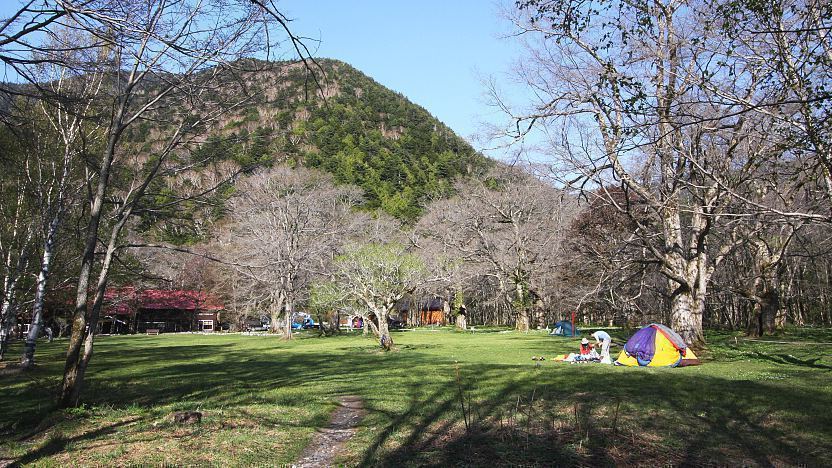
Unless you can stay at a friend's or relative's home, accommodation is going to be one of your biggest expenses. While Japan offers the standard budget-oriented places like hostels , dormitories and inexpensive business hotels , there are also some unique types of accommodation , such as capsule hotels , manga cafes and 24-hour baths .
General strategies
- We recommend to research and reserve your accommodation well in advance, especially when traveling during peak seasons to avoid bad surprises and to save time and nerves during your trip. Those who prefer to remain flexible should at least be aware of good reservation websites or prepare budget accommodation listings for the cities visited.
- Last-minute reservations, while possible, are not a proven money-saving technique in Japan. Depending on when you travel, they may even be impossible, as some cities get completely booked out during big events like festivals or the cherry blossom and autumn leaf seasons.
- Use the internet to compare hotel rates. Some of the best reservation websites for Japan are in Japanese, such as Rakuten Travel and Jalan . Both websites also maintain English versions, but they feature considerably fewer listings than the Japanese versions. International booking websites, such as Booking.com and Agoda , have also greatly improved their database of Japanese budget lodgings a lot in recent years. Another good website for budget travelers is Hostelworld .
- Note that some hotels and ryokan in tourist resorts raise their room rates considerably during peak travel seasons such as New Year , Golden Week and Obon and to a lesser degree on Fridays and Saturdays. The same is generally not true for hotels in business districts.
- Consider staying in less central locations, perhaps a few train stations outside the city center or a 10-20 minute walk from the closest station. Also consider the perks available at some places, such as included meals, free or discounted bicycle rentals or complementary shuttle bus rides.
- Use collected points of an airline or hotel mileage program on your hotel stays.
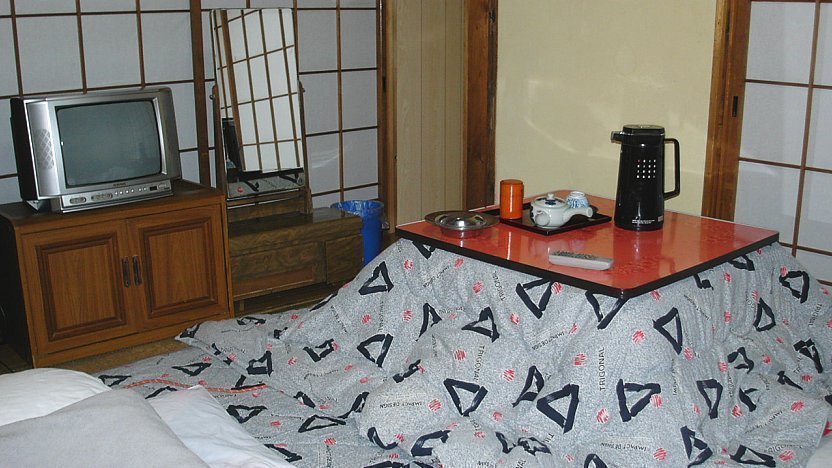
Types of budget accommodation
Below are the various types of budget accommodation found in Japan with their typical price ranges:
Hostels , backpackers and dormitories are budget-oriented lodgings that are mostly found in Japan's larger cities . Although private rooms may be available, guests usually stay in shared rooms that may be segregated by gender. Other facilities, such as showers, toilets , kitchens and other living spaces are typically also shared.
Hostel-style accommodation tends to be frequented by international travelers who may enjoy the sociable atmosphere that a hostel cultivates. In addition, some hostels offer their guests free or discounted bicycle rentals and sightseeing tours.
Be aware that hostels tend to be in older buildings, and some hostels maintain a curfew at night when the entrance doors are locked. Also, some hostel require their guests to be members of a hostel association, in which case registration can usually be made at check-in for a small fee. Hostelworld is a leading online reservation site for hostels in Japan.
Business hotels offer small, simple Western-style rooms that usually consist of a bed, desk, TV, and private bathroom and toilet. They are often conveniently located near train stations and may include breakfast. This option is especially attractive if traveling in pairs as the cost is similar to cheaper options, but at a higher level of comfort. Popular business hotel chains include Route Inn, APA Hotel, Toyoko Inn and Super Hotel.
Manga cafes (lit. comic book cafes) are establishments where you can rent time at a computer either hourly or for the night. The simplest places offer just some banks of computers with chairs, a selection of comic books and little to no privacy and are not suited for an overnight stay.
A lot of establishments, however, also offer their customers drinks, snacks, shower facilities, game rooms and quiet areas to rest or private booths, which may be equipped with couches or Japanese mattresses (futon). Some manga cafe chains require that you sign up for a membership which may come with a small registration fee.
Capsule hotels accommodate their guests in small capsules rather than rooms. The capsules are essentially enclosed bunk beds that are often stacked two high and may include a television, light and heating controls inside. Shared showers and toilets are provided, while personal belongings are usually stored in lockers. Some hotels also have lounges, restaurants and a public bath .
Capsule hotels are mainly found around major train stations and tend to cater towards men. These days, however, you can also find an increasing number of women-only capsule hotels, or hotels that have gender-segregated floors.
24-hour baths are a type of public bath usually found in large cities that are open 24 hours a day. In addition to the baths, some facilities provide lounging areas, large comfortable chairs or private rooms where visitors can rest for the night. The baths are gender-segregated while the rest areas generally are not. Some well known 24-hour baths include LaQua in Tokyo and Spa World in Osaka.
Inexpensive vacation rentals can be among the cheapest accommodation options around, especially for groups of travelers. The leading website for vacation rentals in Japan is Airbnb .
Weekly/monthly mansions are a type of accommodation for residents unwilling or unable to enter a long-term apartment rental contract, but they can also be attractive to travelers who stay in a city for a week or longer. Weekly/monthly mansions are typically furnished private or shared apartments, with some of them specifically targeting foreigners, in which case they are also known as gaijin houses ("foreigner houses").
Weekly/monthly mansions are most prevalent in larger cities , but also exist in smaller cities and in the countryside, although outside major urban areas they are less likely to cater to foreign travelers. While some establishments require a minimum stay of one month, others also offer weekly or even daily rates that can compete with budget hotel rates.
Overnight transportation has the dual benefit of combining cheap travel with the savings of a night of accommodation. An additional benefit is that you can gain back sightseeing time that you would otherwise have lost traveling between cities. Of course to be effective, this requires that you can sleep, or at least rest, while on the move.
Generally speaking, buses are the most practical and economical option for budget travelers, while overnight trains and overnight ferries are available only on a very limited number of routes. For more information see our page on budget transportation .
Also worth considering are tour packages , which combine transportation with accommodation. Large tour companies usually purchase hotel rooms in large numbers and are able to offer accommodation at rates below those available to individual consumers.
Camping in Japan is generally allowed only on designated campgrounds, which are found across Japan, especially in the countryside and in national parks . Campgrounds in cities are rare to non-existent. The overnight cost is a few hundred yen per person or around 1000 yen per tent if you bring your own tent. Some campgrounds also provide tents or cabins for rental. Note that some campgrounds are closed during winter.
Questions? Ask in our forum .
Links and Resources
Hostelworld.com.

Exploring Japan's Wonder On A $50 Daily Budget
- Last updated Jun 11, 2024
- Difficulty Beginner
- Category Travel

Japan is a country known for its rich cultural heritage, breathtaking landscapes, and unique experiences. However, many travelers believe that exploring this wonderland on a budget is impossible. But what if I told you that it is absolutely achievable? In this guide, we will delve into the secrets of exploring Japan's wonders on a $50 daily budget, uncovering hidden gems, budget-friendly accommodations, and delicious yet affordable local cuisines, proving that a limited budget doesn't have to limit your adventures in this enchanting land. From navigating the bustling streets of Tokyo to immersing yourself in the tranquility of Kyoto's temples, get ready to discover the magic of Japan without breaking the bank.
What You'll Learn
Budget-friendly activities and attractions in japan, affordable accommodation options for budget travelers in japan, tips for saving money on transportation in japan, eating on a budget: cheap and delicious food options in japan.

Traveling to Japan on a budget doesn't have to break the bank. With some planning and research, it's possible to explore this fascinating country without spending a fortune. To help you make the most of your trip without compromising on the experience, we have compiled a list of budget-friendly activities and attractions in Japan.
Visit Free Temples and Shrines:
A great way to immerse yourself in Japanese culture and history is by visiting temples and shrines. Many of these religious sites are free to enter, allowing you to admire stunning architecture and serene gardens without spending a dime. Some popular free temples and shrines include Senso-ji in Tokyo, Kiyomizu-dera in Kyoto, and Fushimi Inari Taisha in Kyoto.
Explore Public Parks:
Japan boasts magnificent public parks that offer a refreshing escape from the bustling city centers. These parks often feature beautiful gardens, walking trails, and even cherry blossoms during the spring season. Yoyogi Park in Tokyo, Ueno Park in Tokyo, and Nara Park in Nara are a few examples of free or low-cost parks worth exploring.
Wander through Traditional Markets:
Visiting local markets not only allows you to experience the authentic Japanese culture but also provides an opportunity to sample delicious street food at affordable prices. Tsukiji Fish Market in Tokyo, Kuromon Ichiba Market in Osaka, and Nishiki Market in Kyoto are some popular choices that offer a wide range of local delights to satisfy your taste buds.
Enjoy Free Cultural Performances:
To experience Japanese traditional arts and performances without breaking the bank, keep an eye out for free cultural shows and events. Traditional tea ceremonies, dance performances, and even sumo wrestling tournaments often have free or discounted admission for spectators. Check local event listings and tourist information centers for details.
Take Advantage of Discount Passes:
One of the best ways to save money on transportation and attractions in Japan is by purchasing discount passes. The Japan Rail Pass allows unlimited travel on JR trains, including the famous Shinkansen (bullet trains), while regional passes such as the Kansai Thru Pass and Tokyo Subway Ticket offer unlimited rides on local trains and subways. These passes can help you explore multiple cities and attractions at a fraction of the cost.
Opt for Affordable Accommodation:
Japan offers various affordable accommodation options, including hostels, capsule hotels, and guesthouses. These budget-friendly accommodations often provide clean, comfortable rooms with basic amenities. Additionally, they offer a chance to meet fellow travelers and share travel tips and experiences.
Sample Street Food:
Japanese street food is not only delicious but also a great way to try a variety of local dishes at affordable prices. From takoyaki (grilled octopus balls) to yakitori (grilled skewered chicken), there are numerous options to choose from. Look for street food stalls and small eateries in busy shopping streets or near popular tourist destinations.
Take Advantage of Free Attractions:
In addition to temples and shrines, Japan offers several free attractions that are worth exploring. Tokyo Metropolitan Government Building's observation deck offers stunning views of the city skyline, while Tsutenkaku Tower in Osaka provides a panoramic view of the city from its observation deck. Make use of these free attractions to enjoy breathtaking views without spending a dime.
Explore Nature:
Japan is known for its breathtaking natural landscapes and hiking trails. Take advantage of these natural wonders by going on hikes or nature walks. Mount Fuji, Kamikochi Valley, and the Kumano Kodo trail are just a few examples of the awe-inspiring destinations that can be enjoyed on a budget.
Join Free Walking Tours:
Many cities in Japan offer free walking tours led by local volunteers. These tours provide valuable information about the city's history, culture, and attractions while allowing you to explore hidden gems that may not be mentioned in guidebooks. Take advantage of these tours to discover the best of Japan without spending a fortune.
Traveling in Japan on a budget is entirely possible with proper planning and smart choices. By exploring free attractions, enjoying affordable street food, and taking advantage of discount passes, you can have an unforgettable trip to Japan without emptying your wallet. So, pack your bags, research your options, and get ready to embark on a budget-friendly adventure in the Land of the Rising Sun!
Unlock Your Travel Adventure with Easy-to-Find Known Travel Number
You may want to see also
Japan is often perceived as an expensive travel destination, but with some insider knowledge and careful planning, it is possible to explore this beautiful country on a budget. One of the biggest expenses when traveling is accommodation, but there are affordable options available for budget travelers in Japan. Here are some suggestions to help you find affordable accommodation during your trip:
- Hostels: Hostels are a popular choice for budget travelers in Japan. They offer dormitory-style accommodation where you can share a room with other travelers, helping to keep costs down. These hostels often provide common areas where you can socialize with fellow backpackers and access basic amenities such as a kitchen and laundry facilities. It's a great way to meet like-minded travelers and save some money.
- Capsule hotels: Capsule hotels are unique to Japan and provide a cozy and efficient accommodation option. These hotels have individual pods or capsules that can be as small as a single bed, offering privacy and comfort at a lower cost. While they may lack some of the amenities you would find in a traditional hotel, capsule hotels are a great option for budget travelers who are looking for a place to rest and don't need additional frills.
- Minshuku: Minshuku are traditional Japanese guesthouses that offer affordable accommodation with a homestay-like atmosphere. These guesthouses are usually run by local families who provide guests with a room and meals. Staying at a minshuku gives you a chance to experience traditional Japanese hospitality and get insight into the local culture. While the rooms may be basic, they offer a unique and affordable accommodation option.
- Business hotels: Business hotels in Japan are designed primarily for business travelers, but they can also be a great option for budget travelers. They offer small, no-frills rooms at reasonable prices and are typically located near train stations or business districts, making them convenient for exploring the city. While the rooms may be on the smaller side, business hotels often provide all the essential amenities you would need for a comfortable stay.
- Guesthouses: Guesthouses or ryokans are another affordable accommodation option in Japan. These traditional Japanese inns offer a range of room types at different price points. While some ryokans can be quite pricey, there are also budget-friendly options available. Guesthouses usually provide shared facilities such as communal baths and dining areas, which can contribute to a more authentic and social experience.
- Airbnb: Utilizing Airbnb can be a cost-effective way to find accommodation in Japan. You can often find affordable apartments or private rooms for rent at lower prices than traditional hotels. Airbnb also provides the opportunity to stay in local neighborhoods, allowing you to experience everyday life in Japan. Keep in mind any additional fees and make sure to read reviews to ensure a reliable and comfortable stay.
When booking accommodation, it is important to plan in advance to secure the best prices. Additionally, consider exploring cities and towns outside of major tourist destinations, as accommodation tends to be more affordable in these areas. By following these tips and being resourceful, you can find affordable accommodation options while traveling on a budget in Japan.
The Best Destinations for Solo Travel After Graduating College
When traveling in Japan, transportation costs can easily eat into your budget. However, with a little planning and some useful tips, you can significantly reduce your transportation expenses. Here are some effective ways to save money on transportation in Japan:
- Utilize Japan Rail Pass: If you're planning to cover multiple cities or regions in Japan, buying a Japan Rail Pass can save you a significant amount of money. The pass allows unlimited travel on Japan Railways (JR) trains, including bullet trains (Shinkansen), for a specified period. Make sure to purchase the pass before arriving in Japan as it is not available for purchase within the country.
- Opt for regional passes: In addition to the Japan Rail Pass, consider purchasing regional passes that provide unlimited travel within specific regions. These passes are often cheaper and allow you to explore a specific area in-depth without breaking the bank. Examples include the Kansai Thru Pass or the Hokkaido Rail Pass.
- Use local transportation cards: Most major cities in Japan offer local transportation cards, such as Suica in Tokyo or ICOCA in Osaka, that can be used on buses, trains, and subways. These cards offer discounted fares and eliminate the hassle of buying individual tickets for each journey. Simply load money onto the card and swipe it at the designated card readers.
- Take advantage of buses: While trains are the most popular mode of transportation in Japan, buses can be a more budget-friendly option, especially for shorter distances or in remote areas not covered by trains. Bus fares are generally cheaper, and some companies offer discounted passes for multiple trips or day trips to popular tourist attractions.
- Walk or cycle whenever possible: Japan is a country that is pedestrian-friendly and offers well-maintained sidewalks and pedestrian paths. Take advantage of this by exploring on foot whenever feasible. Not only will you save money, but you'll also have the opportunity to discover hidden gems and soak in the local atmosphere. In cities like Kyoto and Nara, renting a bicycle can be an economical and convenient way to get around.
- Travel during off-peak hours: Many train and subway lines in Japan offer discounted fares for travel during off-peak hours. Avoiding rush hour can not only save you money but also make your journey more comfortable by avoiding the crowds.
- Consider overnight buses or trains: If you're traveling long distances, consider taking an overnight bus or train to save on accommodation costs. These options are often cheaper than staying in a hotel or guesthouse and allow you to cover more ground while you sleep.
- Take advantage of discount cards or tourist passes: Check if the cities you plan to visit offer discounted transportation cards or tourist passes. These cards provide unlimited travel within a specified period and may also include discounts or free entry to certain attractions.
By following these tips, you can make your transportation expenses more manageable while exploring the beautiful sights of Japan. Remember to plan ahead, research the available options, and choose the most cost-effective means of getting around.
Understanding Visa Requirements for Australians Traveling to the US
When traveling on a budget in Japan, one of the main concerns for most travelers is how to eat cheaply. However, contrary to popular belief, it is possible to find delicious and affordable food options in Japan. Here are some tips to help you eat on a budget and still enjoy the fantastic flavors that Japan has to offer:
- Convenience Stores: Japan's convenience stores, such as 7-Eleven, Lawson, and FamilyMart, are a treasure trove of inexpensive and tasty food options. You can find a variety of pre-packaged meals like rice balls (onigiri), sandwiches, salads, and noodles at very reasonable prices. They often have microwaves available for customers to heat up their meals, making it a convenient choice for a quick and cheap lunch or dinner.
- Street Food: In Japan, street food stalls known as "yatai" can be found in many cities, particularly in popular tourist areas. Takoyaki (octopus balls), yakitori (grilled skewered meat), and okonomiyaki (savory pancake) are just a few examples of delicious and affordable street food options. Exploring these stalls will not only give you a chance to try local specialties but also save you money compared to eating at restaurants.
- Ramen Shops: Ramen is a staple in Japanese cuisine and can be found throughout the country. Unlike the instant ramen you may be familiar with, a bowl of authentic Japanese ramen can be a whole culinary experience. Many ramen shops offer affordable options, particularly for lunchtime specials. Look for shops with a ticket machine at the entrance, where you can purchase a ticket for your desired ramen dish before being seated.
- Izakayas: Izakayas are Japanese-style pubs where you can enjoy a variety of small plates and drinks. They offer a convivial atmosphere and are a great way to sample different types of Japanese dishes without breaking the bank. Look for izakayas that offer budget-friendly options like "nomihodai" (all-you-can-drink) or "tabehodai" (all-you-can-eat) deals within a specific time frame.
- Set Meals: Many restaurants in Japan offer affordable set menus, known as "teishoku" or "lunch sets." These options usually include a main dish, rice, miso soup, and a few small side dishes. They are often priced reasonably and provide a satisfying and well-balanced meal. Look for signs or ask staff if they have any set meals available to take advantage of these economical choices.
- Conveyor Belt Sushi: Conveyor belt sushi, also known as "kaiten-zushi," is a fun and affordable dining option in Japan. You can choose from a variety of sushi plates passing by on a conveyor belt and pay based on the number of plates you consume. These sushi restaurants often have a touchpad system for ordering specific dishes, making it easy and budget-friendly to enjoy a sushi feast.
By following these tips, you can stretch your budget and still enjoy the incredible food scene that Japan has to offer. Eating on a budget doesn't mean compromising on taste or missing out on mouthwatering experiences. So go forth, explore the local culinary delights, and savor the flavors of Japan without breaking the bank.
Discover How Perx Travel Can Help You Save Money on Your Next Trip
Frequently asked questions.
While it may be challenging, it is possible to travel in Japan on a budget of 50 dollars a day if you plan and budget carefully. This will require staying in budget accommodations, using local transportation, eating at inexpensive restaurants or street food stalls, and prioritizing free or low-cost activities and attractions.
To find affordable accommodations in Japan, consider staying in budget hostels, guesthouses, or capsule hotels. Alternatively, you can also look for deals on websites that offer discounted rates for hotels or consider staying in budget-friendly accommodations outside of major cities.
To save money on transportation in Japan, consider purchasing a Japan Rail Pass if you plan on traveling extensively by train. This pass offers unlimited use of JR trains for a set period and can provide significant savings. Additionally, consider using local buses or cheaper regional trains instead of the shinkansen (bullet train) for shorter distances.
To save money on food in Japan, consider eating at local eateries such as ramen shops, izakayas (Japanese-style pubs), or conveyor belt sushi restaurants, which often offer affordable options. You can also visit supermarkets or convenience stores for inexpensive meals or snacks, and try street food stalls for affordable and delicious treats. Avoiding expensive restaurants and opting for set meals or lunch specials can also help save money.

- Karli Trujillo Author Editor Reviewer

- Arjun Yadav Author Editor Reviewer
It is awesome. Thank you for your feedback!
We are sorry. Plesae let us know what went wrong?
We will update our content. Thank you for your feedback!
Leave a comment
Travel photos, related posts.

The Best Methods to Travel from Treviso Airport to Venice
- May 18, 2024
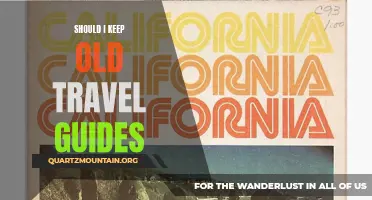
Is It Worth Keeping Old Travel Guides? Uncover the Pros and Cons
- May 12, 2024

How Long Should I Wait After Testing Positive Before Traveling?
- May 26, 2024

Traveling with Weed in America: What You Need to Know
- May 22, 2024

Decoding the Secrets of FTL Travel: Unveiling the Hypothetical Pathway to Faster-Than-Light Exploration
- May 28, 2024

Maximize Your Travel Experience: Tips for What to Do with the Money You Collect
- May 13, 2024

IMAGES
VIDEO
COMMENTS
4. Go camping in the summer months. If you really want to do Japan on the cheap, you can rely on its network of well-maintained campsites in rural or resort areas; prices range from ¥500 to ¥1,000 per person or tent. Note that many sites are only open in the summer. 5. Swap a night in a hotel for an overnight bus ride.
The following budget travel guide contains the basics on how to save money on a trip to Japan. In addition, check out our sightseeing guide for information on access and admission to specific destinations and sights and get answers to your questions in our question forum.
Japan is an affordable destination even on a tight budget. Stretch your yen with JNTO's Guide to Traveling Japan on a budget, from transport to dining out. ... which offer significant reductions on rail travel in Japan. Long distance buses. Long distances buses and local train services are other low-cost transport options. Consider taking a ...
From the United States, a round-trip flight to Japan can be anywhere from $800 USD to $1500 USD. This cost will fluctuate depending on the time of year you choose to travel and where you're traveling from, so keep an eye on prices and see if you can score yourself a deal.
May 20, 2024/. Japan has a reputation for being an expensive destination, but actually it can be very affordable! I've visited Japan twice for a total of nearly six months and spent only about $48 USD/day using these very tips in this Japan budget travel guide. The key to traveling Japan on a budget is to travel SLOW, to take advantage of ...
A regular JR pass that allows travel across the whole country costs 29,100 yen. This is incredibly reasonable. If you take a train from Tokyo to Kyoto, throw in a day trip to Nara and you've started saving money. Our plan was as follows: 3 days - Hiroshima and Miyajima. 2 days - Osaka. 1 day - Himeji. 1 day - Nara.
The Seishun 18 is a 5-day ticket, costing 2,370 yen per day - a total of 11,850 yen. A fraction of the price of the Japan Rail Pass, this is a great option if you want to do lots of little trips or one or two big journeys during the 5 day period. Interestingly, the ticket can also be shared between up to 5 people.
Medium budget: 500 - 1000 yen per day. Many coffee shops and some restaurants in shopping areas and around train stations offer breakfast sets for around 500 to 1000 yen. High budget: above 1000 yen per day. Hotel breakfasts and breakfast buffets will usually cost you more than 1000 yen.
Let's start with some of the general money-saving tips that will help you keep your budget under control. 1. Travel during low season. Hotel rates vary a lot with demand, so traveling during peak tourist season (especially "Golden Week") means you'll pay a heck of a lot more than during less busy times of the year.
5. Take public transportation to and from the airport. The great thing about Japan is that its public transportation system is about the best in the world. Getting from the airport to the city center by bus or train is very easy and can save you a ton of money.
You can save money in Japan by living like a local. If you're staying in a hostel, buying a rail pass, eating relatively cheap food, and visiting a few attractions, budget around 10,000-16,000 JPY per day. However, by utilizing the tips above, I think you can travel Japan for 7,000-10,000 JPY per day.
Kyoto - Hiroshima: 10,500 Yen ( $70) Hiroshima - Osaka: 10,000 Yen ( $67) So if you were to replicate my Japan route exactly, you would end up spending $381 on rail tickets. It sounds like a lot of money but I do want to stress that the trains in Japan are some of the best in the world.
Paul McInnes May 28, 2021. Sekisui House has announced that it is on the hunt for a "TRIP BASE STYLE Ambassador." Provided with 10 million yen in travel funds,.. 154 11. Know before you go with our comprehensive travel tips (including Wi-Fi and currency) and guides on planning your trip to Japan.
So let's travel Japan on a budget. Take advantage of free attractions and events. It may come as a surprise, but a lot of major attractions in Japan are actually free. With the notable exception of Kyoto, most temples and shrines around the country are free of charge. ... READ: THE ULTIMATE GUIDE TO 7 DAYS IN JAPAN BOOK: A BUDGET-FRIENDLY ...
6. Book your accommodation ahead of time. Budget-friendly places fill up first. Unfortunately, Japan is one of those countries where planning ahead is going to save you lots of money. Our guesthouses and hostels were all booked on Booking.com and Hostelworld.com for anywhere from $7.50-$23 per person.
Breakdown of budget for 2 weeks in Japan: Flights (from London to Tokyo return, via Warsaw on using Lot airlines)- $830. Accommodation - $870. Transport (14-day Japan Rail pass) - $360. Food (Daily cost averaged $30, which in most cases was street food lunch/snacks and a low-average priced dinner) - $420.
However, transportation is one of the biggest expenses to factor into your Japan travel budget. Travel by train in Japan. ... This IS the ultimate Japan travel guide - complete with what to do during what season, costs, and some Japanese words. Thank you for this! April 25, 2024 at 6:36 am
The traditional Japanese inns, with tatami, futon and onsen bath are one of the essentials of a trip to Japan. Count on average 20,000 - 30,000 ¥ / pers. with meals and breakfast included. Minshuku. Home cooking and direct contact with the locals, the minshuku are the equivalent of our guest rooms.
Japan Travel Guide. Last Updated: June 3, 2024. Japan is one of the most amazing, beautiful, interesting, and friendly countries in the world. From bustling Tokyo and Zen-like Kyoto all the way to laid-back Okinawa and wintery Hokkaido, Japan rocks. It boasts mouthwatering food, majestic temples and shrines, serene gardens, lush national parks ...
Below is a list of popular sightseeing spots and activities that do not cost admission: Tokyo. Toyosu Market, Meiji Shrine, Imperial Palace and East Gardens, Sensoji Temple, observation deck of the Tokyo Government Office and people watching and window shopping in bustling Shinjuku, Shibuya, Harajuku, Akihabara and Ginza. Kyoto.
This guide about budget travel in Japan was made for you ! We stayed for 24 nights in Japan, and we spent slightly less than 500US$ for the three of us, which means a little less than 7$ a day per person. Overall, we spent more than we usually do when visiting countries because we wanted to treat ourselves with the exquisite Japanese food.
Small Group Tour: Secrets of Japan. Embark on an exceptional small-group tour, available monthly, unveiling Tokyo, Hakone, Hiroshima, Osaka, Kyoto, and beyond. Uncover Japan's hidden gems, from serene shrines to bustling cities, and immerse in enchanting forests. view trip ⤍. 10 days / from 2795 USD.
For more budget-oriented travelers, however, Japan is a total bargain right now. Basic business hotels with small rooms and private bathrooms that are conveniently near major train stations start at about 7,500 yen per night, which is less than $50. ... The pass allows unlimited travel on Japan Rail trains, including shinkansen bullet trains ...
Budget hotels - If you're looking for a budget hotel, expect to pay at least 7,000-8,000 JPY for a double bed at a two-star location, while capsule hotels start at 4,500-5,000 JPY for a tiny pod that is essentially just a bed — it's not fancy, but it's a unique (and very Japanese) experience. Airbnb is tightly regulated in Japan.
Join this fascinating walking tour of Osaka! 4. Shitennō-ji Temple. One of the top things to do in Osaka is to visit the oldest temple in Japan: Shitennō-ji. This temple is known as one of the most important in Osaka, believed to have been built by the state thousands of years ago.
By Management. 2,250. Explore Japan. A land where natural splendours and timeless traditions meet neon sci-fi cities and a frenetic buzz, Japan invites discovery at every turn. Be inspired by authentic experiences, invigorating nature breaks and offbeat adventures doubling as refreshing escapes. Once you're tapped out exploring, relive the ...
Ryokan, minshuku and pensions (5,000 - 10,000 yen/person) If you prefer Japanese-style accommodation, consider a minshuku (Japanese-style bed and breakfasts) or low-budget ryokan (Japanese-style inns). The two are similarly styled and typically charge between 5,000 and 10,000 yen per person per night, sometimes including one or two meals.
In this guide, we will delve into the secrets of exploring Japan's wonders on a $50 daily budget, uncovering hidden gems, budget-friendly accommodations, and delicious yet affordable local cuisines, proving that a limited budget doesn't have to limit your adventures in this enchanting land. From navigating the bustling streets of Tokyo to ...